One Life Adventures Japan: An honest tour review
Some links in this post are affiliate links, which means I earn a small commission if you book through them, at no extra cost to you. This support helps keep this site running, the suitcase wheels spinning, and lets me keep writing ultra-detailed travel guides that are free for you to use to plan your next adventure.
Wondering if the One Life Adventures Japan tour is right for you? Here’s a super detailed and honest review of my experience on the tour, plus a day by day breakdown of what we got up to so you know what to expect.
Travelling Japan has been on my bucket list for as long as I can remember, with my first visit planned for March 2020 (which was cancelled for obvious reasons) and then a whirlwind few days there for a conference in 2024 which allowed no time for exploring.
Planning a solo trip to Japan always seemed daunting, from the chaotic maze of public transport to important etiquette to the tricky combo of dietary requirements and a language barrier. It’s doable for sure, but figuring out the logistics would take serious time and effort.
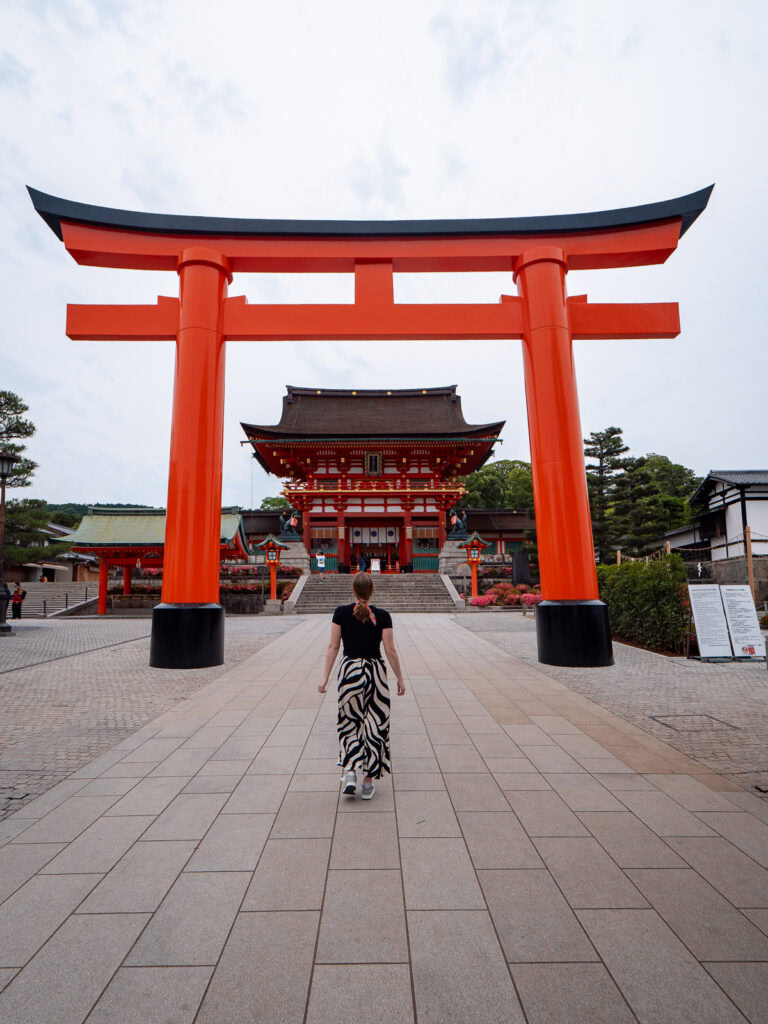
So when I was touring Sri Lanka with One Life Adventures last year and made some fantastic friends who were all keen to visit Japan, a reunion tour was the obvious solution! Five of us reunited in Tokyo almost a year after our first trip together, and along with six new friends and our guide Billy, we experienced two epic weeks of Japan’s highlights on the One Life Adventures Japan Classic 14 day tour.
From making hand-rolled sushi to learning Kendo from a samurai’s descendent, and from peaceful temple stays in lush mountain towns to belting out karaoke classics more than once, this tour exceeded all my expectations, filled my camera roll and smashed my weekly step count record, twice 💪🏼
If you’re considering booking a spot on One Life’s award-winning Japan Classic tour, here’s everything you need to know so you can decide if this trip is right for you.
SAVE 10% ON YOUR ONE LIFE ADVENTURES TOUR: The team at One Life Adventures have kindly given me a promocode to give you 10% off any One Life tour 💃🏼 just use the promocode FINDINGALEXX when you book, you can see all the tours right here.
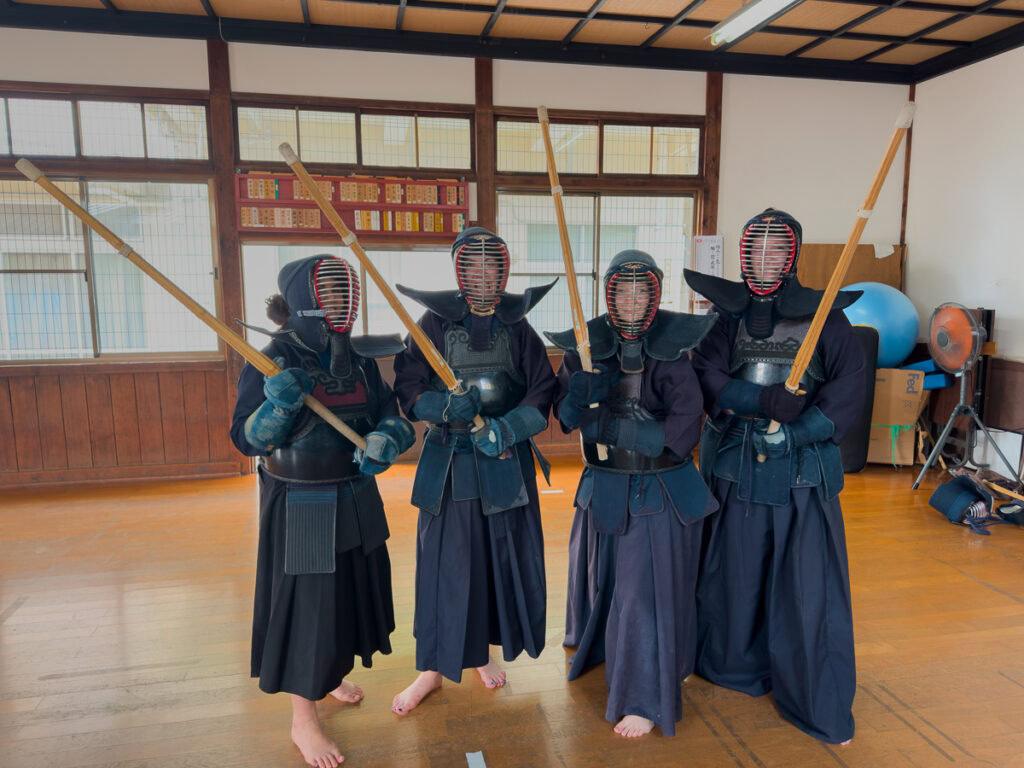
Table of Contents
Disclosure: One Life Adventures kindly hosted me on their Japan Classic tour, but they have no editorial control of this review and (as always) all opinions are my own and are based on my personal experience. There are affiliate links in this blog post which mean I get a small commission if you make a purchase, at no extra cost to you. These links allow me to publish ridiculously detailed blogs that hopefully are helpful for you, including this one!

A summary: Review of the One Life Adventures Japan tour
About One Life Adventures: One Life are a small group tour operator that run immersive culture and adventure trips for 18-45 year olds.
Tour itinerary: I did the 14 day/13 night Japan Classic, covering Tokyo, Hakone, Takayama, Kyoto, Osaka, Koyasan and Hiroshima. They also have a shorter 10 day tour which ends in Osaka, so no Koyasan or Hiroshima.

Tour accommodation: Quite a range! A simple twin hostel room with shared bathrooms, a couple of basic business hotels, two traditional temple stays, a guesthouse and a pod hostel. No option for solo travellers to upgrade to a private room unfortunately as this isn’t possible at the temple stay or pod hostel.
Tour guide: Our guide Billy was the perfect chaperone for our time in Japan, from expert navigation of Tokyo’s wild public transport network, to answering a million and one questions about history, culture and religion, to food recommendations that impressed us every time.
What was the group like: This tour was actually a reunion for five of us who met on the One Life Adventures Sri Lanka tour last year, plus I’d convinced another friend from a tour six years ago to join us too, so I knew half of the group already! All up there were 11 of us ranging from early 20s to early 40s, from New Zealand (1), Australia (1), Ireland (1), UK (2), Norway (1), Denmark (1), Iceland (3) and USA (1).
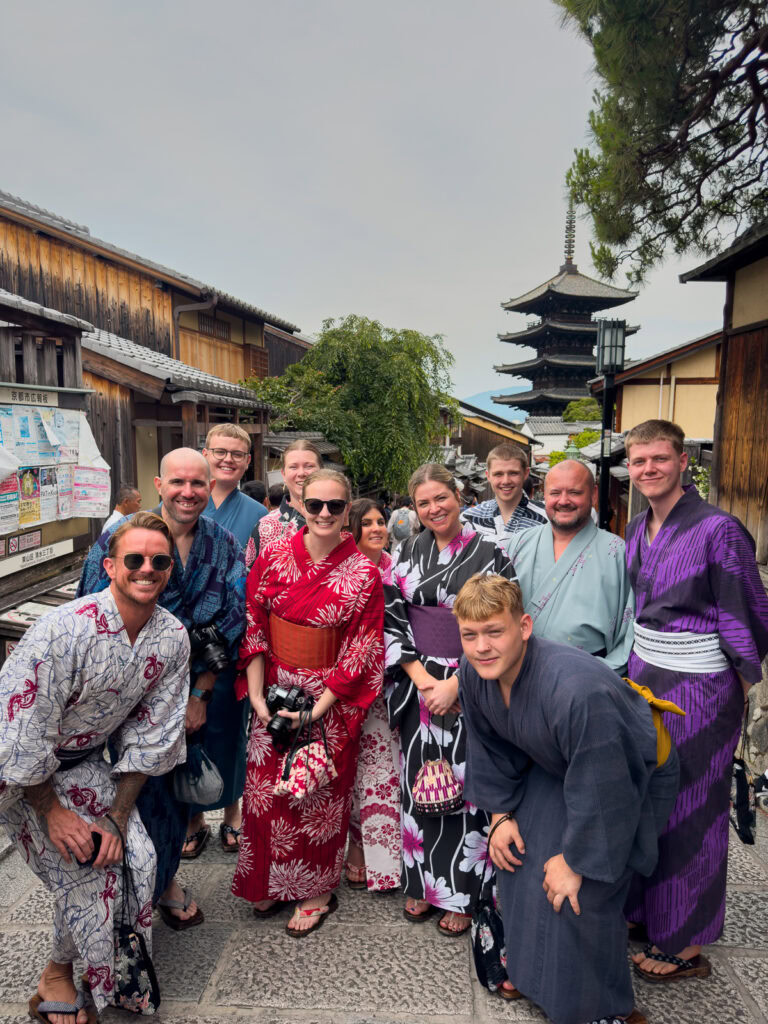
Included activities: One Life’s major selling point is that they include epic activities in the upfront tour price, so you don’t have to splash out every single day on optional extras because you’ve got FOMO and don’t want to miss out. The tour included a sushi making class, a Kendo class, sake tasting, a matcha tea ceremony, karaoke, and guided tours of loads of different city districts, temples and cultural sites.
Free time: The tour was pretttttty full on, but we did get at least a few hours of free time in every destination to explore independently or to rest and recuperate.
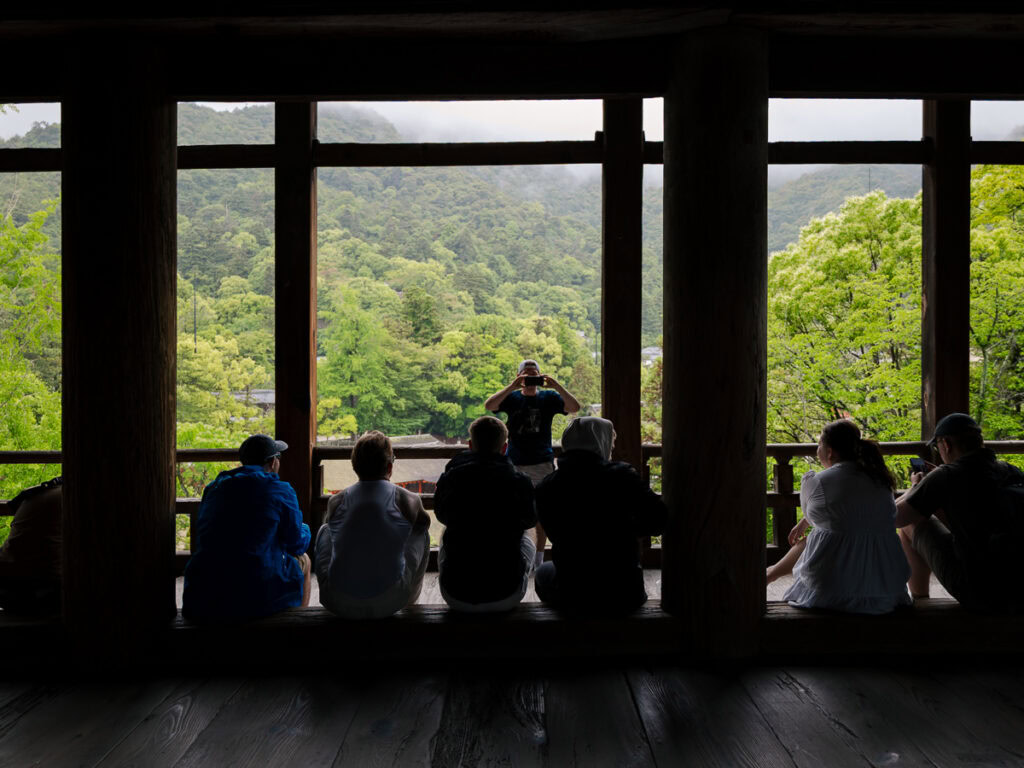
One Life Adventures Japan detailed tour review
Who are One Life Adventures?
One Life Adventures specialise in transformative adventure tours for 18-45 year olds, with itineraries that perfectly blend sightseeing, bucket list ticks and unique experiences that you’d struggle to get if you were travelling independently.
Their tour groups are small, up to 22 people, but all three of my One Life tours have been 11-16 people. Their official age limit is 18-45 years old but most of their travellers are 21-35, and on all three of my tours the average age has been late 20s to early 30s.
Solo travellers make up the majority of their guests (yay!) 💃🏼
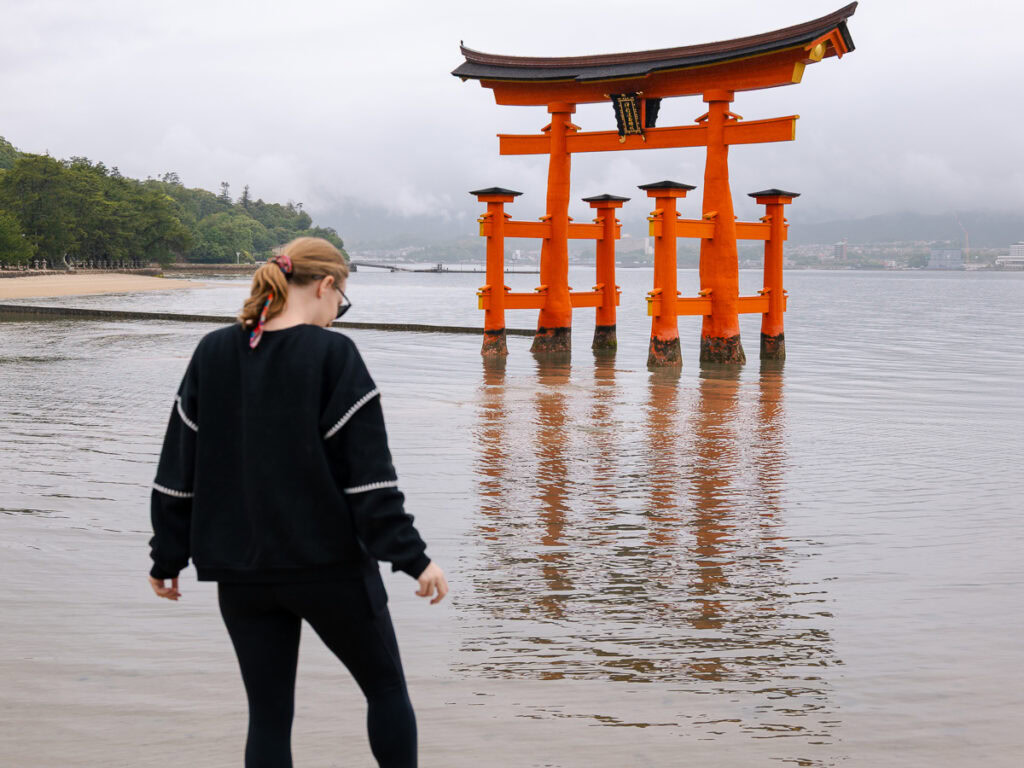
One Life Adventures has four types of tours: Classic, Snapshot, Essentials and Expedition.
Classic tours are their original tour style, offering in-depth exploration over 10-15 days. Loads of activities are included in the tour price, from immersive cultural experiences to local cuisine to nature hikes and more. If you want to make the most of your annual leave and travel savings, this is the way to go!
P.S. This review is about the Japan Classic (14 day) and you can read my review of the Sri Lanka Classic here
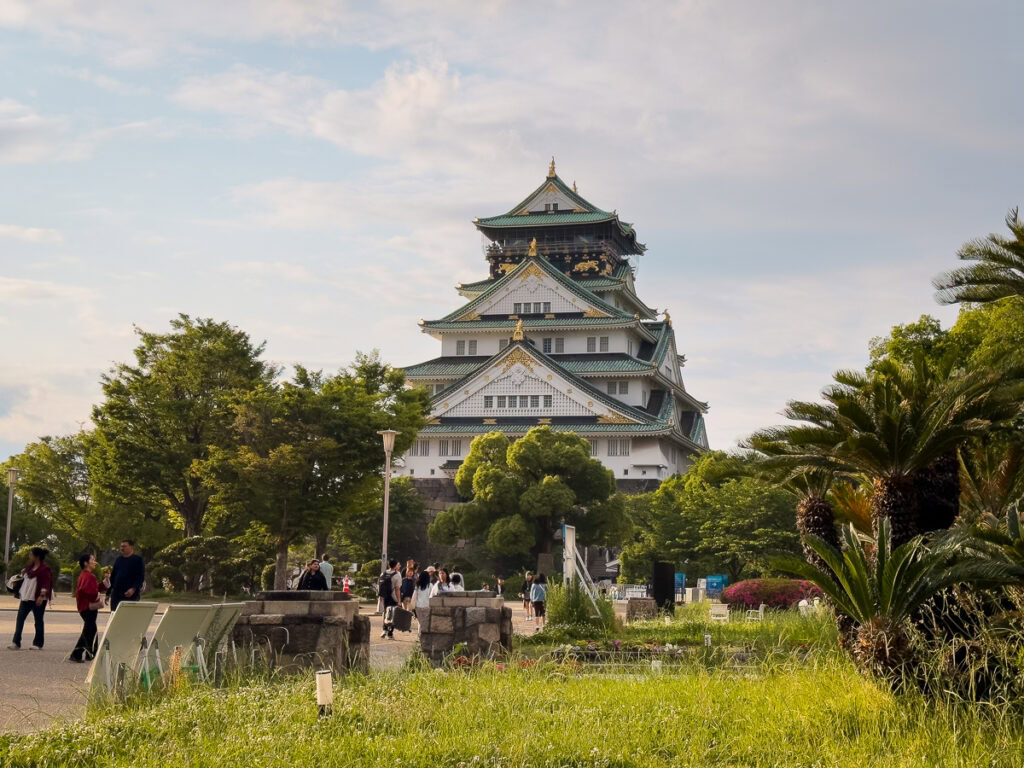
Snapshot tours are short but sweet, 4-7 days, and usually they’re just segments of the longer tours (e.g. the Osaka Hiroshima Snapshot is the last five nights of the Japan Classic). Perfect if you’re short on time but still want the One Life experience.
Essentials tours are for budget-conscious travellers, they keep prices low with basic accommodation, fewer activities included so you can pick and choose the optional ones you actually want to do, and the same expert One Life guides to show you around the country.
And finally, the Expedition tours are 18-23 days of adventure for you to truly leave all your home worries behind and dive head first into exploring somewhere new with a bunch of like-minded travel buddies.
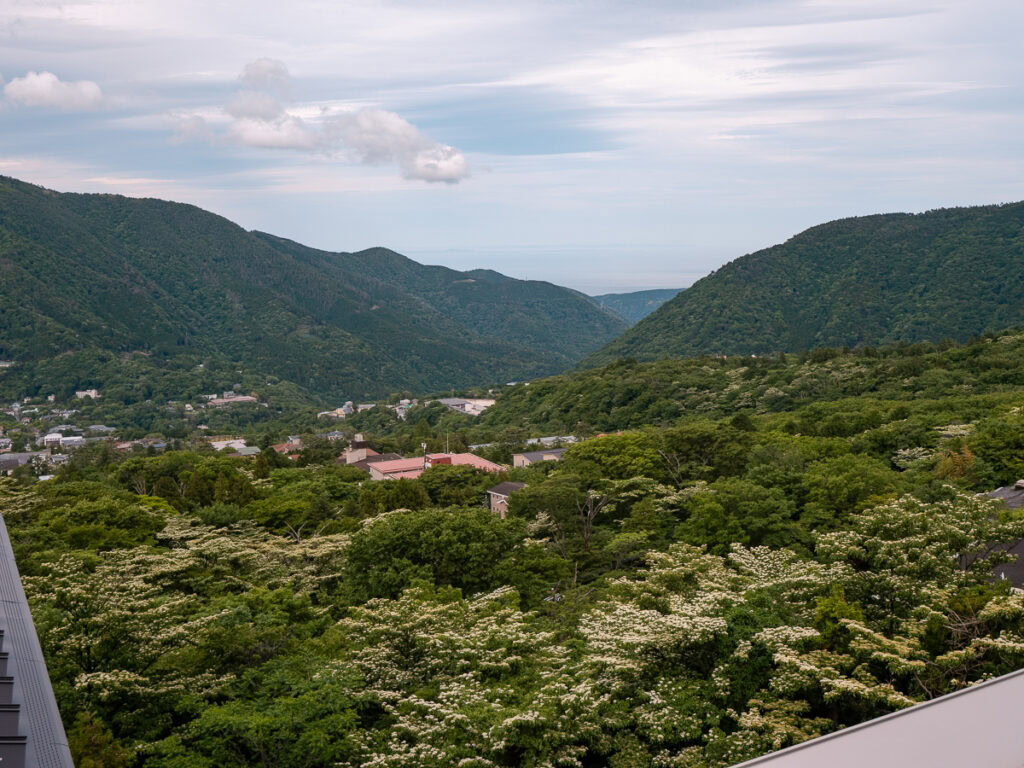
Asia is their bread and butter (orrrr should I say rice and soy sauce 🙃) but they’ve recently expanded outside of the continent with Costa Rica and Morocco on offer now too. I’m crossing my fingers that their expansion continues!
Another big part of One Life’s brand is their focus on responsible tourism. This side of their business is more obvious in developing countries where tours engage in community projects on the ground (like Sri Lanka and the Philippines), on the Japan tour it’s more subtle and woven into the itinerary, like visiting busy places early in the morning to avoid contributing to overcrowding, or the guides making it clear that animal cafes are not something One Life recommends.

Why visit Japan with One Life Adventures?
I’ll start with the big one: Their Japan Classic tour won TourRadar’s Tour of the Year in 2019, which was the last time the awards were held (paused during the pandemic and haven’t yet returned). Not bad!
Their 14 day Japan Classic tour has a seriously impressive 4.9/5 rating on TourRadar from more than 800 guests, and the 10 day Japan Classic boasts 4.8/5 from more than 2200 travellers.

And here are some other reasons why I’d recommend booking a One Life Adventures tour for Japan:
- Small groups (22 at the most but my group was only 11 people) which are much more manageable than a bus-load of people in busy places like Tokyo and Osaka
- You’ll use Japan’s brilliant public transport network to get around, no issues with traffic. We used trains (including the Shinkansen bullet train 🚅), metro, buses, funiculars, trams and boats.
- Loads of inclusions that take your trip from fun to unforgettable, like sushi-making in the first couple of days to bond with your tour group, an epic Kendo class, karaoke on a big night out in Osaka and more
- Solo travellers are welcome! No single supplement, you’ll just be roomed with another solo traveller of the same gender
- Walking tours with local guides are included in Kyoto and Hiroshima to get an in-depth understanding of history and culture
- A good mix of organised sightseeing coupled with free time to do your own thing
- Not one but two temple stays at working Buddhist temples
- Covers the iconic Golden Route of Japan (Tokyo, Mt Fuji, Kyoto and Osaka) plus takes you to Hiroshima, the old city of Takayama and the spiritual town of Koyasan
- You can get 10% off with the promocode FINDINGALEXX when you book direct on their website

Where did the One Life Adventures tour take us?
Our Japan adventure started in Tokyo on the evening of day 1 and we had two full days there.
Day 4 took us into the mountains with an overnight stay in Hakone, day 5 to the charming historic city of Takayama, day 6 to Kyoto with two full days there on day 7/8.
Day 9 we headed to Arashiyama first before making our way to Osaka, with a full day there day 10. Day 11 was Nara in the morning and then Koyasan overnight, day 12 onto Hiroshima, day 13 over to Miyajima Island for the day before finishing up with our final night back in Hiroshima. Phew!
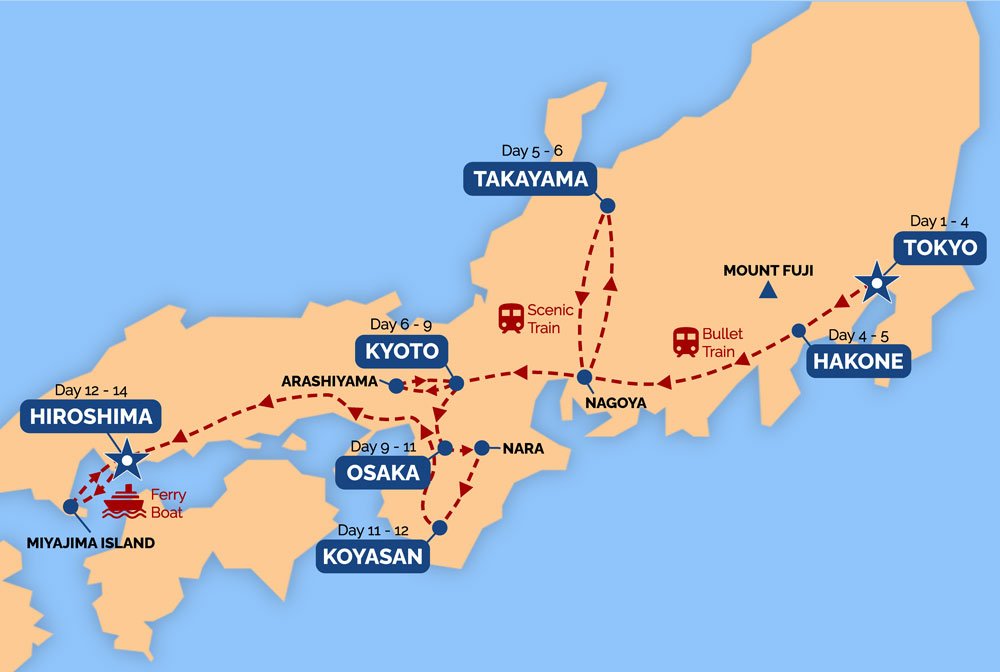
Highlights from our One Life Japan tour
I’ve shared a much more detailed travel-diary-style breakdown of our tour day by day down below, but if you just want to know what parts of the tour stood out to me (and what you should be looking forward to the most!) then here’s a quick summary.
- Exploring a bunch of Tokyo’s hot spots without having to deal with the nightmare logistics myself 🙃 The tour covered places like Senso-ji Temple, Harajuku, Meiji Shrine, Akihabara, Omoide Yokocho and the Shibuya Crossing.
- Finding my teenage-self’s favourite Dance Dance Revolution track (Love Shine if you’re wondering) on a machine in Akihabara and absolutely nailing it with an perfect score 15 years after I last did it 💃🏼
- Fresh mountain air in Hakone
- The yuzu truffle salmon I had in Hakone at Gora Brewery (one of the best salmon dishes I’ve ever had in my life omg)
- Literally everything about Takayama! The beautiful temple stay, an epic cocktail bar our guide Billy took us to, Hida beef skewers, a fancy onsen at a hotel nearby during free time

- A somewhat impromptu biiiig night out in Kyoto
- Kendo class! So much fun, learning about the history of kendo from the descendent of an actual samurai 🤺
- Getting all dressed up in a kimono for a matcha tea ceremony and some cute photos
- Seeing some of Kyoto’s hot spots without the crowds with very early morning visits, like the Fushimi-Inari Shrine and Arashiyama Bamboo Forest
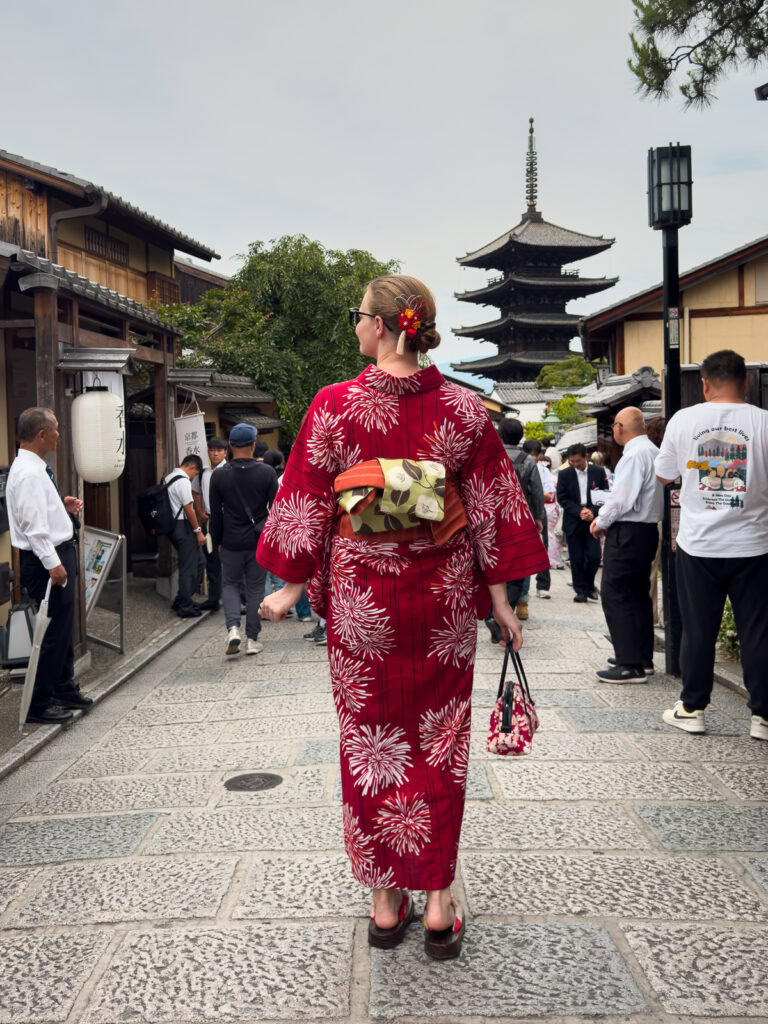
- The fact that we couldn’t go more than two or three hours without stopping at a konbini for snacks
- OBENKEI Sushi and Chao Chao Gyoza in Kyoto
- An included karaoke session in Osaka
- Okay confession, some of us actually did karaoke four out of the 13 nights (30% hit rate, impressive) but the Osaka one was the whole group and included in the tour
- Wagyu beef skewers every second or third day
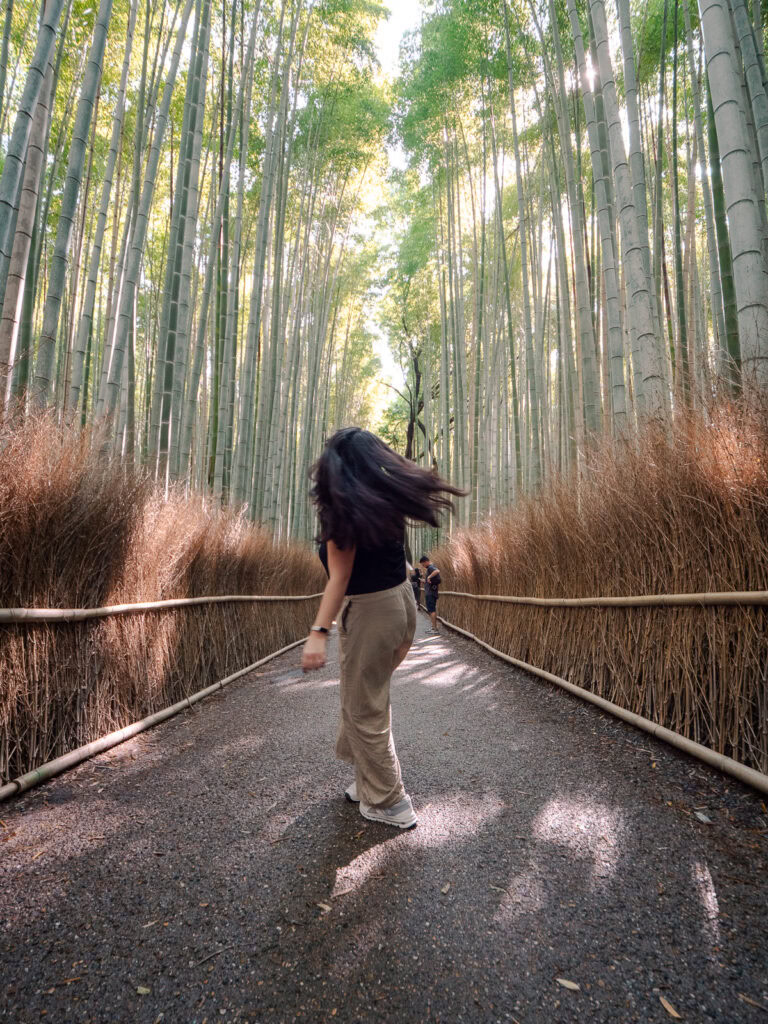
- Peace and quiet in beautiful Koyasan to recover from the big cities
- The private onsen at our temple stay in Koyasan
- A walking tour in Hiroshima with a passionate and super knowledgeable local guide
- The famous Itsukushima Shrine with its floating torii gate on Miyajima Island
- Gummy bear cocktails at 1pm on the final day at a place that offered 200yen refills (that’s $1.38USD 🤯)
- Our final family dinner (not included but we all loved each other enough to want to spend the last night together) and night out, finishing with karaoke, obviously!
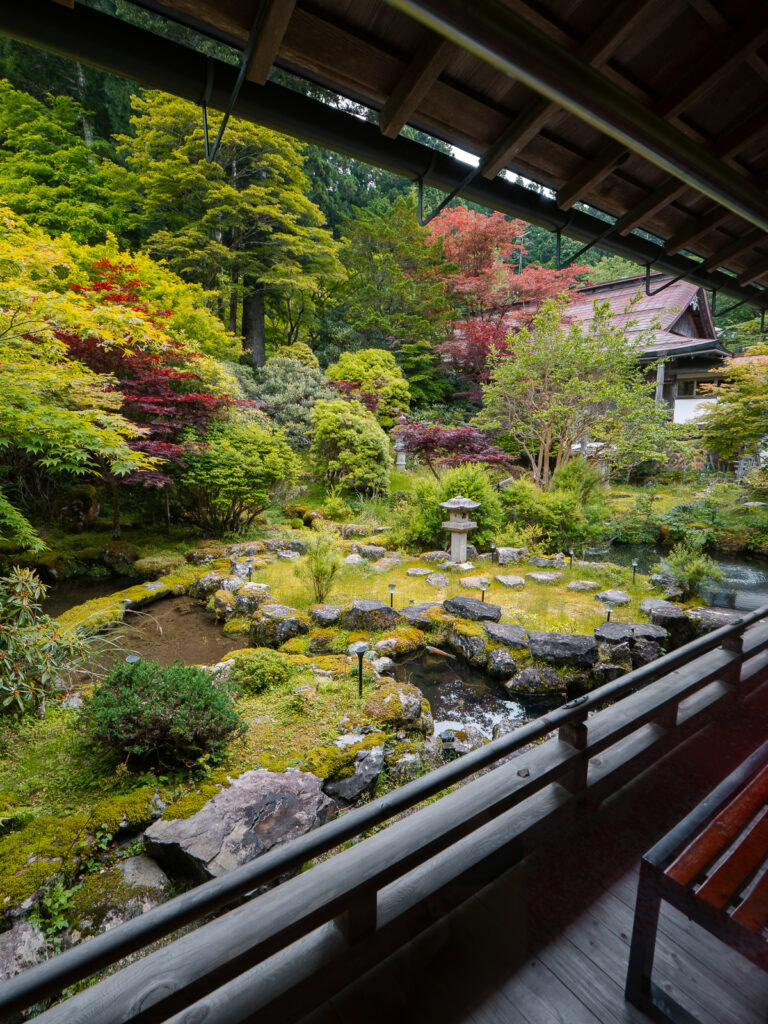
What was the tour group like?
So much fun 💃🏼
Five of us were travelling together for the second time, after we all travelled solo to Sri Lanka and met on tour there. I convinced another friend to join too, I knew six others already.
All up we ranged from early 20s to early 40s, with five young ‘uns between 20-22, one 25 year old, four of us in our 30s and one early 40s. There were four of us gals and seven guys, the first tour I’ve ever been on with that ratio!
There was one group of three friends, our reunion of five ex-tourmates but we’ve only actually met once so I’ll count us as solo too, and the others were solo. No couples (well, no couples at the start of the trip anyway 👀).

What was the tour guide like?
Billy is a legend! He’s 25 years old from Scotland, not exactly who I’d expect to be guiding tours in Japan, but he was absolutely perfect for our group.
He managed to herd us confidently through some of the busiest transport hubs in the world (despite three guests who for some reason only ever turned left, the opposite of Zoolander), always ensured we had the info we needed to enjoy our free time, and organised loads of extra family time with restaurant, bar and karaoke suggestions which he always joined us for.
Every adventure comes with a few misadventures, in the form of lost belongings or illness or weather issues, but Billy kept cool and calm with everything that was thrown at him. A good guide can make a huuuuge difference to the group dynamic and he was without a doubt one of the reasons why our group gelled so well together.
We liked him so much that we’ve invited him to join our next reunion tour in India next year ✈️
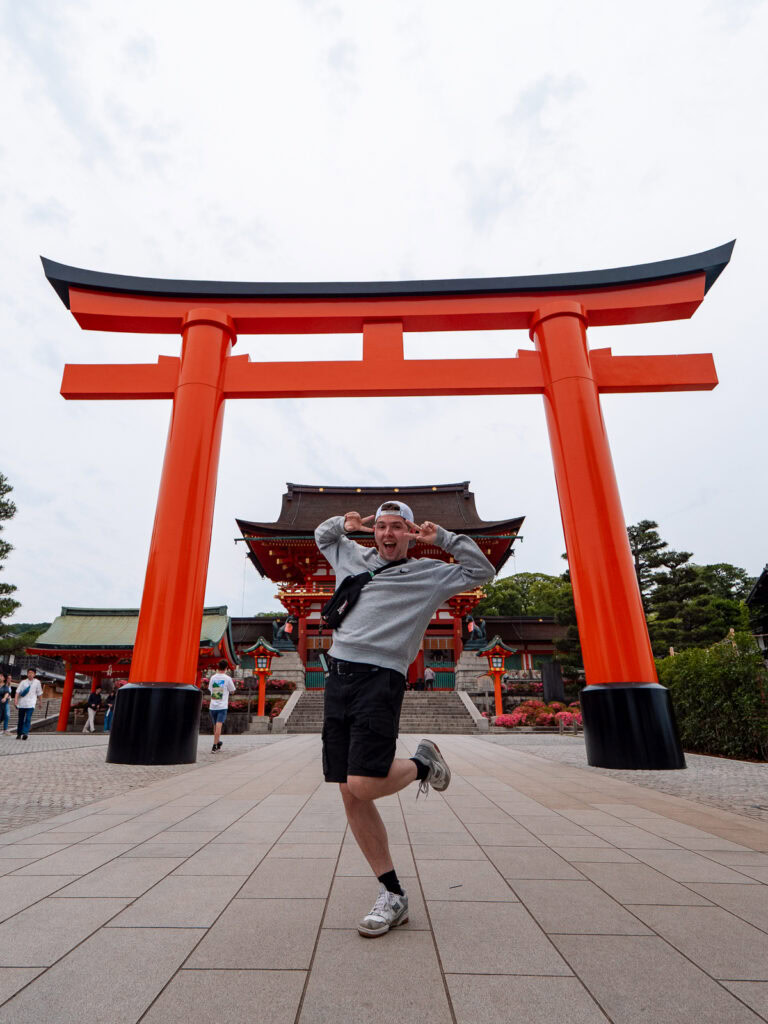
What was the pace and vibe of the tour?
I’d say it was a fast-paced tour while still being manageable. We covered a lot of ground and ticked off a lot of bucket list experiences, but there were always a few hours of free time in each new destination to either do your own thing or take the time to rest.
Our group got along so well that we mostly spent our free time together haha which made the tour feel more full on than it actually is! We all had loads of fun but I was running on very limited sleep by the end of it. I’d recommend giving yourself at least a recovery day or two as a buffer before you go back to work.
There are quite a few early mornings to see the busy tourist spots before the crowds descend at 9am, with only a couple of opportunities for sleep ins. Most evenings of the tour are free time, so if you know you need your downtime then it would be best to use those wisely.
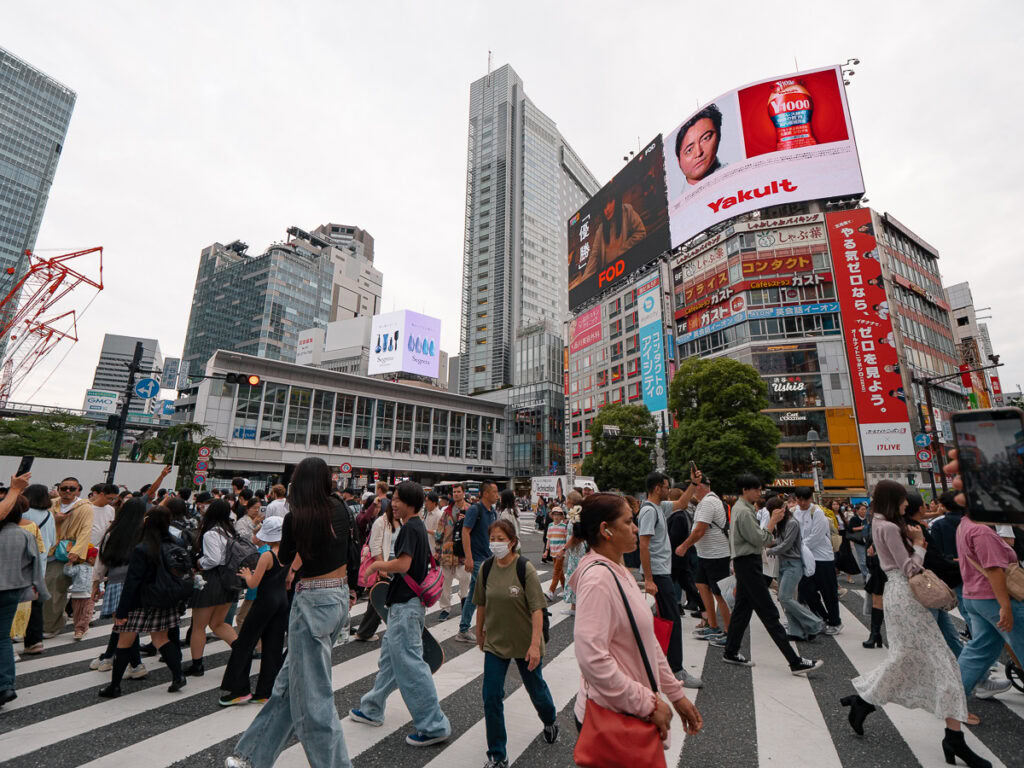
There is a lottttt of walking involved, Japan is a high-step-count destination, most days we were hitting anywhere from 18,000-28,000 steps, so you need to have good shoes and be okay with lots of time on your feet.
If you’d struggle with this then I’d recommend booking a bus tour which gives you door-to-door transport instead of using public transport like we did.
In terms of vibe, One Life tours are all about having fun, whatever that means for you! They’re not huge party tours like some other youth travel companies but you can absolutely go out if you want to, you could spend your free time at gaming arcades or shopping or at museums, or you could find an onsen in every town/city and soak your worries away each evening.
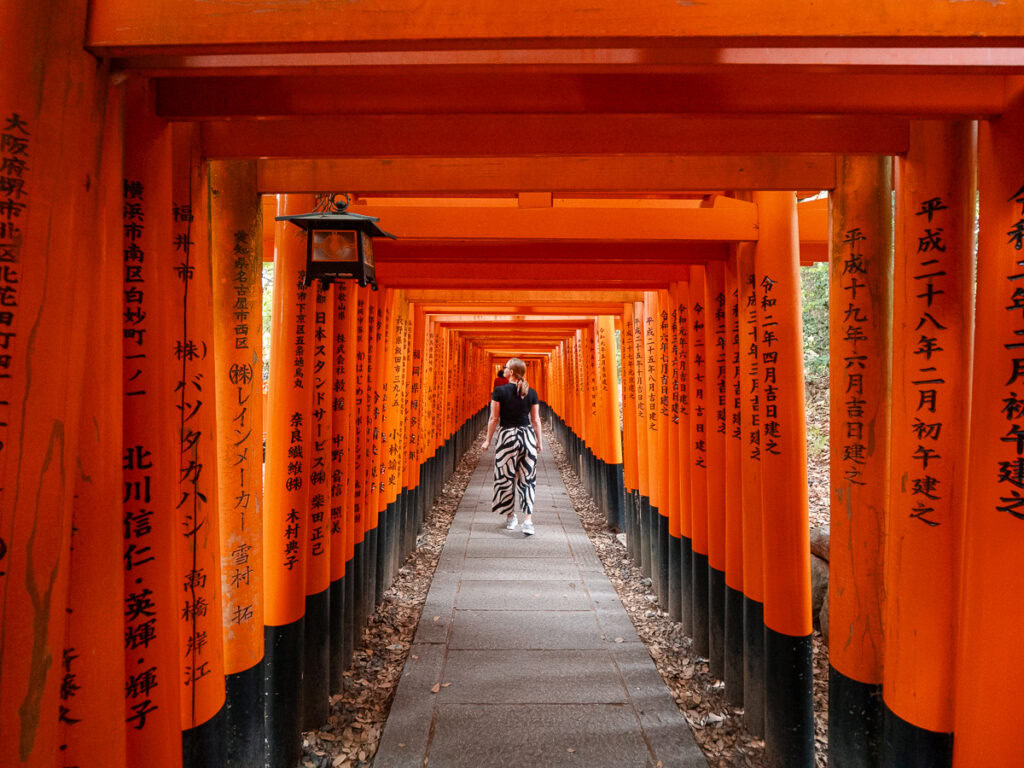
There’s one kind of recommended night out in Kyoto (lots of fun bars within walking distance of the hostel) as well as a designated party night in Osaka (included karaoke session + nothing the next day until 2.30pm) but if this isn’t your vibe you can choose to skip them, or just come for a little while, or go all out and watch the sunrise as you walk home.
You’ll notice in the day-by-day breakdown below that I did enjoy a fair few late nights out, but this was absolutely a personal choice and most of the group were more balanced than I was. I travel solo most of the year and I never ever drink or go out when I’m somewhere alone, so when I’m on a tour with people who I feel safe with, I make the most of bars, cocktails and dancefloor bangers.
I also suffer from severe FOMO and literally cannot go home before all my friends are ready to go too which is a problem I have never been able to overcome 🙃
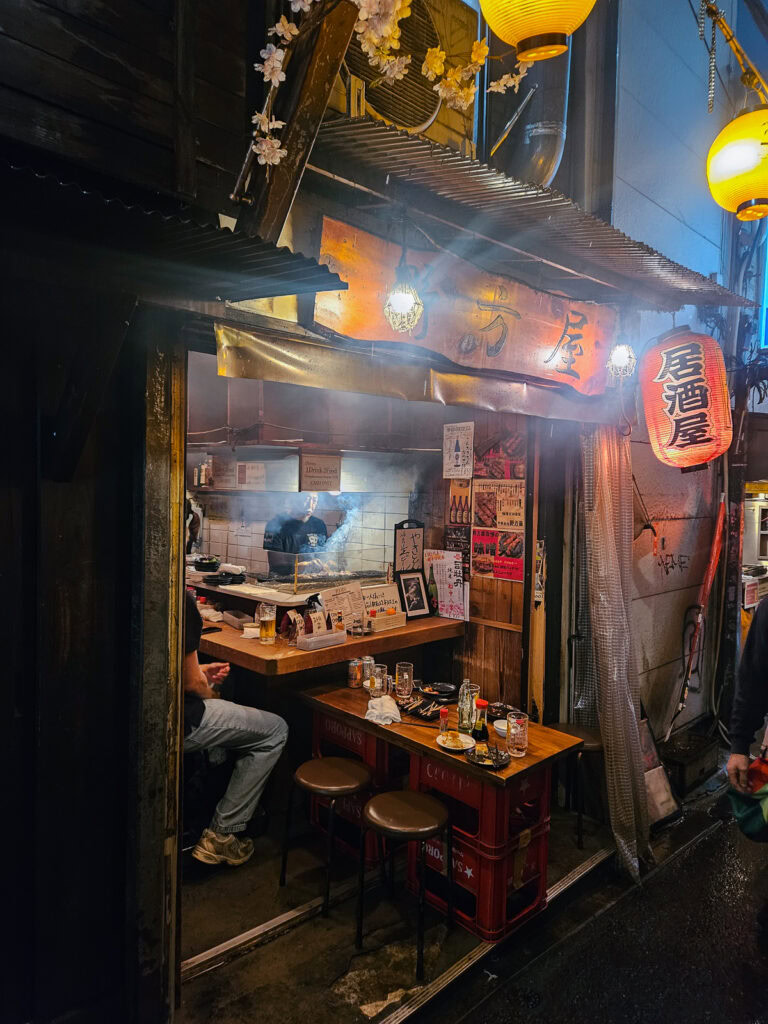
What activities were included?
I’ll hit you with a bullet point list for this one:
- Welcome dinner in Tokyo, we had shabu-shabu
- Some of Tokyo’s main spots like Senso-Ji Temple, Harajuku, Shinjuku and Akihabara
- Sushi-making class at Tsukiji Market
- Shibuya Crossing
- Dinner at the guesthouse in Hakone
- Temple stays in Takayama and Koyasan
- Gion guided tour with a local in Kyoto
- Kendo class
- Matcha tea ceremony

- Fushimi-Inari Shrine (the famous red torii gates), Kiyomizu-Dera temple and the Golden Pavillion in Kyoto
- Arashiyama Bamboo Forest, Monkey Mountain and a scenic boat ride
- Dotonbori food crawl in Osaka
- Karaoke in Osaka
- Nara Park & temples
- Traditional temple-style dinner and breakfast at the temple stay in Koyasan
- Danjo Garan Complex in Koyasan
- Guided tour from a local in Hiroshima
- Tour of Miyajima Island and Itsukushima Shrine
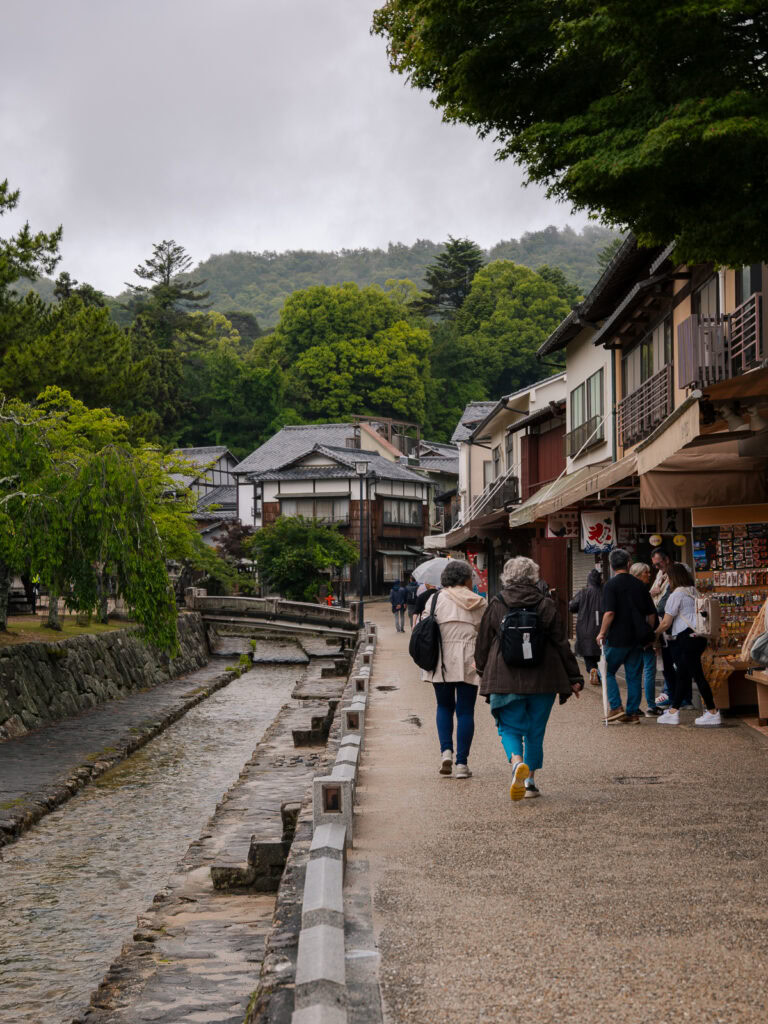
What was the accommodation like?
Like any tour the accommodation is subject to change, but here’s some info on each of the places we stayed:
- Tokyo, Sakura Hotel Nippori: Basic twin bunk rooms with shared bathrooms, clean and comfortable enough.
- Hakone, Gaku Guesthouse: Chilled out guesthouse with Japanese-style twin rooms with tatami mats + shared bathrooms. Perfect location just a few minutes from the train and funicular station if you want to go exploring.
- Takayama, Temple Hotel Zenkoji: A highlight of the trip! A working temple with big Japanese-style family rooms (one for boys, one for girls) and the chance to witness morning prayers and take part in morning meditation.
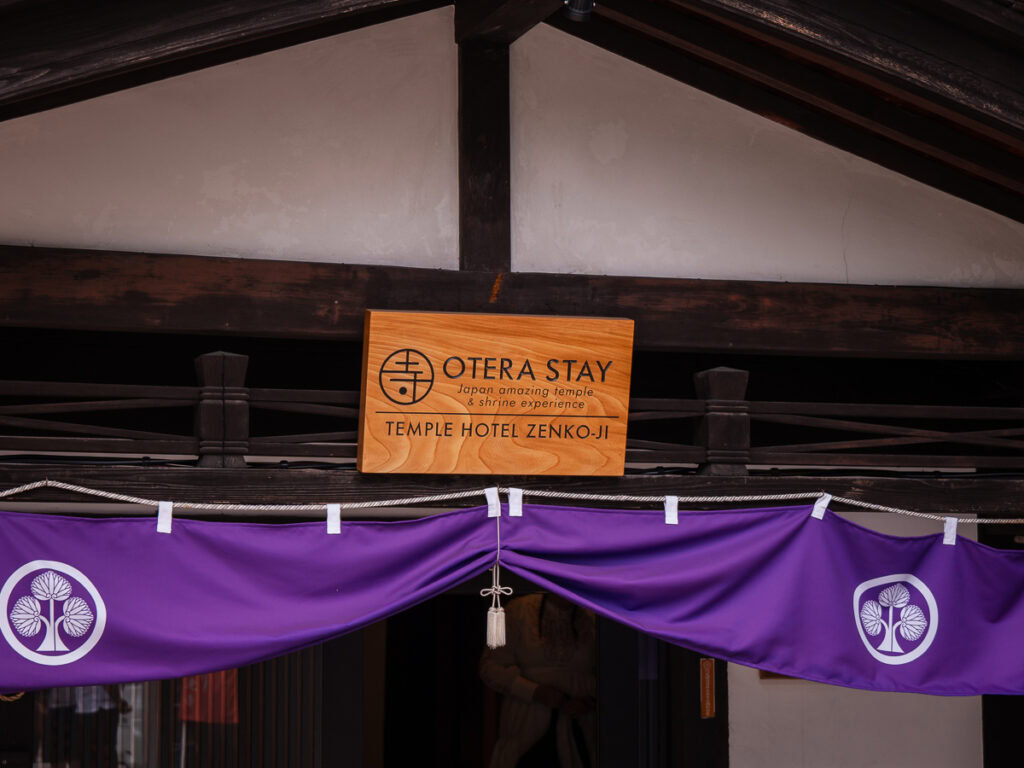
- Kyoto, Ryokan Hostel Gion: Quintessential little pod hostel in the Gion district, the tour group had two rooms (one for boys, one for girls) and we shared bathrooms with other travellers. Would stay here again for sure.
- Osaka, Hotel WBF Namba Motomachi: Simple business-style hotel 7 mins from Namba station, comfortable but veryyyy small twin rooms.
- Koyasan, Daimyoo-in shukubo (temple stay): Beautifully peaceful temple stay with Japanese-style twin rooms, plant-based breakfast and dinner included, private onsen available for guests.
- Hiroshima, Hotel Kuretakeso: Another simple business hotel with compact twin rooms, great location right by the tram to Hiroshima station.
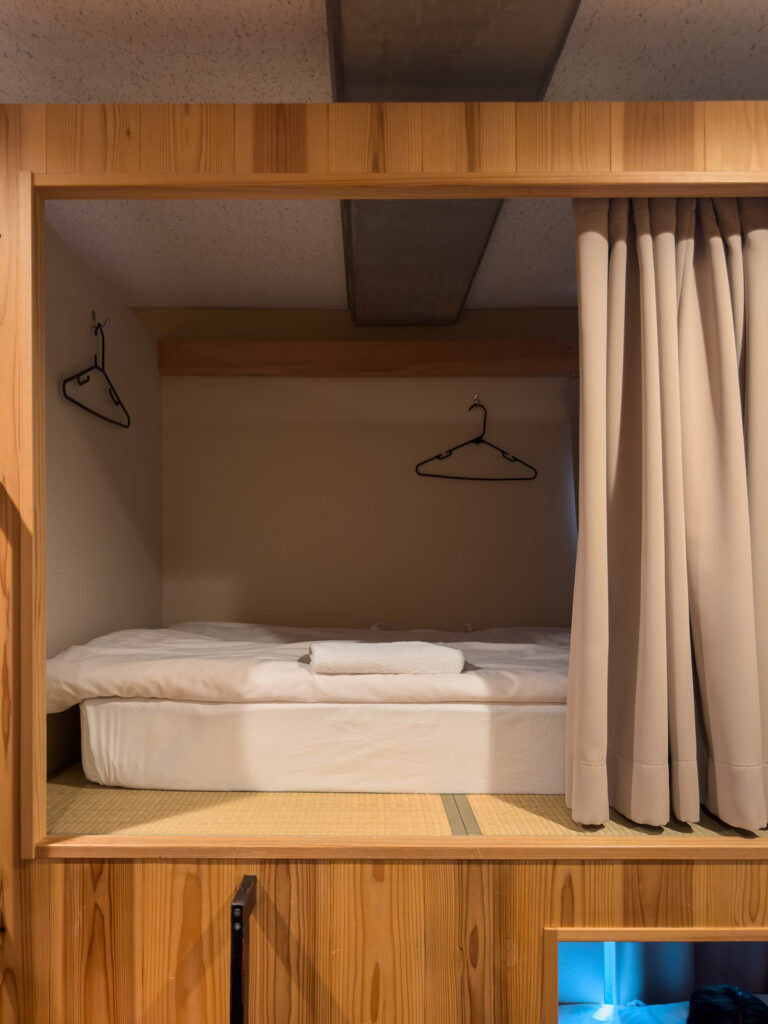
What was the transport like?
We utilised Japan’s ultra-efficient public transport network to get around the country, with a few Shinkansen bullet trains plus regional trains, funiculars, city buses and streetcars.
Everyone has to carry their own bags so it’s essential that you only pack what you are willing to carry, most hotels are within easy access to public transport (within a 5-10 min walk from the nearest station/stop) but when you’re hot and tired after a long travel day you won’t want to be carrying 25kg on your back even for 10 minutes.
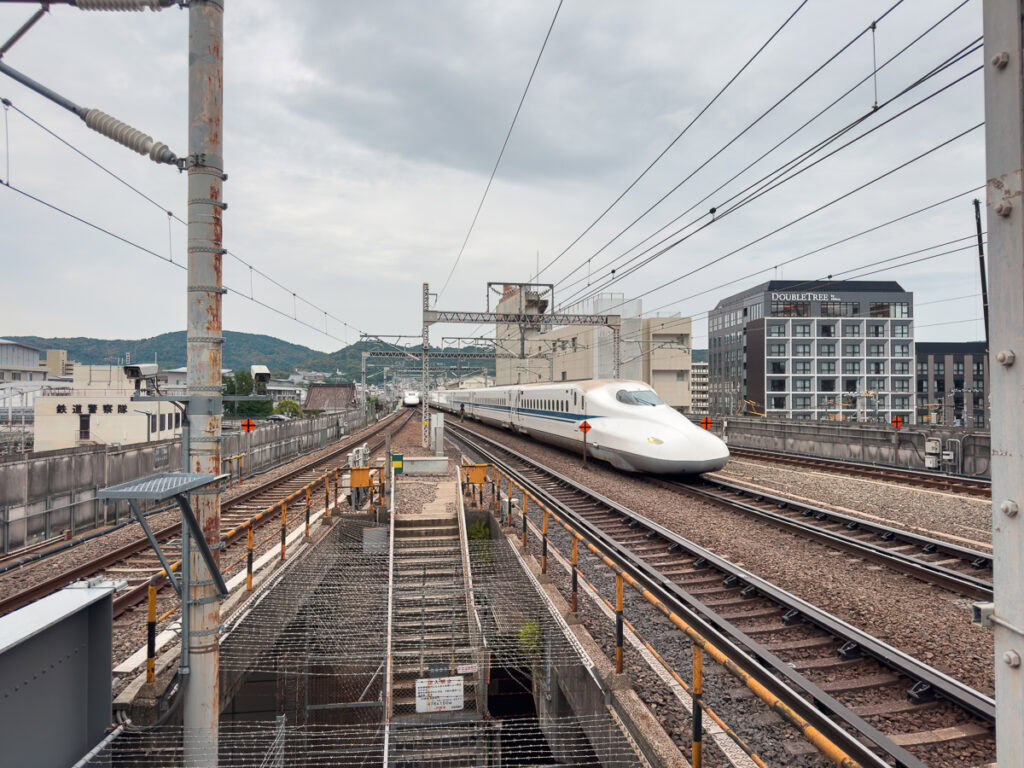
There are some opportunities to use the luggage transfer service that Japan is famous for, where you organise to have your suitcase sent from one hotel to your next one in another city overnight, and the guide will let you know in advance when this is an option.
I did this twice, first from Tokyo to Kyoto, then Osaka to Hiroshima, and it cost 2000-2500JPY each time (about $14-17.50USD). If you want to do this then you’ll want to bring an overnight bag with you so you can pack your essentials in that while you send your heavy bag.
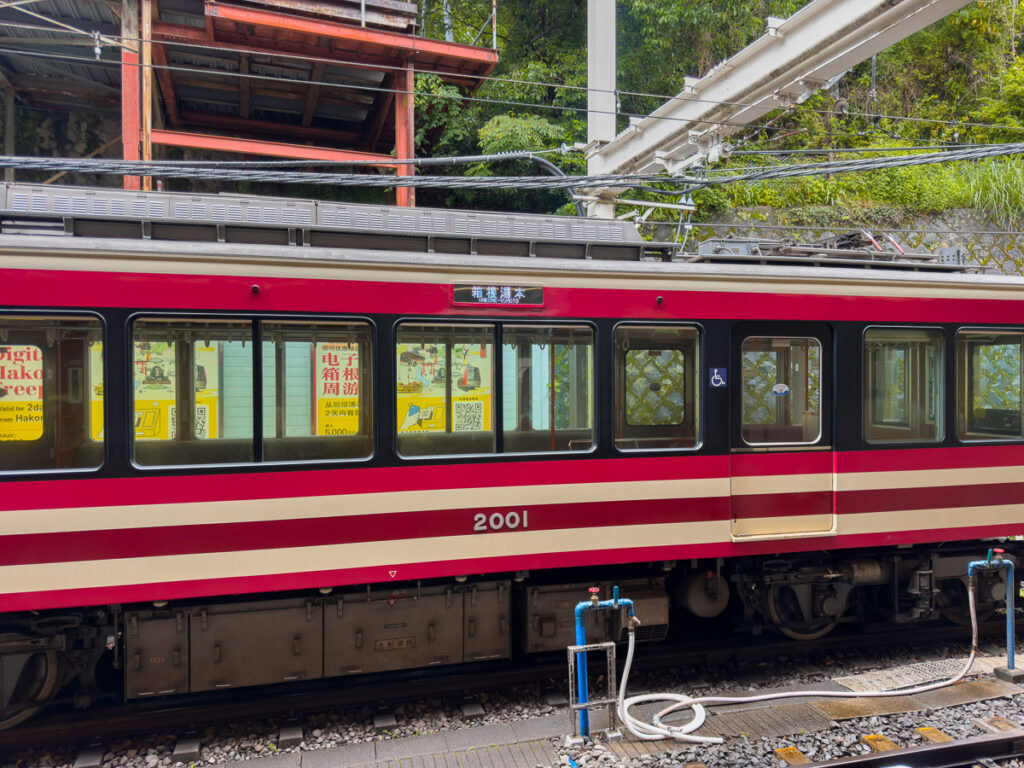
Was there much free time?
There was a decent amount of free time sprinkled throughout the tour, with at least a few hours for you to explore independently in each location.
There are no full free days though, so if you want to do any full-day activities like theme parks or day trips then you’ll need to give yourself extra time before or after the tour.
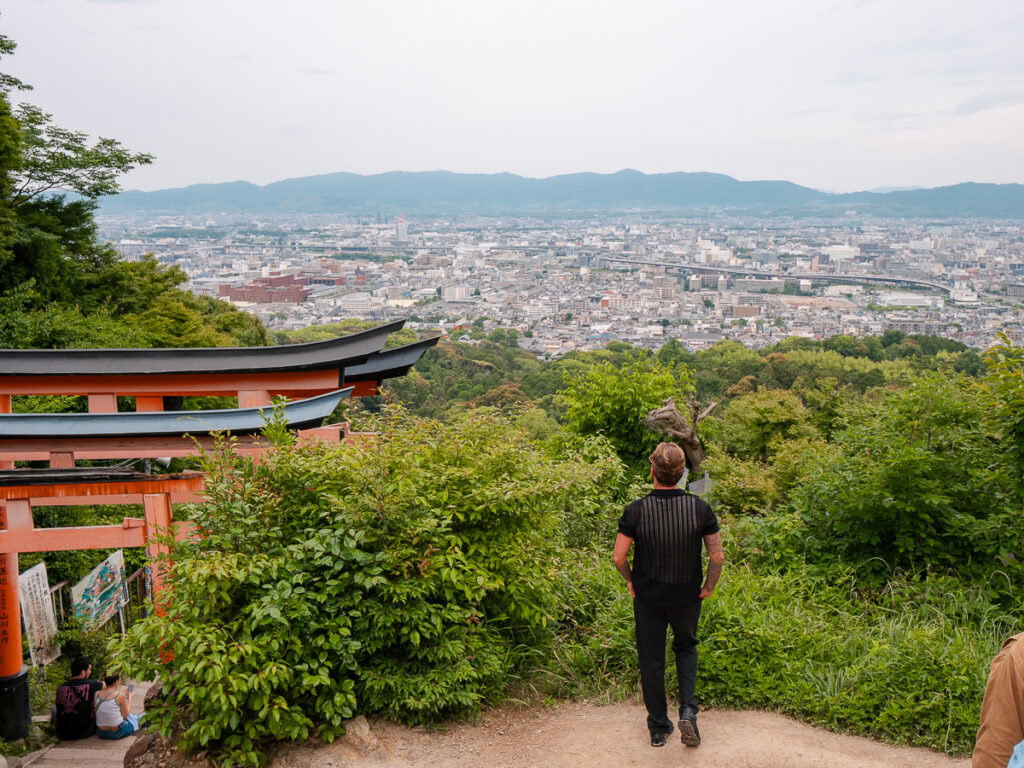
What food was included?
The tour includes 7 breakfasts (one plant-based breakfast at the Koyasan temple stay, the rest are simple hotel breakfasts), one lunch (the sushi you make yourself at Tokyo’s sushi class) and 4 dinners (welcome dinner, hot pot dinner in Hakone, Dotonbori food crawl dinner in Osaka, and temple dinner in Koyasan).
We stopped at konbinis (convenience stores) constantly throughout the day to get food, this is the way they do things in Japan! There are konbinis every few hundred metres so you’re never far from one.
Most of the hotels/hostels have fridges either in the rooms or in shared common areas if you want to get smoothies or chilled food to have for breakfast or for snacks.
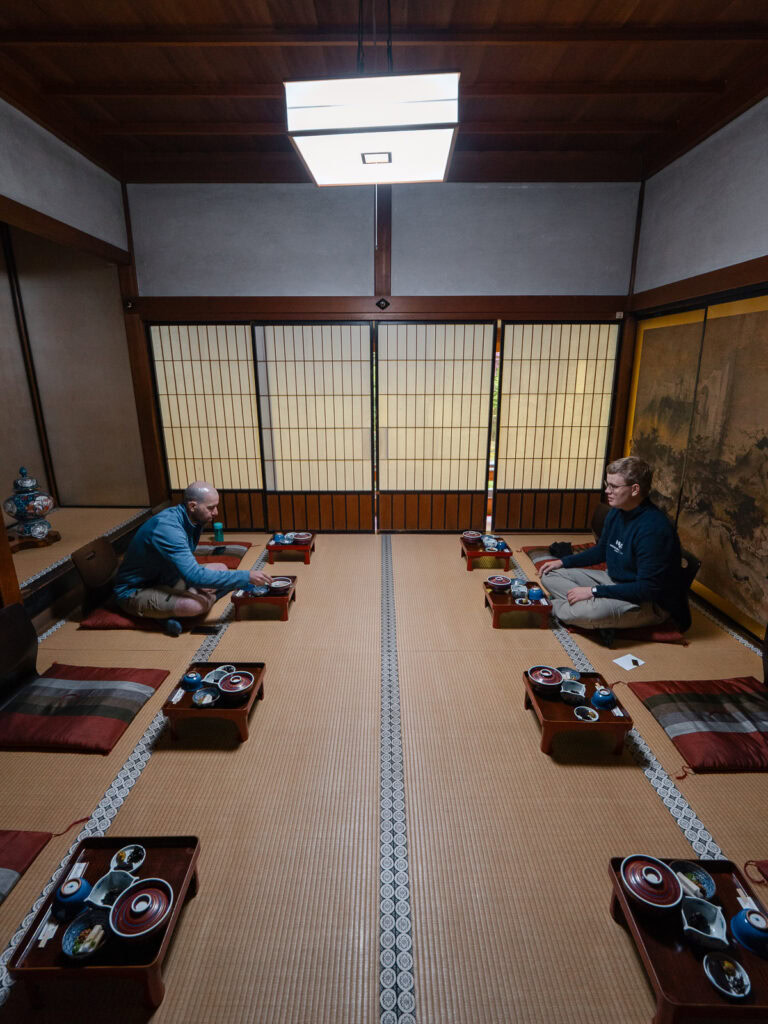
This tour is right for you if…
- You want to explore Japan without having to navigate confusing transport networks alone or research every single city in detail
- You’re solo but want to do fun group stuff like sushi making, Kendo class and karaoke
- You’ve only got two weeks and want to cover a decent amount of ground
- You’re looking for a mix of organised sightseeing/experiences as well as bits of free time
- You’re happy with early morning starts to hit the hot spots before they get too busy
- You can handle long days on your feet
- You’re comfortable with simple accommodation and casual (and delicious) eateries
- You want to combine bucket list locations, peaceful spots that are less popular, a bit of history, a lot of culture, and loads of good food
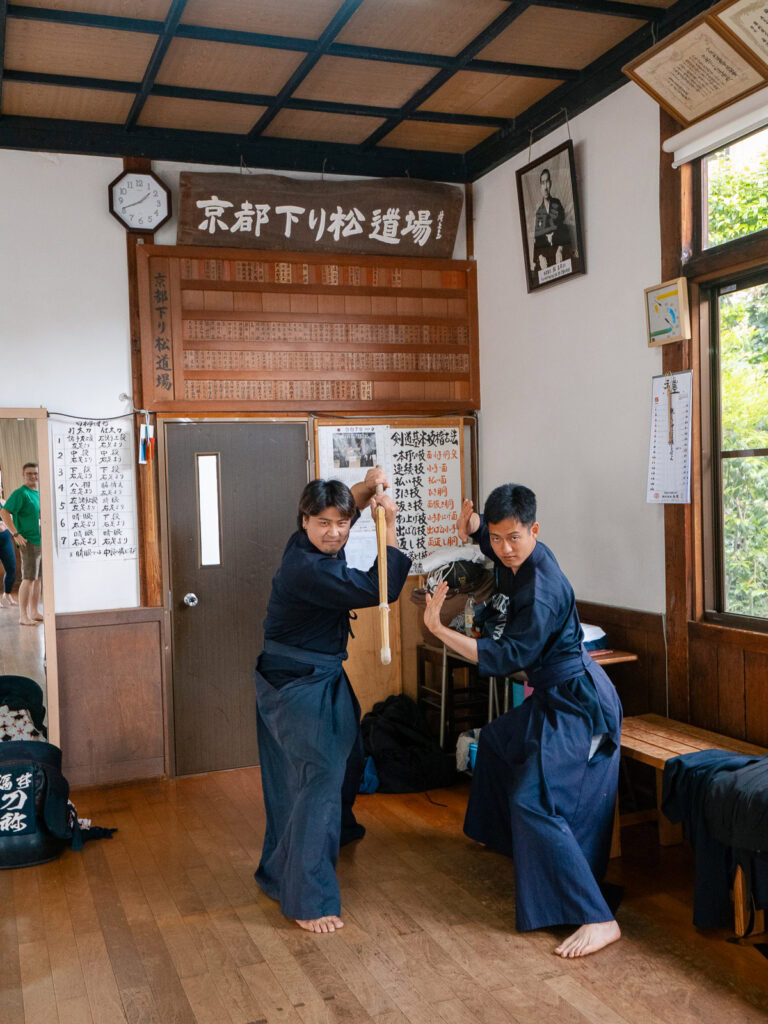
This tour isn’t right for you if…
- You prefer to travel at a slow pace with 4-5 days per stop
- You’ve got less than two weeks (check out the 10 day Japan Classic or the 6 day Osaka Snapshot)
- You’re on a tight budget (check out the Japan Essentials tours which are more budget-friendly with fewer inclusions)
- You want luxury accommodation and private transportation
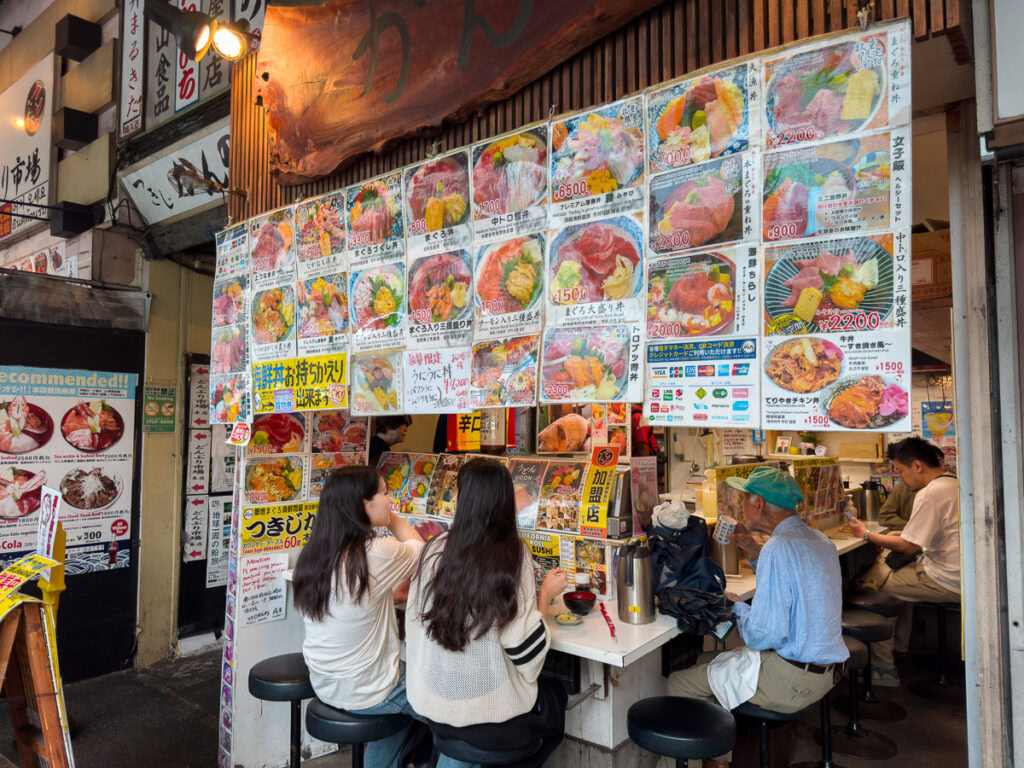
Japan One Life Adventures tour: Day-by-day itinerary
If you’re still reading this then I’m going to assume you’re an over-analyser like me, I like knowing exactly what I’m getting into when I’m booking a trip! Luckily for you I’m also an over-sharer, so here’s my travel diary of our epic two week Japan Classic tour with One Life Adventures.
The full two-week Japan itinerary with One Life Adventures
Day 1: Arrival in Tokyo
Day 2: Harajuku, Yoyogi Park & Akihabara
Day 3: Sushi class & Shibuya Crossing
Day 4: Tokyo to Hakone on the Romance Car
Day 5: Hakone to Takayama for a temple stay
Day 6: Takayama market, train to Kyoto, Gion walking tour
Day 7: Golden Pavilion, Zen Garden & Kendo Class
Day 8: Kiyomizu-Dera, Fushimi-Inara & tea ceremony
Day 9: Bamboo Forest, Monkey Mountain, Osaka food tour
Day 10: Osaka Castle Gardens & free time
Day 11: Nara Park & Koyasan temple stay
Day 12: Koyasan to Hiroshima, Hiroshima walking tour
Day 13: Miyajima Island, Itsukushima Shrine, final night fun!
Day 14: Depart 😭
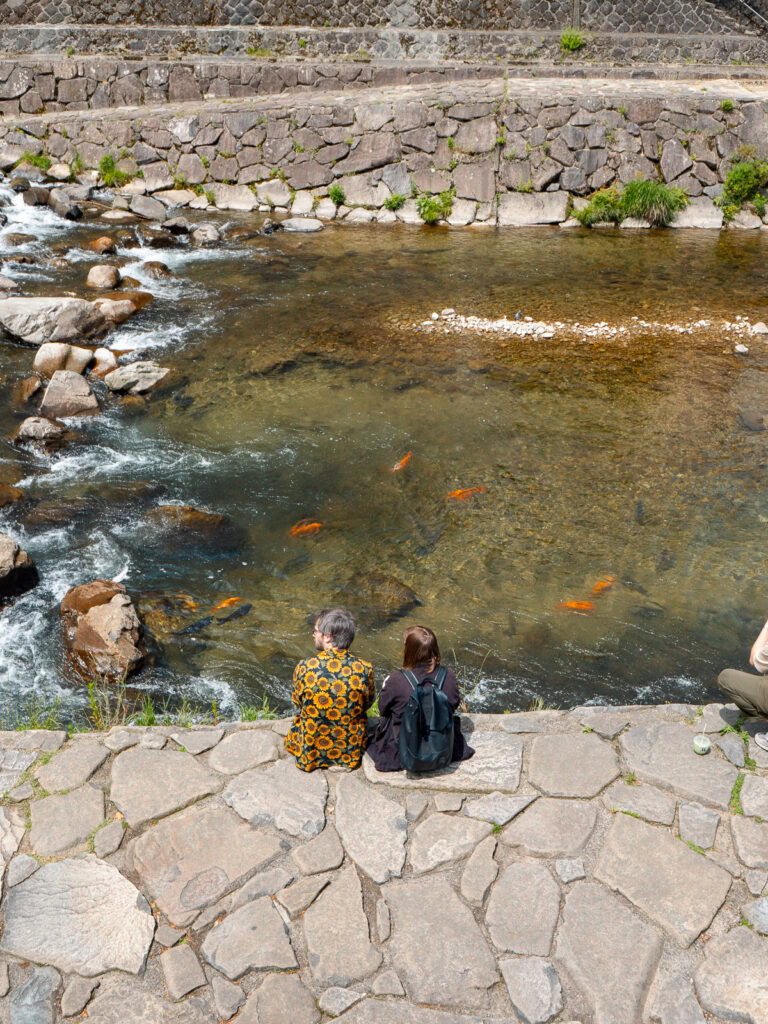
Day 1: Arrival in Tokyo
I was already in Japan (I arrived a week earlier to fit in some solo exploring in other parts of the country) so I caught a bullet train from Kanazawa to Tokyo on the afternoon of day 1, arriving around 5pm.
The first hotel is just a four minute walk from Sendagi metro station or 9 minutes from Nippori train station, easy access from the airport or the main stations in Tokyo if you’re coming from elsewhere in Japan.
One of my friends from the Sri Lanka tour had already arrived and I was rooming with her, a long-awaited catch up! We had a bunk bed with a decent amount of space for both of our luggage, and this hotel had shared bathrooms.
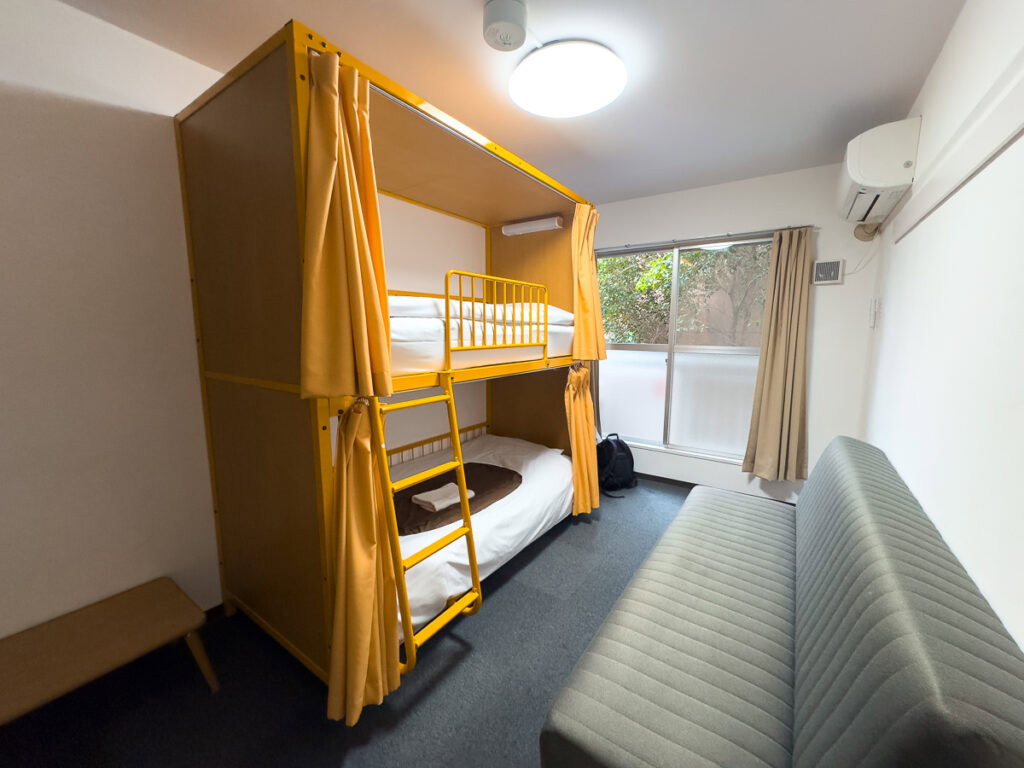
At 6pm we all met downstairs for the official start of the tour. Billy introduced himself, gave us our pre-loaded ICOCA cards which we’d be using for public transport over the next two weeks, and we headed off to the historical district of Asakusa for our first evening of exploring.
An included welcome dinner was at the top of the itinerary, we had shabu-shabu (Japanese hot pot) with a buffet of vegetables to choose from and then beef, pork, chicken and I think there was tofu available for any vegetarians. An interesting experience if you haven’t had hot pot before, time to embrace Japanese cuisine!
After dinner we wandered to Asakusa’s main attraction, the ancient Senso-Ji Temple, which takes the top spot as Tokyo’s oldest temple dating back to 628AD.
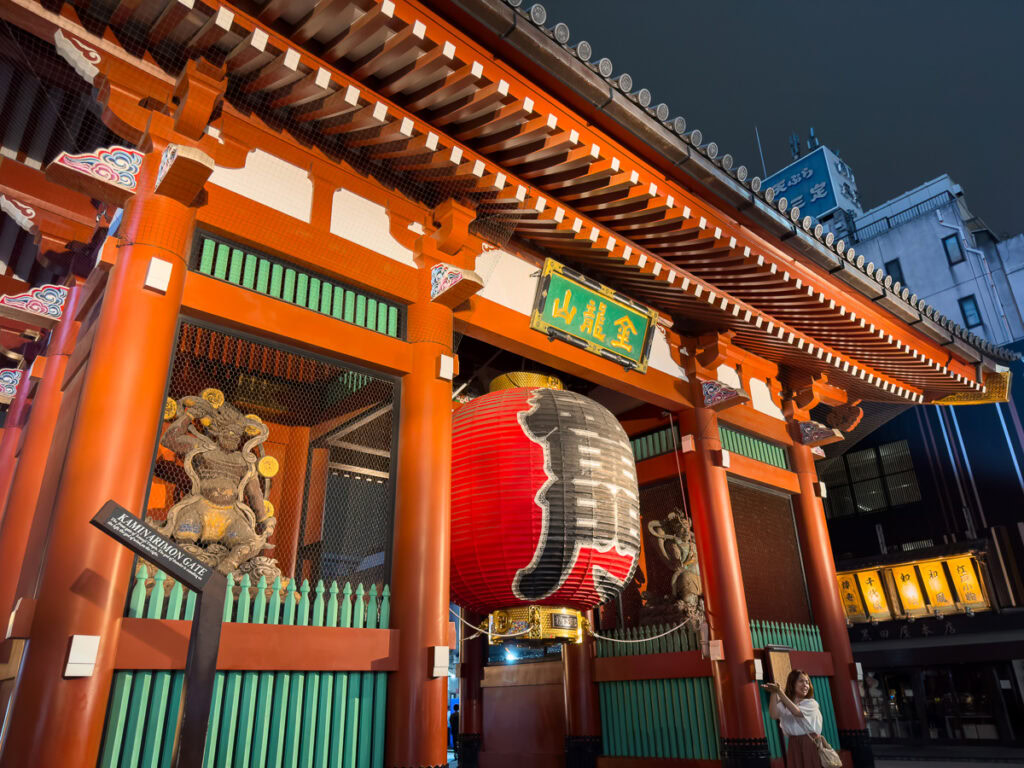
I’d actually been here before when I was in Japan for a whirlwind conference last year but I visited in the mid-afternoon, it was infinitely more comfortable and less crowded at night.
Billy gave us a Japanese Religion 101 lesson explaining Buddhism vs. Shinto, we got our first omikuji (Japanese fortunes), then we headed back to the hotel for an early-ish night before the adventure really started the following day.
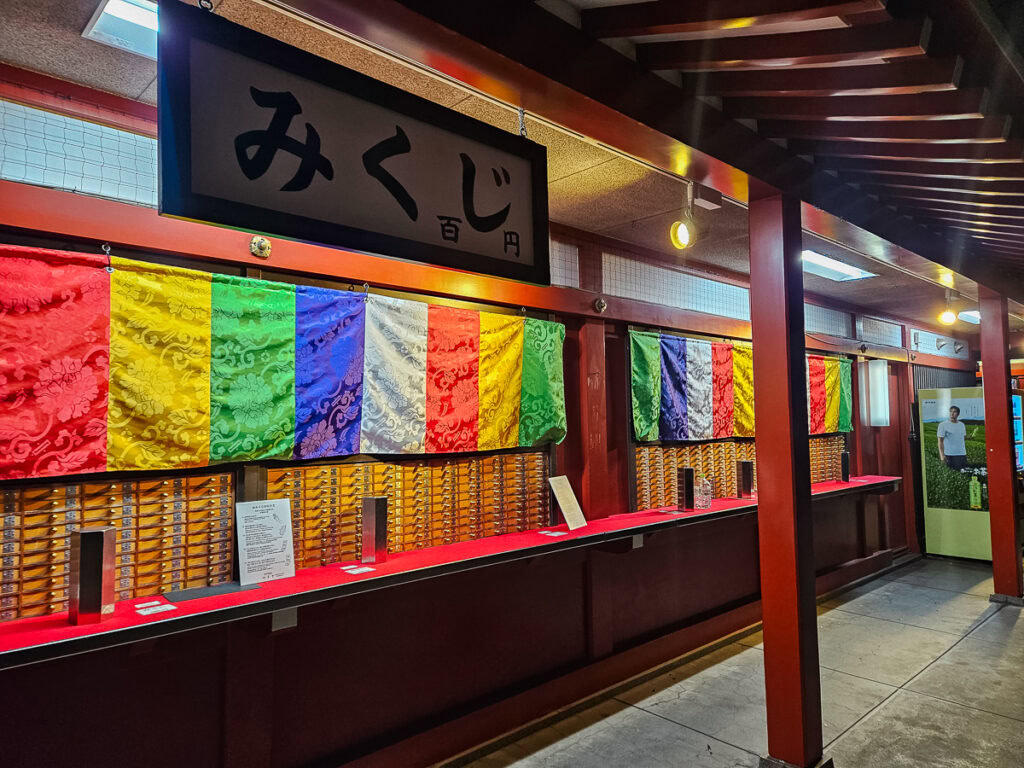
Day 2: Harajuku, Yoyogi Park & Akihabara
Breakfast at the Tokyo hotel was included, either toast with spreads of a traditional Japanese breakfast with rice, miso soup and grilled fish.
First on the agenda for day 2 was our Japanese orientation at the hotel, where Billy explained all the essential need-to-know info about travelling Japan.
He covered simple words and phrases, important etiquette (be quiet on trains, never litter, when to bow, when to take shoes off etc.), an overview of the tour and then a very quick summary of Japan’s history and culture, just to give some context for the places we were going to be visiting.
Once our brains were full of info it was time to get out and about, heading to Harajuku to kick off the day.

Omotesandō (luxury fashion) was the first stop, we had some free time for a coffee or a spot of souvenir shopping, then we wandered down Cat Street (independent/streetwear) to reach Takeshita Street (kawaii culture) with time for lunch.
This is where you’ll find the TikTok-famous treats like the child-sized candy floss from Totti Candy Factory, rainbow grilled cheese from Le Shiner and loaded crepes from Marion Crepes.
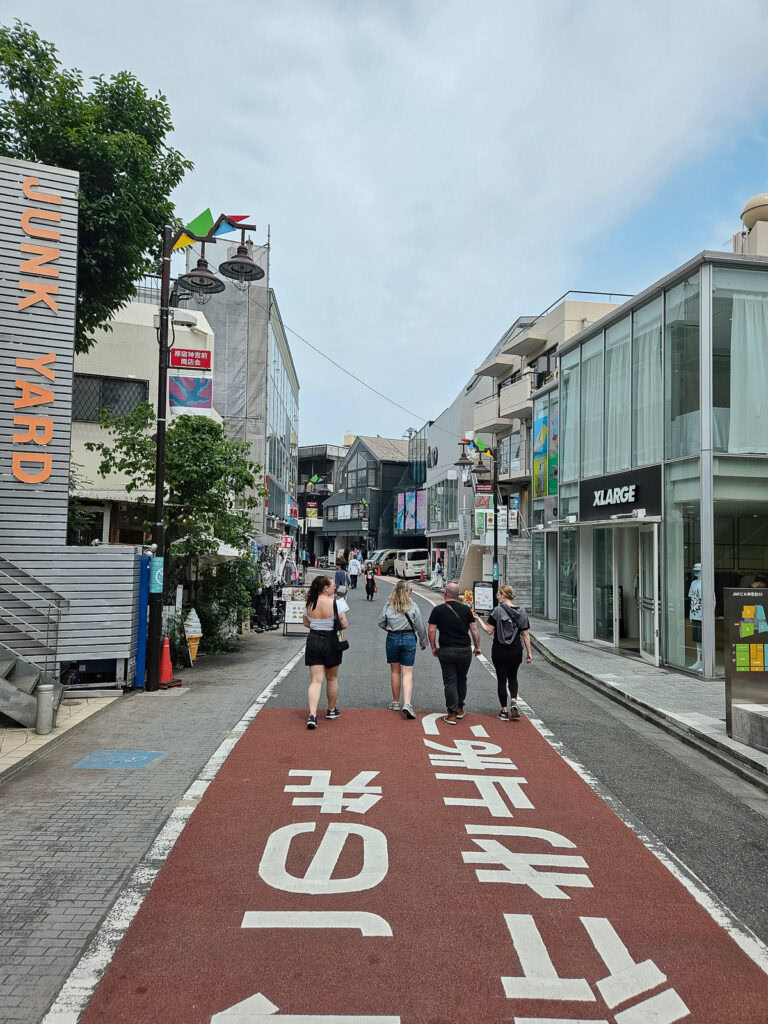
To be honest most of the food on the main stretch is overpriced and overrated, but you’re paying for the Harajuku experience. There’s a Family Mart at the end if you’d prefer some cheap snacks instead.
We met up at the end of Takeshita Street to head into Yoyogi Park and visit the impressive Meiji Shrine. We even stumbled upon a traditional Shinto wedding!
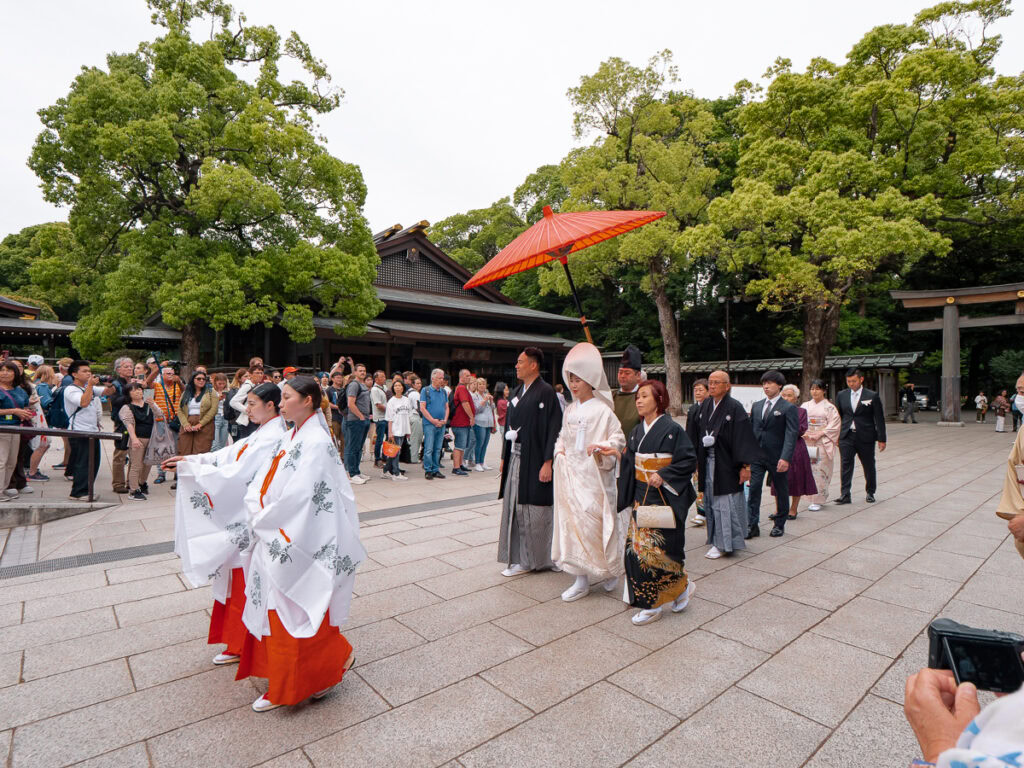
Our walking tour was finished by 4pm and we had free time for a few hours before our evening in Akihabara. Some people chose to head back to the hotel to rest (the time difference from Europe and the USA makes jetlag pretty nasty!) but those of us who were acclimatised to the time zone headed towards Shibuya to see the famous crossing in the daytime, before meeting up with everyone in the evening.
In Akihabara we had dinner at a big food hall with a bunch of restaurants, I opted for gyoza but there were burgers, steak, sushi, ramen and loads more on offer too. After dinner we walked around the Electric Town, famous for its electronics mega-stores, anime culture, games centres and maid cafes.

All of us were pretty keen for the game centre so Billy took us to GiGO, a seven-storey games arcade with themed floors for claw machines, retro video games, racing games, music and rhythm games and so on.
As soon as I stepped through the doors I did a Benjamin Button and reverted back to my younger self, who used to ditch school during free periods (sorry Mum!) to drive to the mall and spend an hour playing DDR with an equally-obsessed friend. I practically sprinted up to the 5th floor to find the DDR machines in use by people much more skilled than I could ever be, and we waited patiently for our turn.

Japan is alllll about politeness and this is even the case in arcades after dark, players will have one turn and then go to the back of the line. Insane, I feel like in most Western countries people would hog the machine for as long as they could 🙃 We only had to wait a few minutes for our spot!
I can’t quite explain the excitement of scrolling through the music and finding the exact song my friend and I used to play over and over again, it’s called Love Shine and I haven’t DDR’d to it since 2009. Not that my feet knew that though, straight onto Difficult (level 7 out of 10) and my muscle memory absolutely kicked into gear, getting me a perfect score and 220-step streak. Teenage Alexx would be so proud 🥺
We continued the Akihabara immersion with some group photobooth photos, claw machine challenges and finally a visit to a family-friendly and foreigner-friendly maid café.

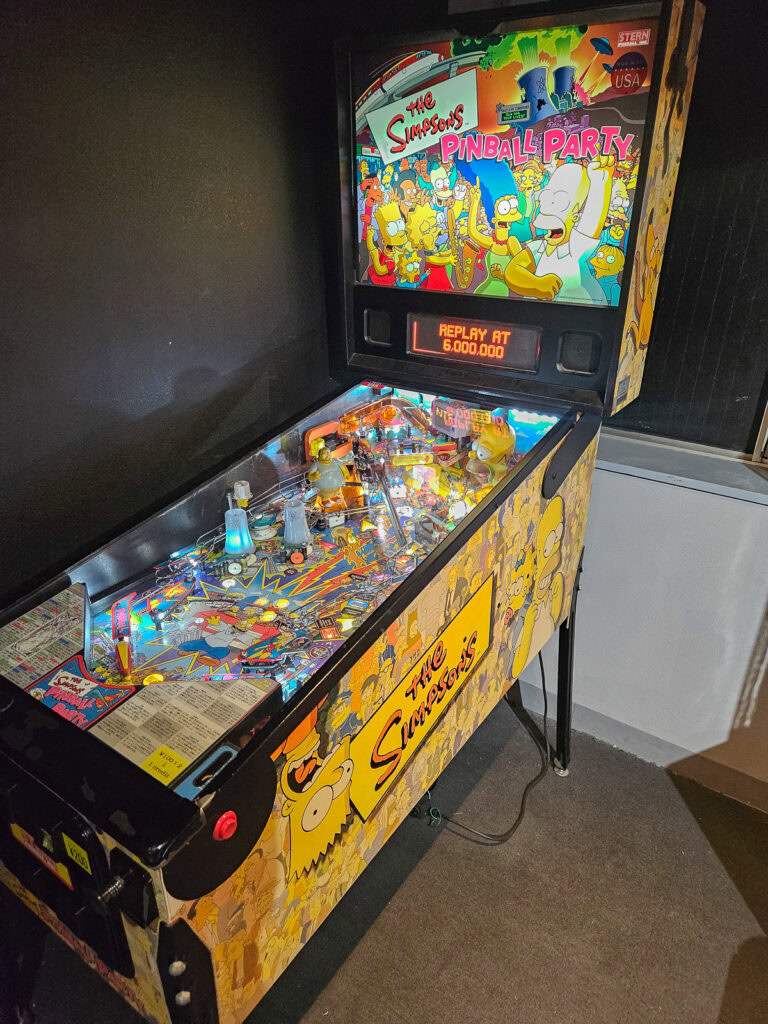
Maid cafés: Creepy or ‘kawaii’?
Maid cafés are an interesting part of Japan’s ‘kawaii’ culture and I think they’re misunderstood by most tourists. I was initially sceptical because they do seem pretty creepy at first glance (and some cafés probably are), but the Maidreamin’ café we went to was playful without being inappropriate or sexualised. A bit cringey and uncomfortable perhaps, I certainly wouldn’t go solo, but it was an entertaining bonding session as a new group.
As with lots of things while travelling, cultural context is key! In the Western world we typically view anything cartoony as something for kids, just like we’d view maid costumes and submissive behaviour as being for sexual gratification of adults.
In Japanese culture these clear cut lines are much more blurred, and theatrical experiences like maid cafés are enjoyed by adults without the same sexual connotations that we would automatically assume. There’s a large part of Japanese society, called ‘otaku’, who are obsessed with anime, manga and other subcultures where these characters with exaggerated clothing, expressions and behaviours are simply a form of entertainment rather than anything inherently sexual. Otaku can be any gender, any age, even white collar businessmen might be otaku behind the professional veil.

Butttt in saying all of that, I’m sure cafés like this do attract creeps which would make the experience for other guests creepy too 🤷🏼♀️
TLDR: Most maid cafés aren’t inherently sexualised, they’re just representations of Japanese anime culture, but experiencing them through a Western lens might make you uncomfortable.
Thanks for coming to my TED Talk!
Day 3: Sushi class & Shibuya Crossing
After breakfast we jumped on the metro to reach Tsukiji Outer Market, once the world’s largest fish market. The wholesale seafood market was moved to Toyosu in 2018, but Tsukiji’s food scene lives on.
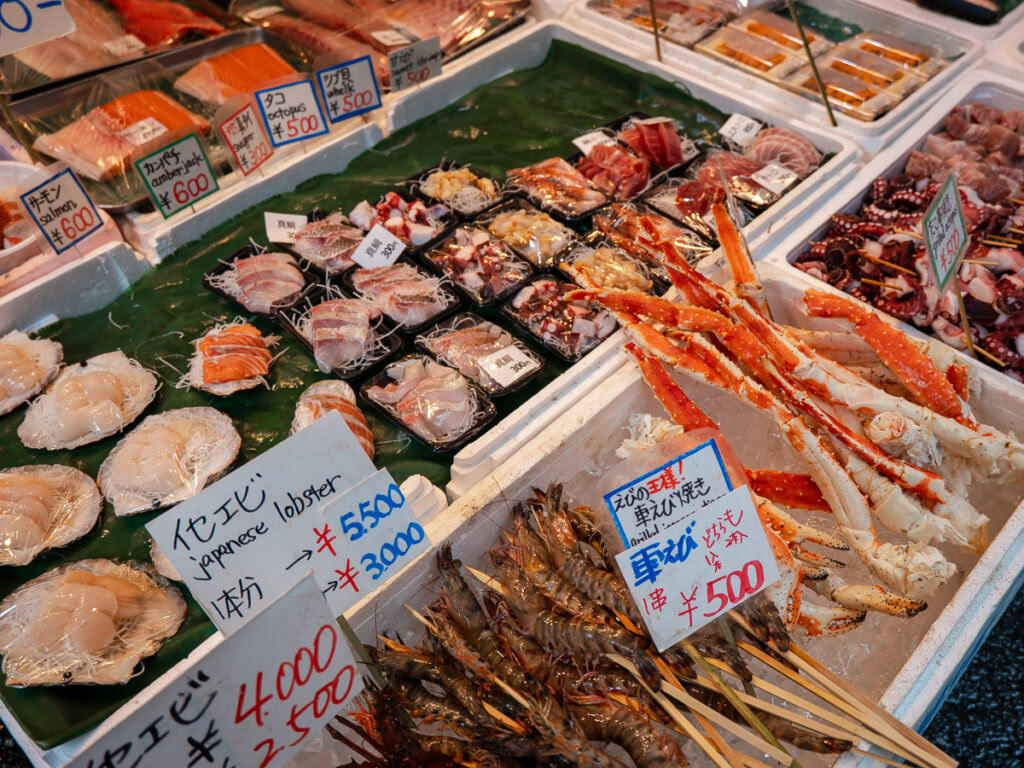
We had a bit of time to wander the market and indulge in some street food, before our 11am sushi class at Tsukiji Cooking. This is absolutely one for your Japan bucket list, and it was included in our tour.
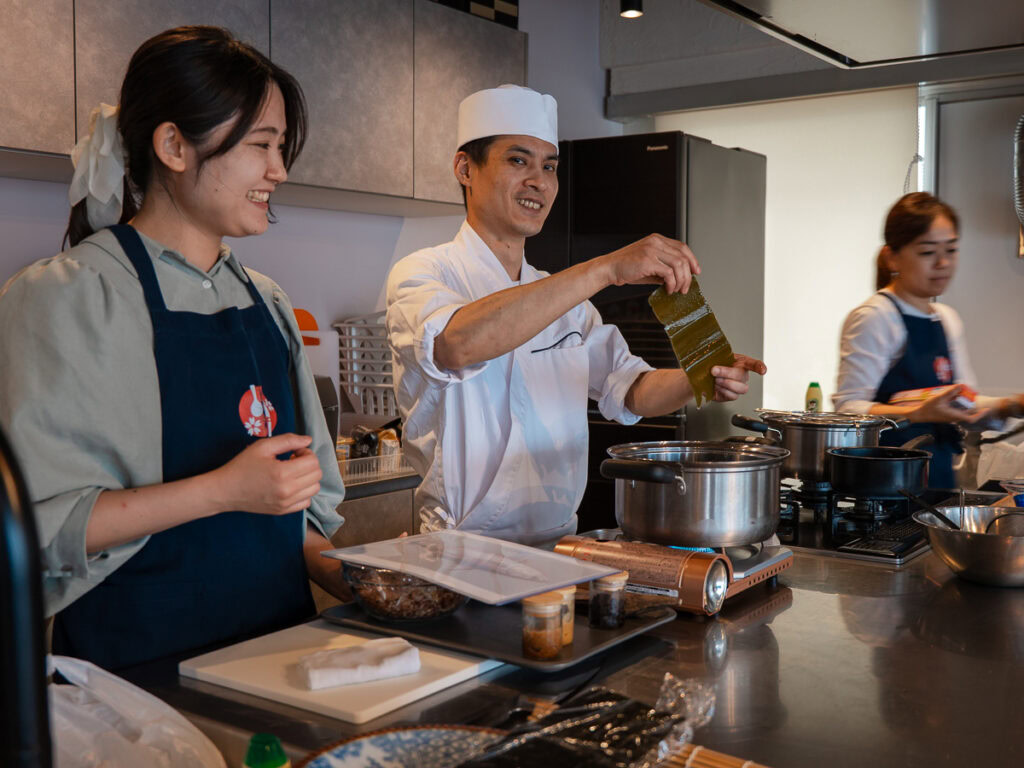
Over the next couple of hours we made a variety of sushi with salmon, tuna, scallops and more, learning how to hand-craft the perfect nigiri and roll the perfect maki roll, then we enjoyed our delicious creations for lunch.

In the afternoon we had a good chunk of free time, from 1pm until our next meet up at 5pm. I’d heard that you can get prescription glasses made cheaply and quickly at a store called Jins so a few of us walked from Tsukiji to Ginza, an upmarket shopping area, for some retail therapy. The glasses were a success by the way!
Four hours later the crew was back together, and the next corner of Tokyo we were scratching off the map was Shinjuku.
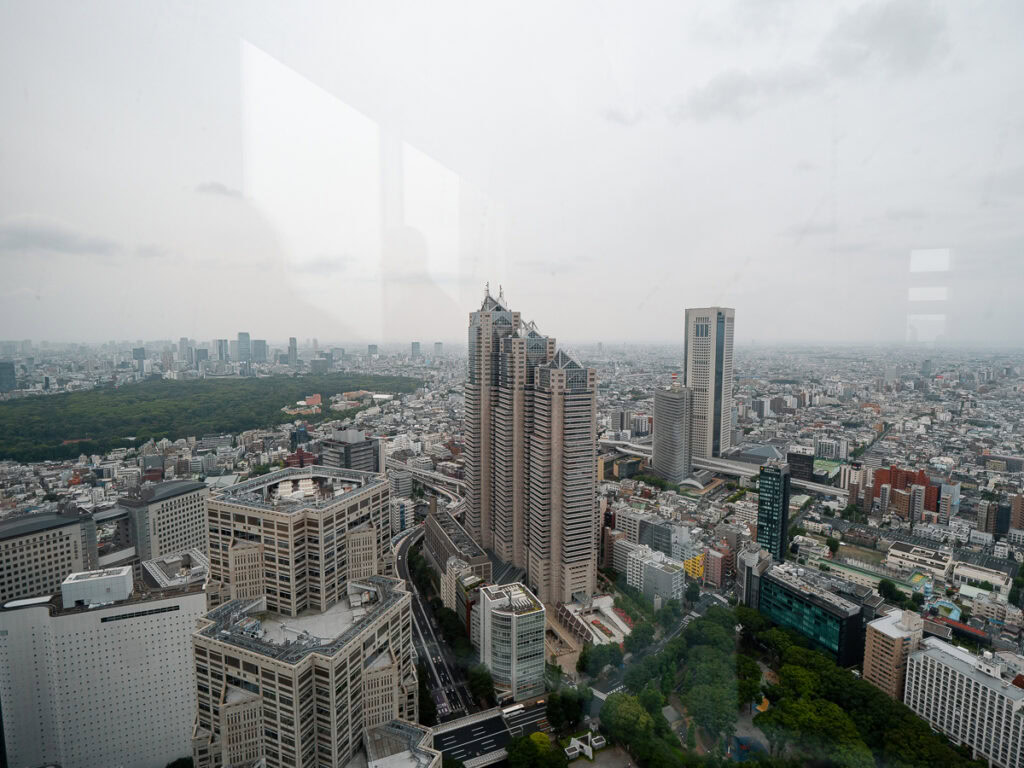
We started with a trip up the Metropolitan Government Building to the 202m-high observation deck, it was a grey and gloomy day but this viewing deck is free so it’s a good option if you missed out on tickets to Shibuya Sky or one of the other popular towers. The gift shop up here had some super cute stuff that I didn’t see anywhere else.

Back on ground we wandered to one of Shinjuku’s main attractions, the infamous Omoide Yokocho or ‘Piss Alley’. Lovely name for a food street 🙃
It might not sound so appealing but this lantern-lit stretch of hole-in-the-wall restaurants and izakaya (casual Japanese bars) is a must-do in Tokyo.
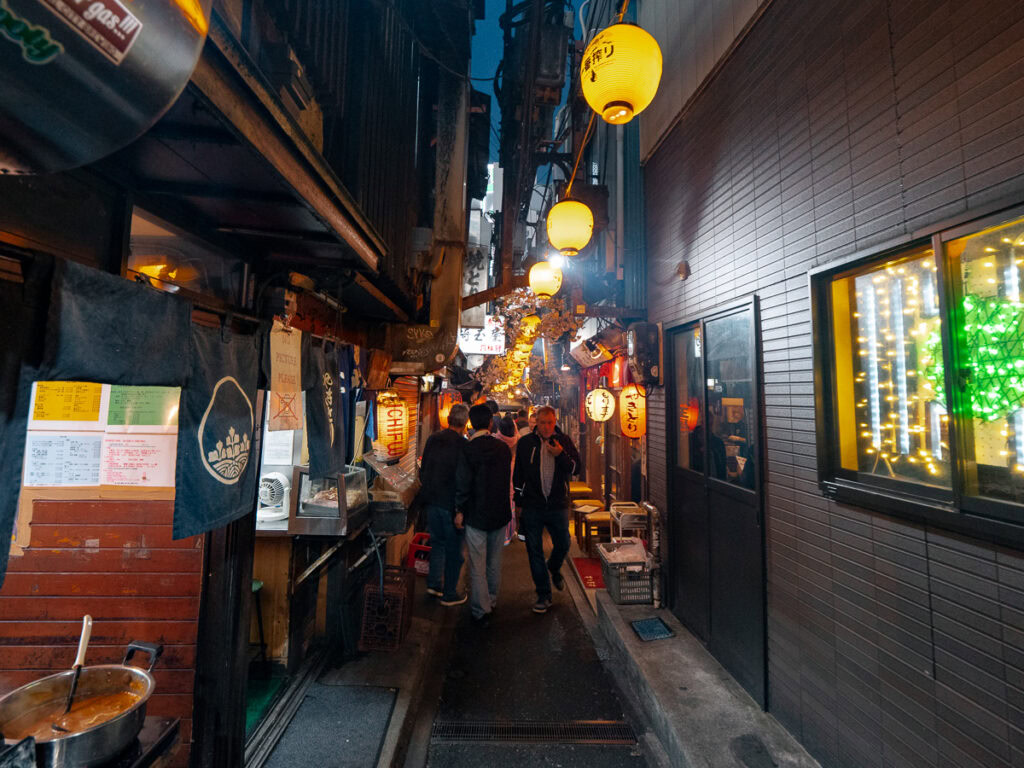
We had some free time here to do whatever we wanted for dinner, because most of the tiny eateries aren’t built to accommodate more than a handful of people let alone a tour group.
We split off into groups of 3-4 and started searching for anywhere that could seat us, and my crew managed to nab a spot that was serving up kushiyaki (grilled skewers).

The chef at our spot had a bit of a Japanese James Dean vibe going on, complete with a framed portrait of him lighting up a cigarette in front of his grill. They had an English menu, were cash-only, and served up a range of beef/pork/chicken/vegetable skewers, including pork rectum, pork aorta, pork heart and chicken neck. Most skewers were around 200JPY each ($1.37USD) and shochu cocktails, whiskey highballs and draught beer were 500-600JPY each ($3.45-$4.10USD).
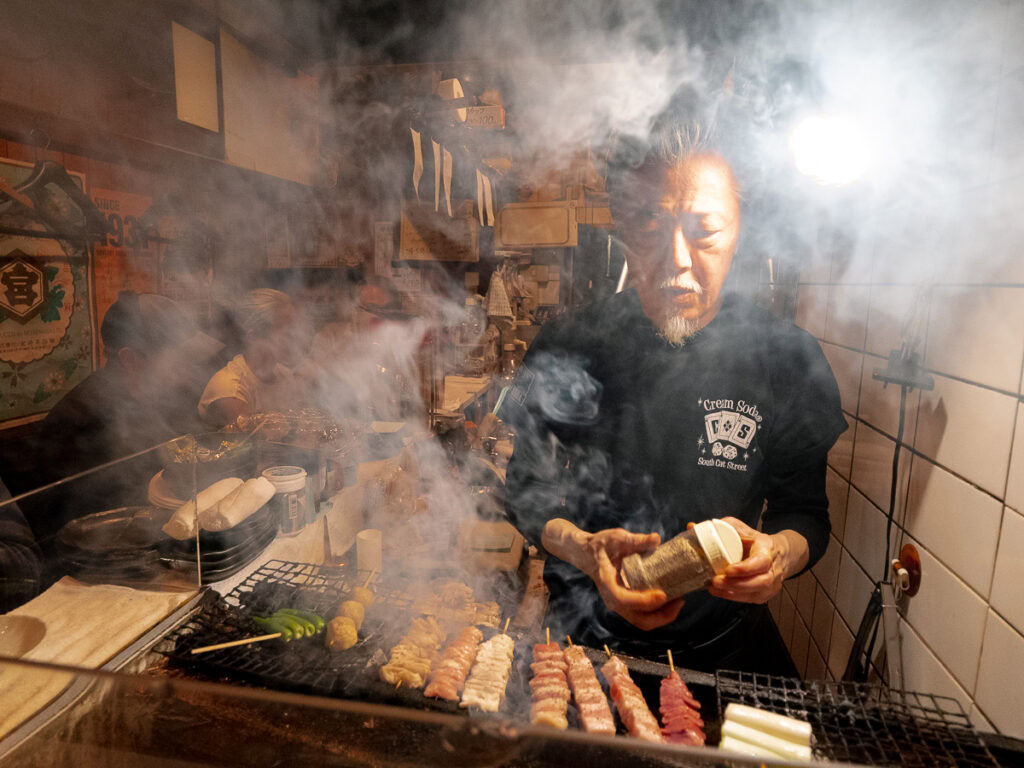
By the time we finished dinner it was pissing down (how appropriate) so we popped in to Family Mart for some of us to get cheap umbrellas before seeing Shinjuku’s famous 3D billboard and Godzilla Head, then caught the metro to Shibuya to see Shibuya Crossing in all its neon glory.
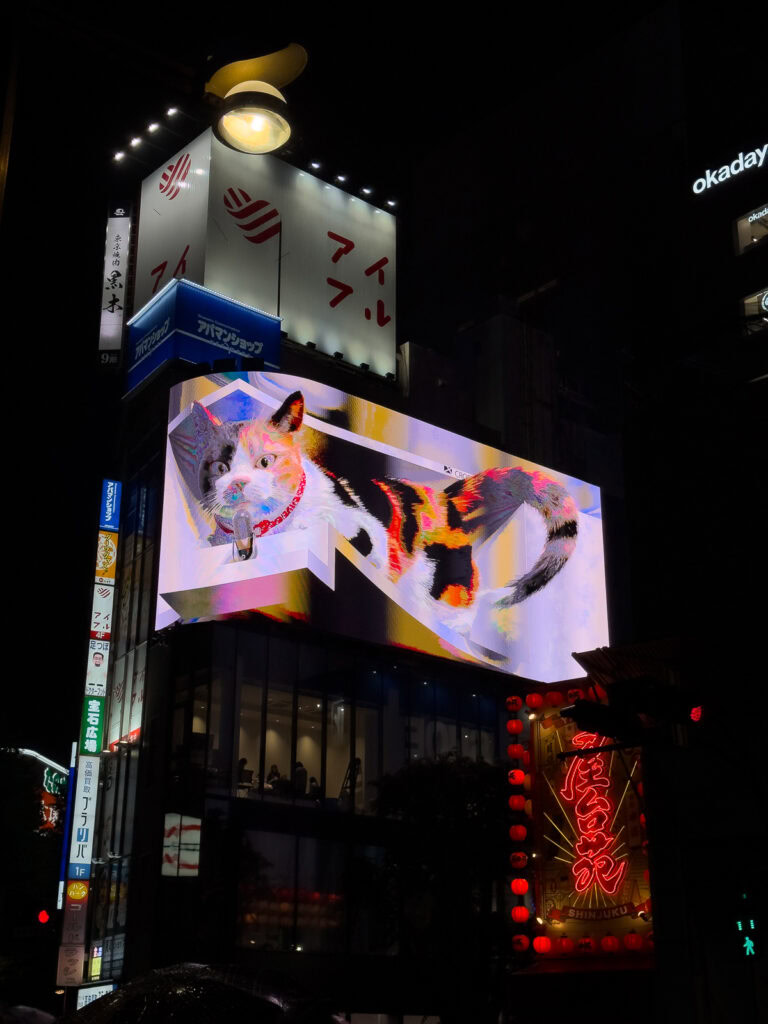
Technically after Shibuya Crossing it was free time, but we’d all been making the most of Japan’s lax public drinking laws since leaving the viewing deck, stopping off at konbinis in between attractions to taste test the variety of canned beverages on offer, so naturally our night progressed to a private karaoke room with an hour of unlimited drinks.
We were all tempted to continue the festivities but one mega downside of Tokyo is that the trains and metro system stop around midnight, leaving post-12am revellers either a hefty taxi bill or a long wait until public transport starts again at 5am. None of us had that level of stamina so we boosted to the station at 11.50pm, along with tens of thousands of other last minute decision-makers, for a respectable bedtime for a Saturday night.

Day 4: Tokyo to Hakone on the Romancecar
After packing a small bag with enough clothes for two nights and leaving our big bags to be sent to Kyoto via the luggage transfer service, we left Tokyo to catch the Romancecar tourist train to Hakone.
I’m a sucker for a bucket list train trip, so as soon as I saw the Romancecar I knew that I’d have to come back one day to sit in the panoramic observation deck seats. These give you a literal front row seat to the epic scenery along the way, putting passengers where the driver usually is and putting the driver in an elevated compartment on the train’s 2nd floor. So cool!

The observation deck seats are only found in the newest trains on the route, the 70000 Series GSE, so you need to make sure you’re booking the right train to find them. You can see more info on the official website.
For our first long-distance train ride we had to try another Japanese ritual, the ekiben (bento boxes made specifically for train travel). Billy showed us to an ekiben stall where there were a range to choose from, including fancy self-heating ones!
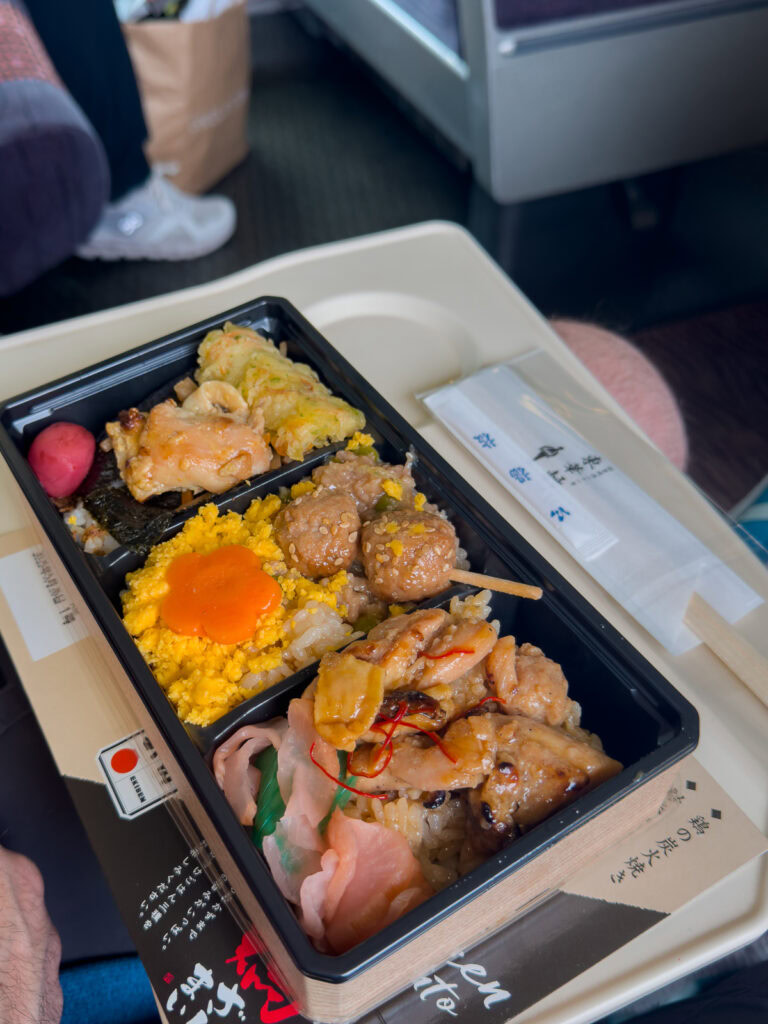
Eating on long-distance trains in Japan is completely acceptable, but eating on the metro or local/short-distance trains (where you’re sitting opposite other people) is considered poor etiquette. If you’re unsure, a good rule of thumb is that a tray table in front of you means you can eat, no tray table means it’s a no-go.
From Hakone station we caught a local mountain train through the misty forest up to Gora station, and our guesthouse was only a couple of minutes away.
We had twin Japanese-style rooms with beds on tatami mats, shared bathrooms, a shared lounge, a games room with table tennis and a pool table, and a rooftop hangout area.
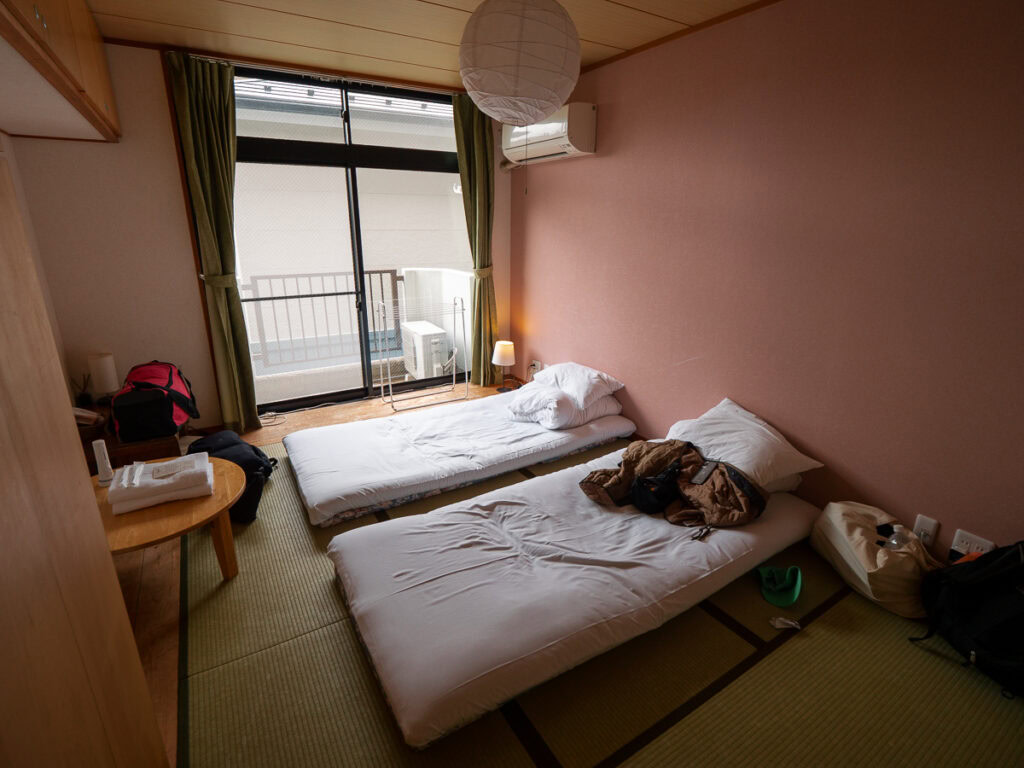
Unfortunately we caught Hakone on a bad day, and the Hakone Ropeway (which takes you over the Owakudani volcanic valley and has epic Mt Fuji views) was closed due to the wind so Fuji stayed out of sight. Bummer!
Despite this I still looooved the Hakone area, the vibe was super chill, lots of cute cafes and in my half an hour of food research I starred about 20 top-rated restaurants. Another reason to go back.
The restaurant that came out as the winner for our lunch stop was Gora Brewery & Grill, and the food was DIVINE. It was more expensive than the cheap eats we’d been enjoying but it was so worth it, I ordered the yuzu truffle salmon and every single one of us audibly moaned when we tasted it. Words cannot describe how good it was.
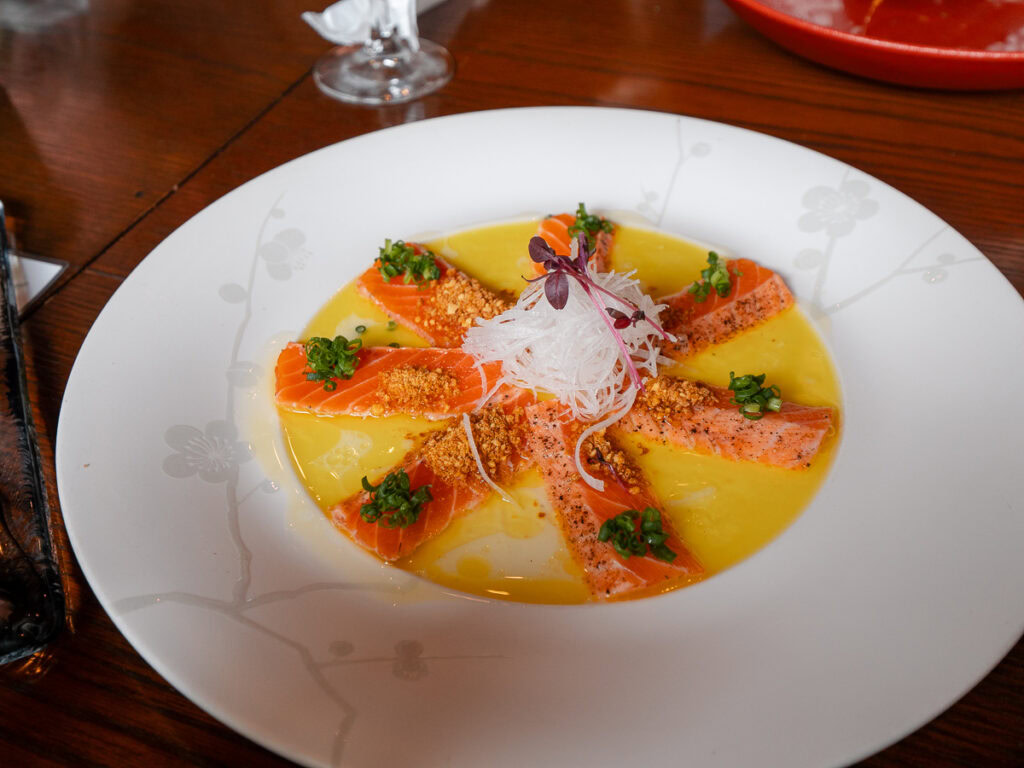
We didn’t realise until we saw the signs on the wall but the restaurant is affiliated with Nobuyuki Matsuhisa (the celebrity chef behind the high end global Nobu chain), so it’s no wonder we were impressed.
After lunch the clouds were beginning to lift, and we had a transport card that covered the Hakone region, so we took the funicular from Gora to the top station of Sounzan to check out the view. The cable car normally runs from Sounzan but it was still closed, so we just enjoyed the outlook over the mountain villages and headed back to the guesthouse for a family hot pot dinner and a games night.
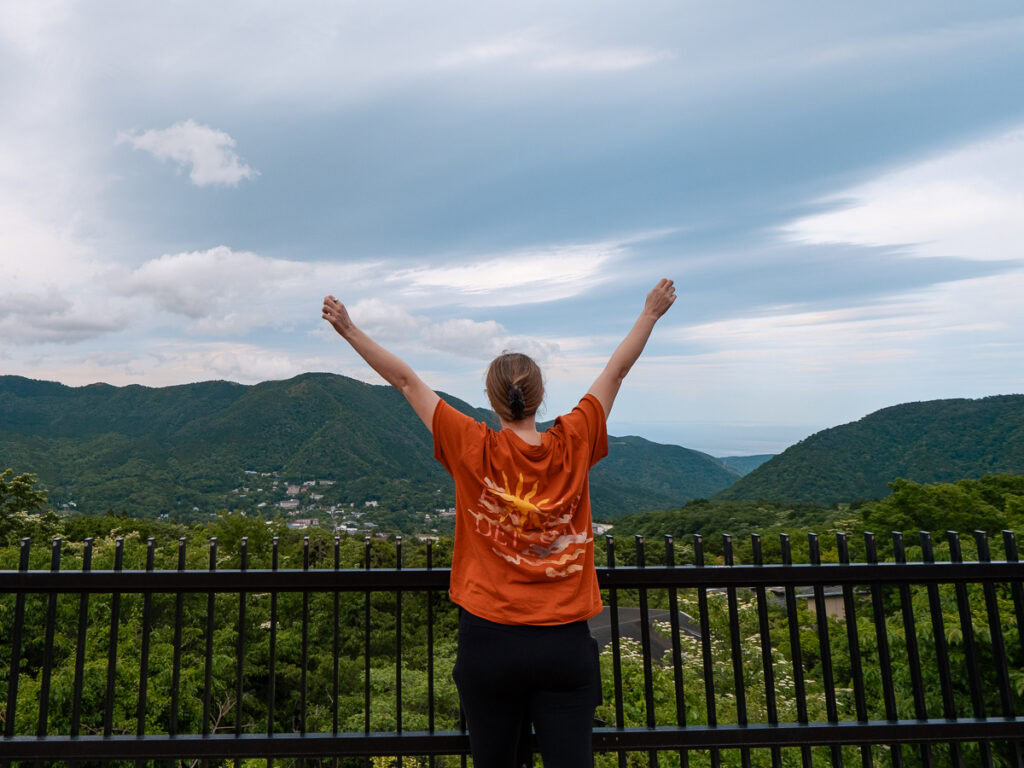
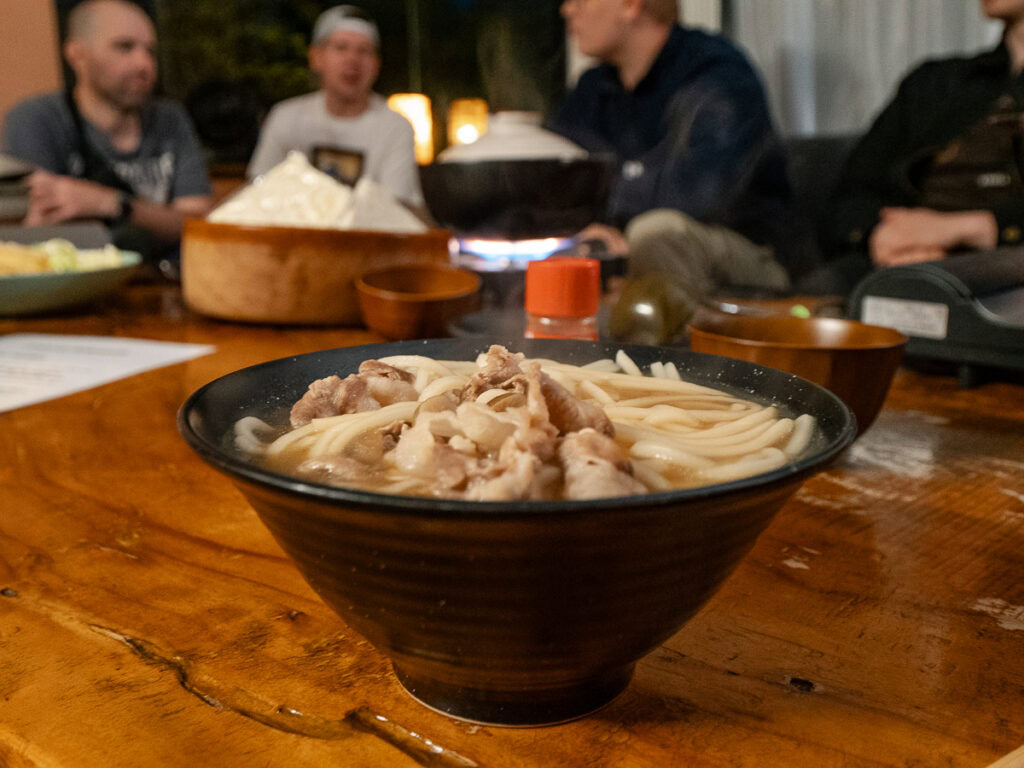
Day 5: Hakone to Takayama for a temple stay
We left our Hakone guesthouse early in the morning for a konbini breakfast before a longggg travel day, consisting of:
- A mountain train from Gora to Hakone (about 40 mins)
- A local train to Odawara (15 mins)
- Enough time to grab an ekiben or some other train snacks
- 15 minutes on the Shinkansen platform where bullet trains zoom past at high speed without stopping, perfect for photos!
- Our first bullet train from Odawara to Nagoya (precisely 1h 7m)
- A scenic train from Nagoya to Takayama (2h 31m)
Phew!

The bullet train between Odawara and Nagoya runs on the Tokaido Shinkansen line, which offers Mt Fuji views on a clear day. The views are on the right side heading southwest, left side heading northeast, but seat E in the normal car and D in the Green Car are on the correct side regardless of which direction you’re heading in.
Fuji continued to elude us, but we did manage to spot the very top of the mountain peeking through the clouds.
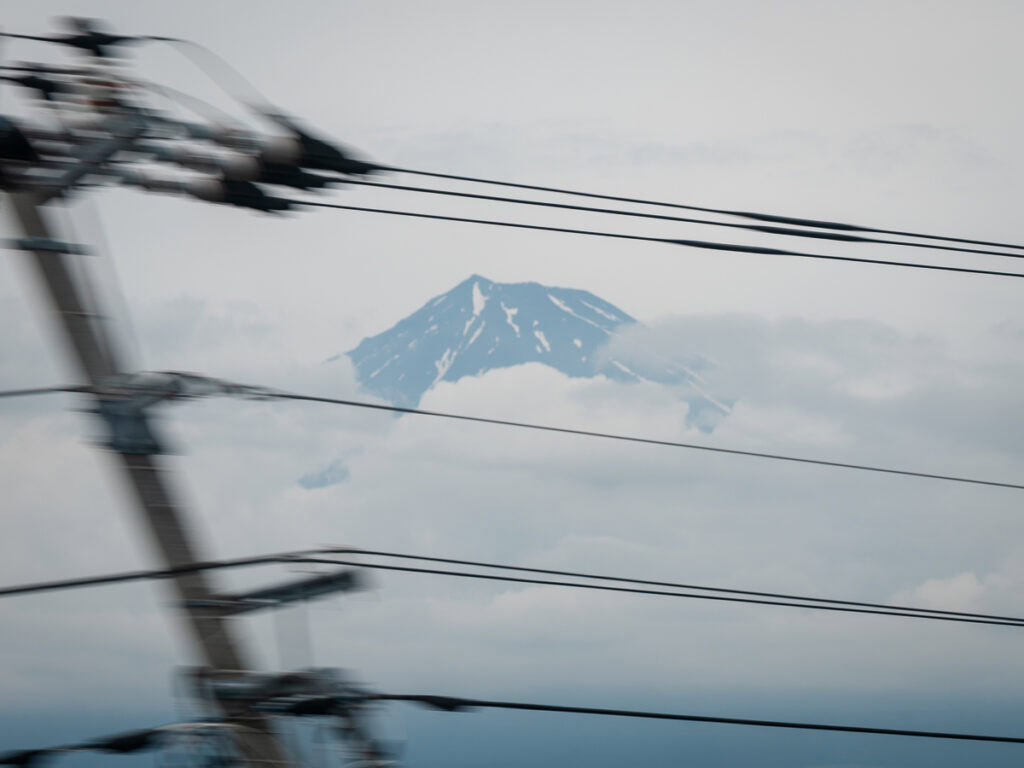
From Nagoya to Takayama we caught the Wide View Hida express train which winds through stunning scenery over two and a half hours. Both sides had beautiful views on this one.

We arrived in Takayama at 2.30pm to check in to our first of two Buddhist temple stays of the trip, where we were welcomed by Kaiji, the temple’s senior monk. Rooms here are Japanese-style with mattresses on tatami mats, one room for girls and one for boys.
The temple made a mistake with the beds and put one extra in the boys’ room so the girls’ room was one short, so poor Billy had to bunk with the rest of the guys and one lucky girl got his private room instead. That lucky girl was me 💃🏼 Thanks Billy!
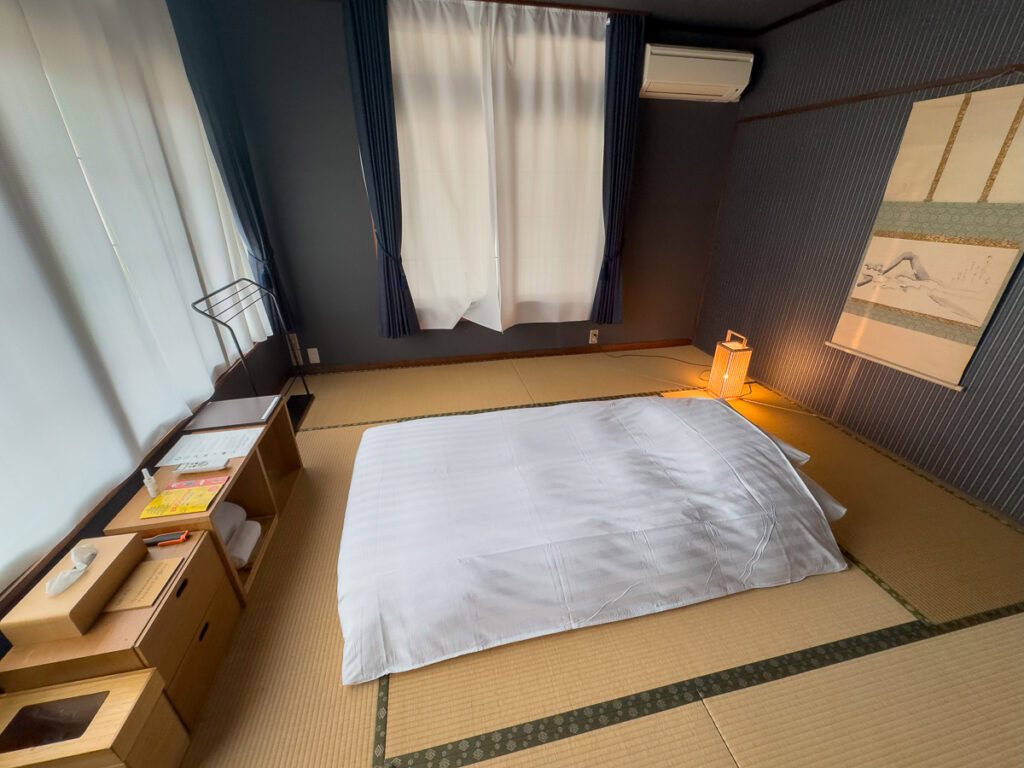
Takayama’s cuisine is next level so we headed into the beautifully preserved old town to indulge in a local sake tasting (included) before trying Hida beef skewers (extra), a top-level Wagyu beef from Japanese Black cattle in the Gifu prefecture, where Takayama sits. The way the Hida beef melts in your mouth 🤌🏼 pure sorcery. 2000JPY ($13.73USD) for the highest grade skewer and it was absolutely worth it.

We had free time for an early dinner at 5pm, but once again our group liked each other so much that we all stuck together and found a local restaurant called Suzuya, which had sukiyaki hot pot, hoba miso and lots of Hida beef dishes, with very friendly and entertaining staff.
Takayama has lots of onsen (traditional bathing facilities) and Billy gave us a list to consider, ranging from cheap and cheerful options to fancier ones at nice hotels. There’s even a sento (public bathhouse) that allows guests with tattoos.
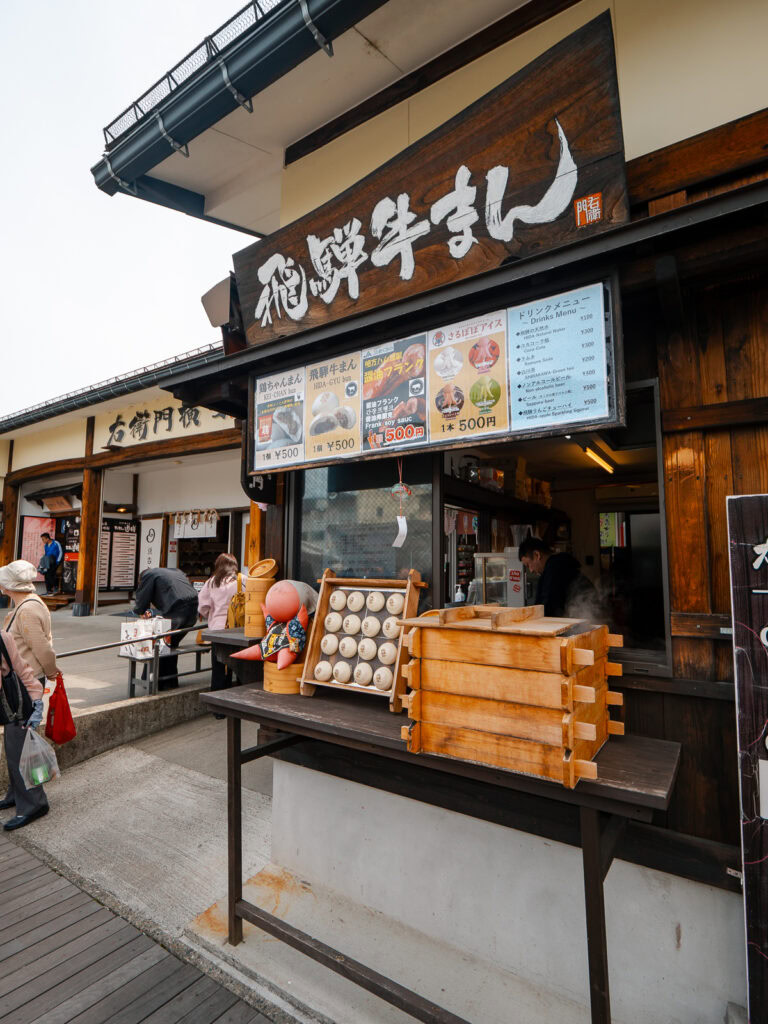
Two of the girls and I decided to treat ourselves to the natural onsen at Takayama Green Hotel, we paid 1500JPY ($10USD) which is still cheeeeap! We lasted about 40 minutes in the water before we started cooking, then we hopped out, made the most of all the nice hair and skin products in the bathrooms, and walked back to the temple to drop our stuff.
Billy had a cocktail bar suggestion and none of us can say no to a cocktail bar (this became a running theme), so we wandered down to Yu’s Bar for a few delicious drinks, then wandered home via a late night 7-Eleven shop.
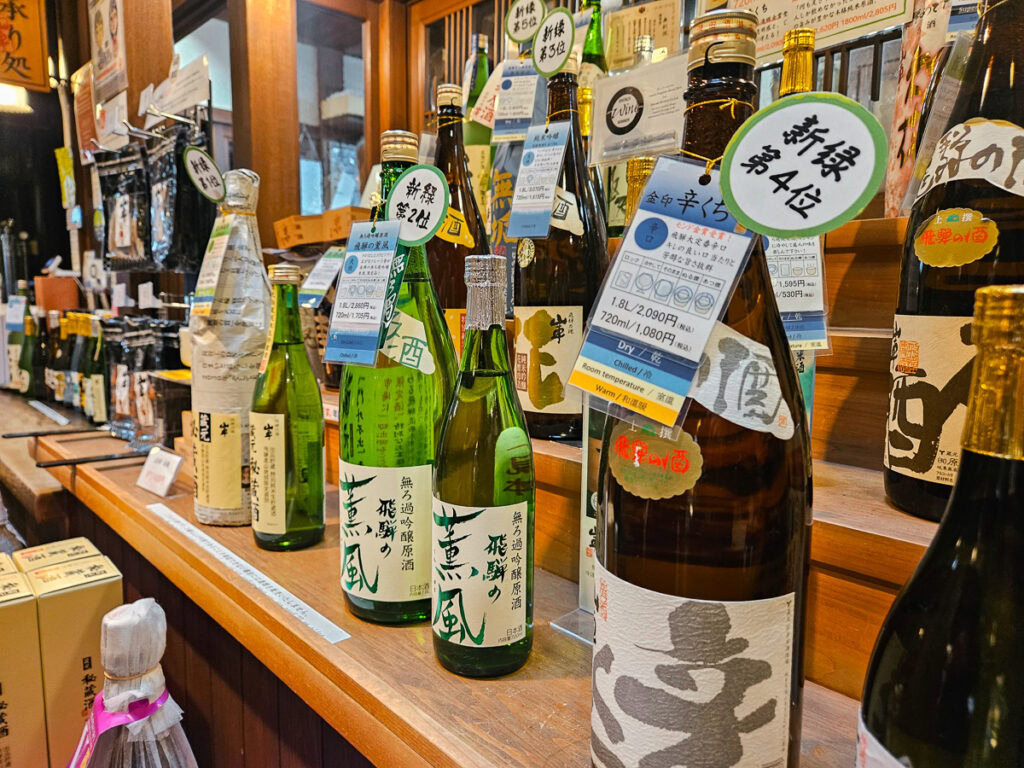
Day 6: Takayama market, train to Kyoto & Gion walking tour
We had a rare opportunity for a sleep in today with our train departing Takayama at 11.30am, but there was also a chance to experience morning prayers and a meditation session at the temple, plus a visit to the morning market.
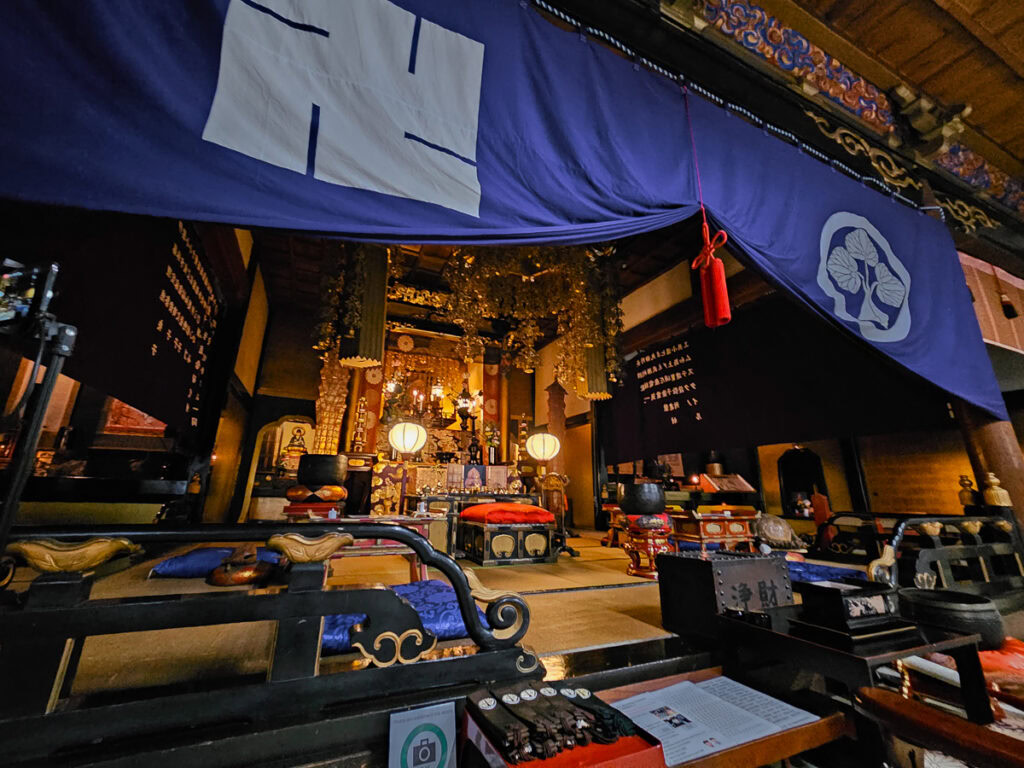
I set my alarm with every intention of getting up for the prayers at 7am, buttttt my phone died overnight 🙃 I woke up to a dead battery symbol on a black screen but the time in the top corner was showing 11.04am and I FREAKED, we were meant to be leaving the temple at 11am to head to the station. I jumped out of bed and threw my clothes into my bag like a psychopath, then looked at my iPad and it was actually only 9.30am.
My precious phone, why would you do this to me 😭 crisis averted but morning prayers missed.

Billy took us to Takayama’s morning market for some breakfast. I got a flaky croissant from Andersen to start, then a steamed pork bun from a random corner stall, and I couldn’t say no to another Hida beef skewer from the place we’d visited the day before. Breakfast of champions!

From Takayama we caught the scenic train back to Nagoya and then jumped on another bullet train to reach Kyoto around 4pm.
Our hostel in Kyoto was super cool, the kind of place I’d happily stay at again while travelling solo! It was called Ryokan Hostel Gion, it had gender-separated dorms with pod-style beds, complete with privacy curtains, hooks, space for storage next to the mattress and behind the pillow, and a light and power plug. Ideal location too, down a quiet side street in the historical Gion district.
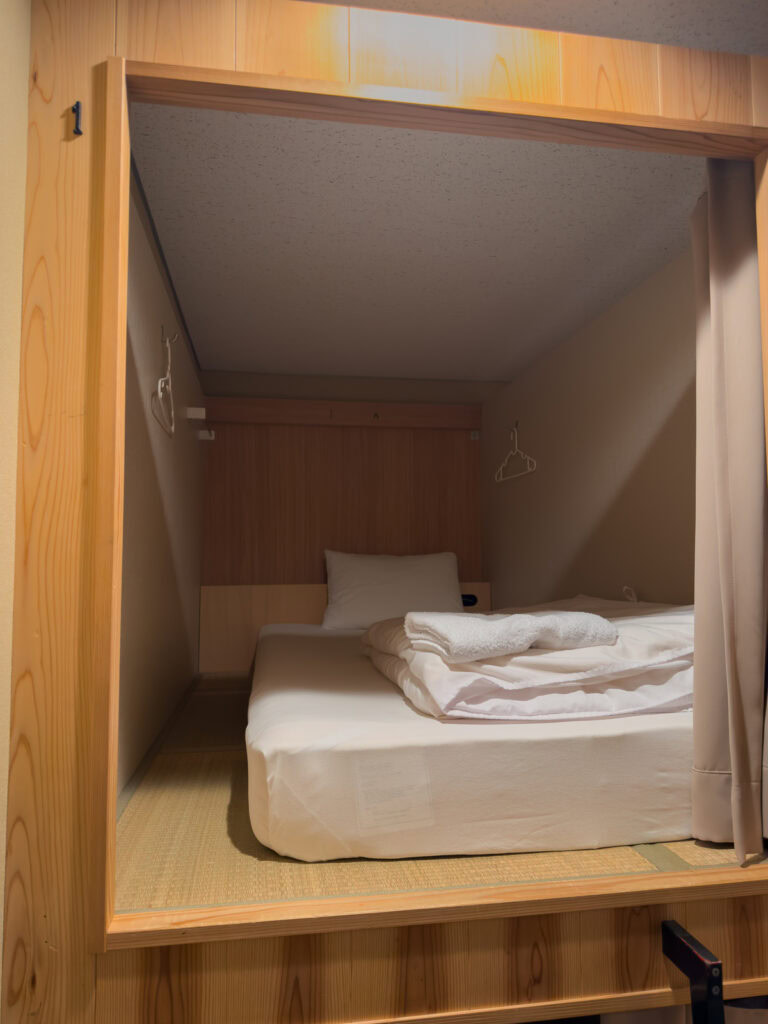
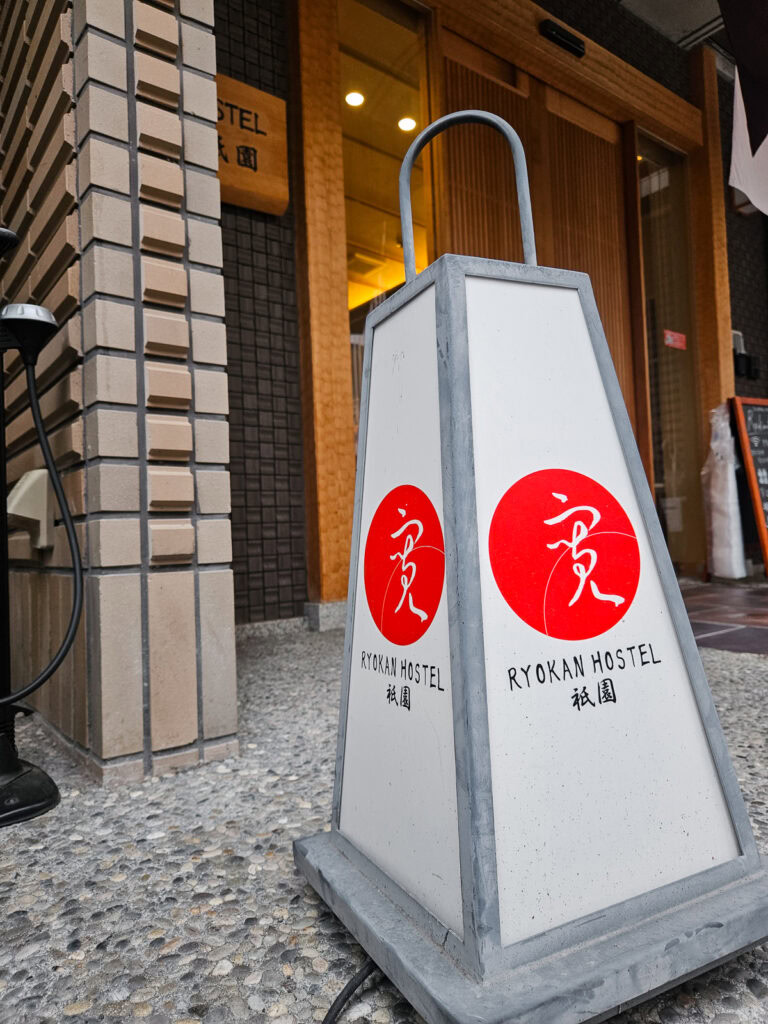
In the evening we had a walking tour with a local guide to learn a bit about Kyoto’s history, geishas and cultural significance, with a fair few photo spots along the way.

The rest of the night was free time, butttt Billy let us know that if we wanted a big night in Kyoto then it had to be this night, because day 8 had a horrendously early start so the night of day 7 wasn’t really an option.
Who are we to say no to Billy’s expert suggestions?

We split into smaller groups for dinner to make it easier to find places that could fit us in, and afterwards we met up for some post-dinner pre-karaoke drinks at a funky speakeasy-esque cocktail bar called Base. Definitely cosy but luckily there was space for the whole group, and the bartender makes incredible drinks based on your chosen base and the flavours you like.
Our next stop was Barcode Karaoke just upstairs, well-known for being a foreigner favourite in Kyoto! This was a proper karaoke bar where all groups karaoke together (rather than a private room for our group) with lots of other tourists, so much fun.
Some of the group headed home for an early-ish night, some stuck around for a few hours of karaoke, a few of us mayyyy have continued the festivities until the sun had well and truly risen 🙃
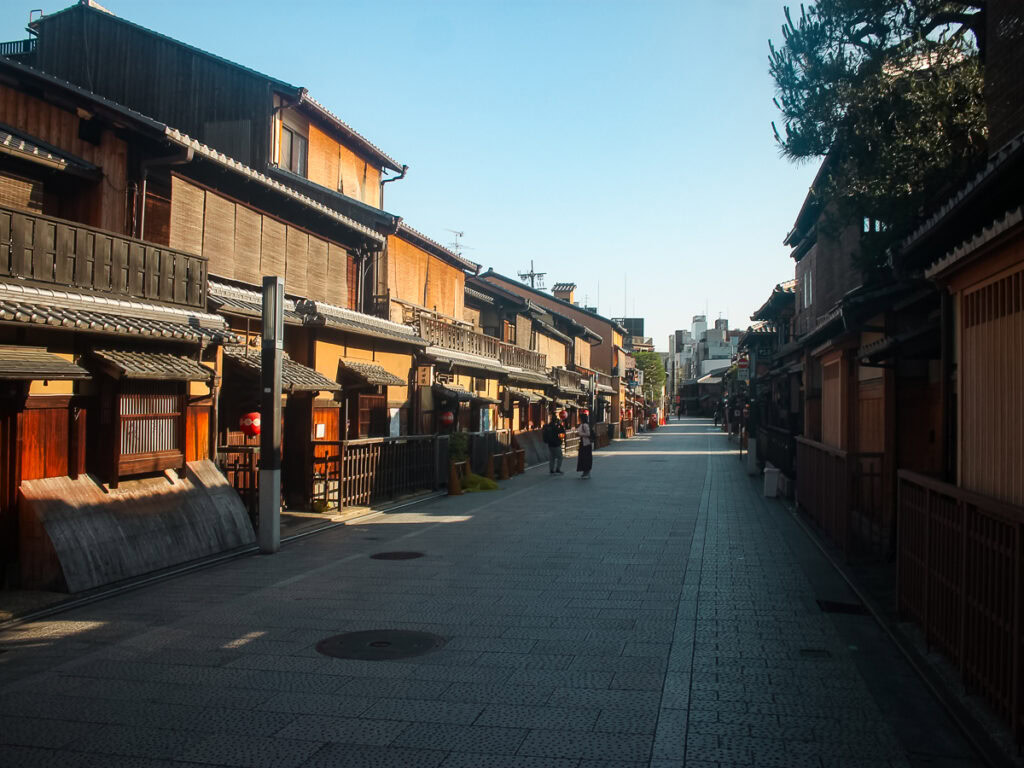
Day 7: Golden Pavilion, Zen Garden & Kendo Class
I wish I could tell you about the Golden Pavilion and Zen Garden, but my 6am bedtime meant that I was certainly not going to get up in time for the 8am departure. One of my (much more responsible) friends took photos for me to show you though!
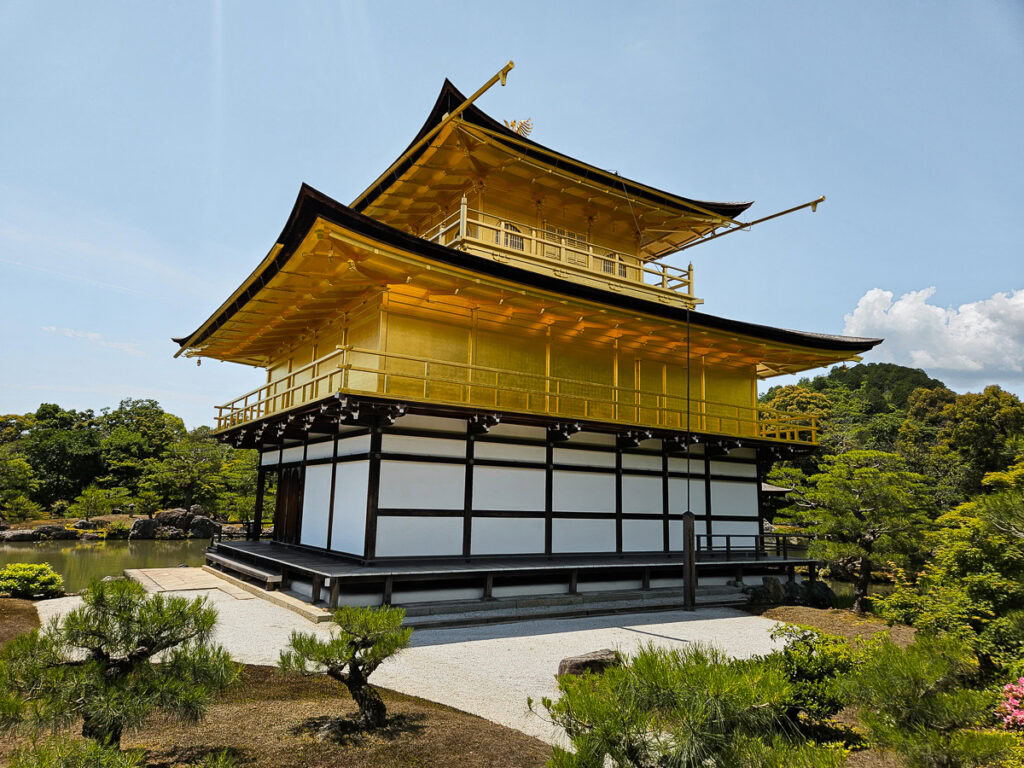
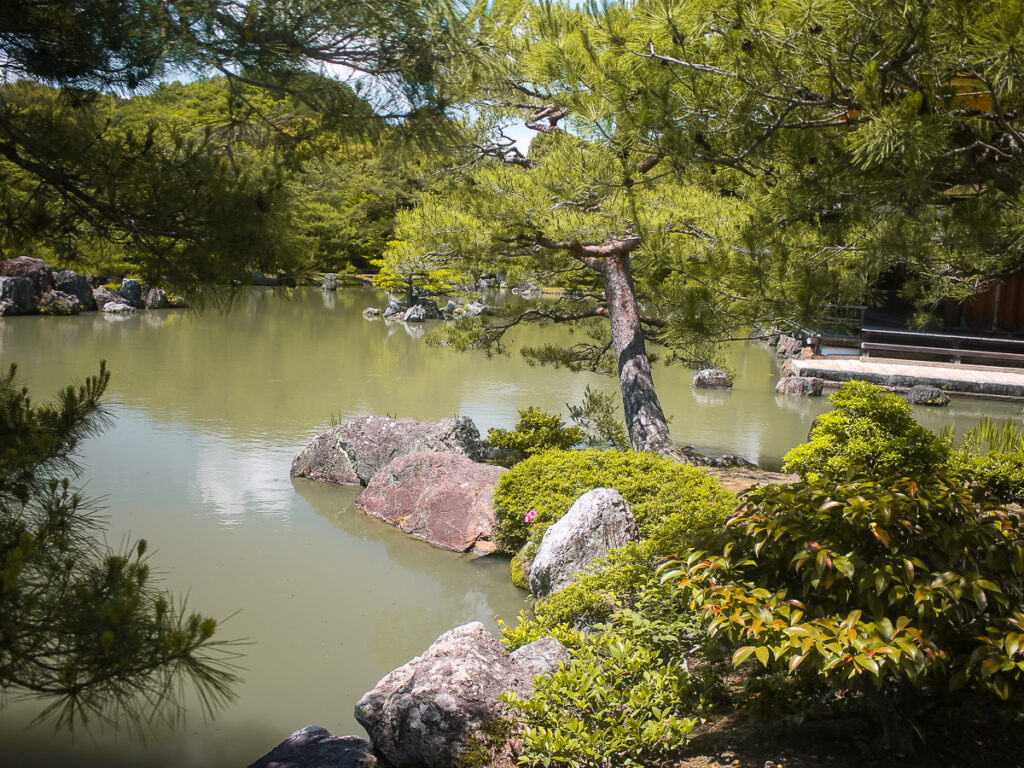
After those absolutely necessary extra hours of sleep, us late-nighters rose in time for the afternoon’s included activity, a Kendo class with the descendent of a samurai. Not exactly my top choice of what to do with a hangover, but it actually ended up being one of the tour highlights.
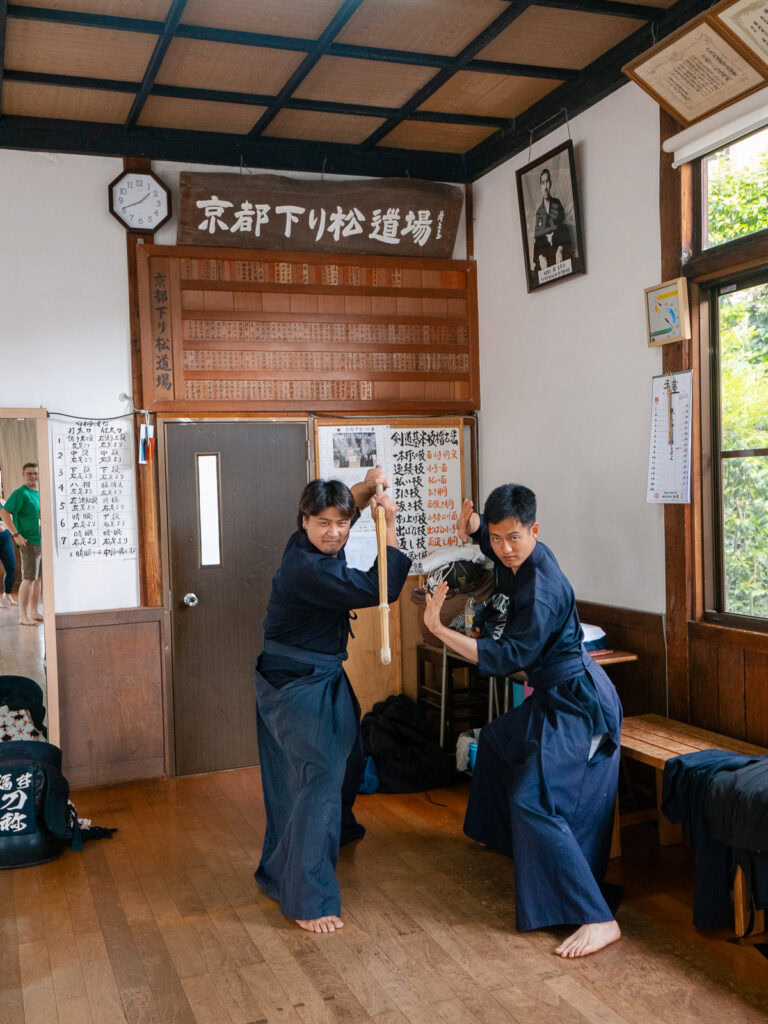
The journey there was a bit rough, a 30 minute ride on a packed bus in the midday heat, then a short but uphill walk to reach the dojo. Luckily there was a Family Mart on the way for emergency sustenance.
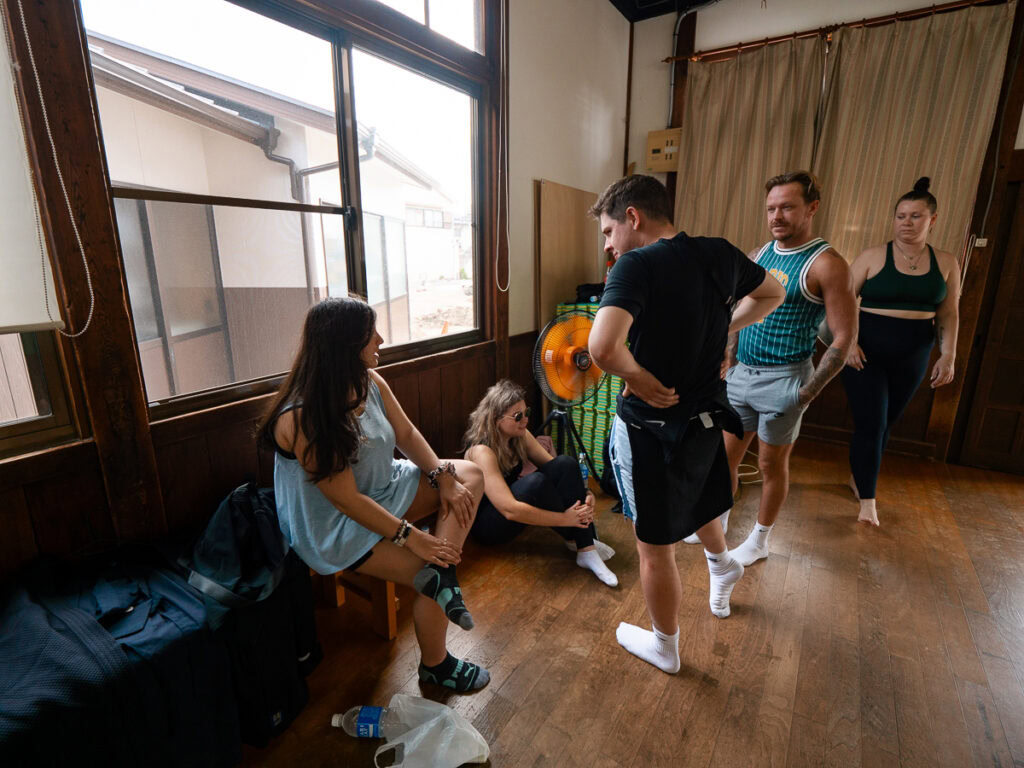
We arrived to the dojo with the Kendo instructors waiting for us with our ‘shinai’ (swords) and ‘bōgu’ (armour), got changed into our robes, and learnt how to hold and use the shinai correctly.
After nailing the main Kendo strikes, the ‘fumikomi’ (footwork) and the ‘kiai’ (shouts), it was time to put on the armour and compete one-on-one against an opponent.
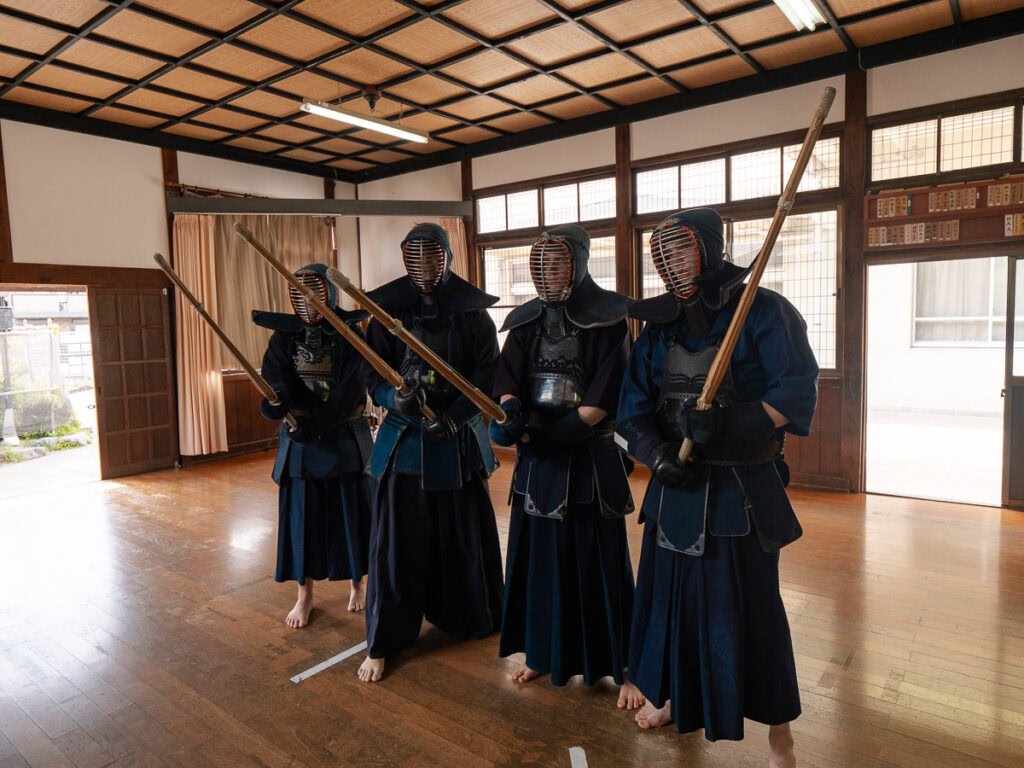
I love solo and independent travel most of the time, but this is the type of experience that makes a group tour sooo worth it! This wouldn’t have been anywhere near as fun if I’d just booked a spot by myself without any friends to experience it with.
Once all of our crew had either won or lost their Kendo match, it was Billy’s turn to compete against one of the instructors and a local Kendo champion. To absolutely no one’s surprise but to everyone’s entertainment, he had the shit beaten out of him.
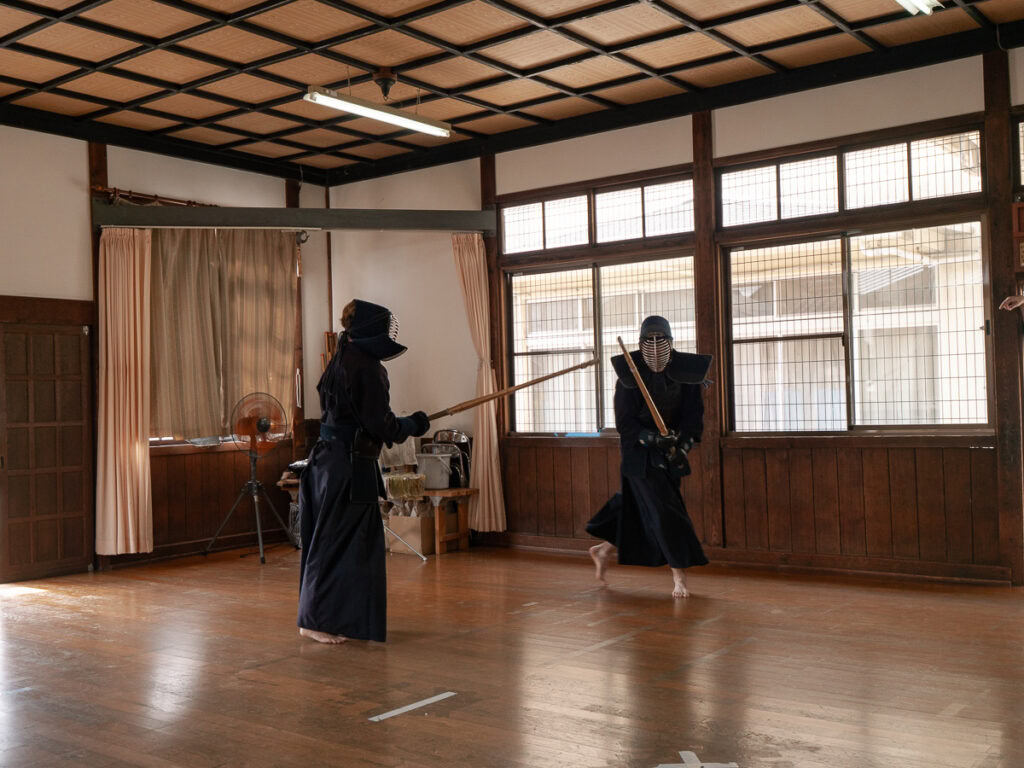
Kendo finished in the mid-afternoon, we made another Family Mart stop for much-needed FamiChiki and grabbed a Kyoto Lemonade from the vending machine (my favourite drink in Japan) before heading back to the city centre for free time the rest of the day to explore Kyoto.
I used my free time to get a greasy burger from Wagyu to Worldwide (just what I needed but the Kobe beef upgrade is wasted in a huge burger, stick with the normal Wagyu), do some laundry at the hostel, and grab some breakfast for a very early start the next day.
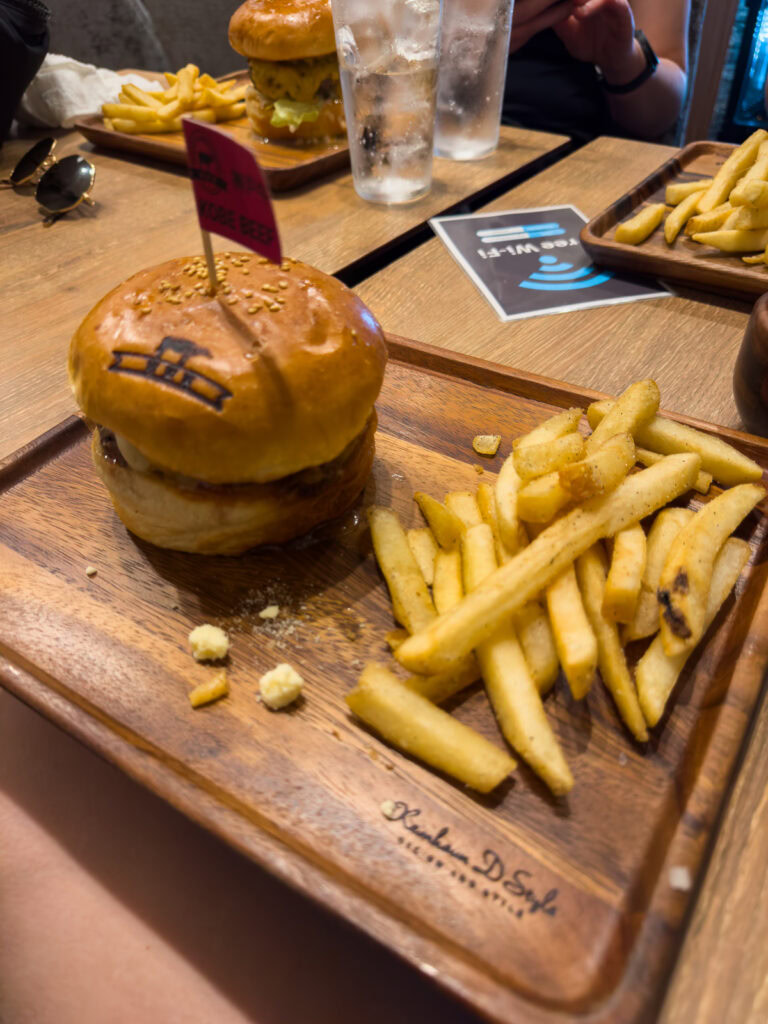
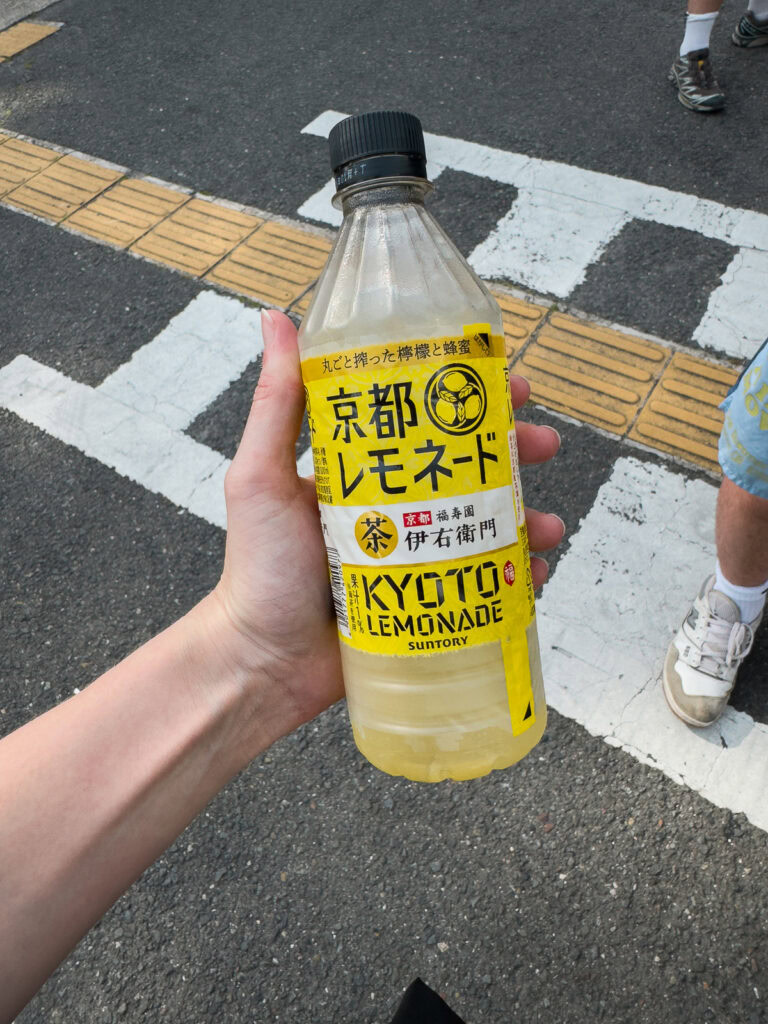
Day 8: Kiyomizu-Dera, Fushimi-Inara & tea ceremony
Our departure time this morning was 5.30am, earlier than my bedtime two days before!
Our 5.45am train got us to Fushimi-Inari Shrine at 6am, which might seem like overkill but it certainly was not. This is where you’ll find Kyoto’s famous vermilion (the name of the red-orange shade) torii gates, with thousands leading you up Mt Inari.

We had an hour and a half to wander the paths, enjoy the viewpoints and take lots (and I mean lots) of photos, and by the time we got back to the entrance at 7.30am there was already a constant stream of incoming visitors.
It’s one of the most popular spots in Kyoto, and by 9am it’s absolutely rammed with tourists. An early morning visit is a MUST.
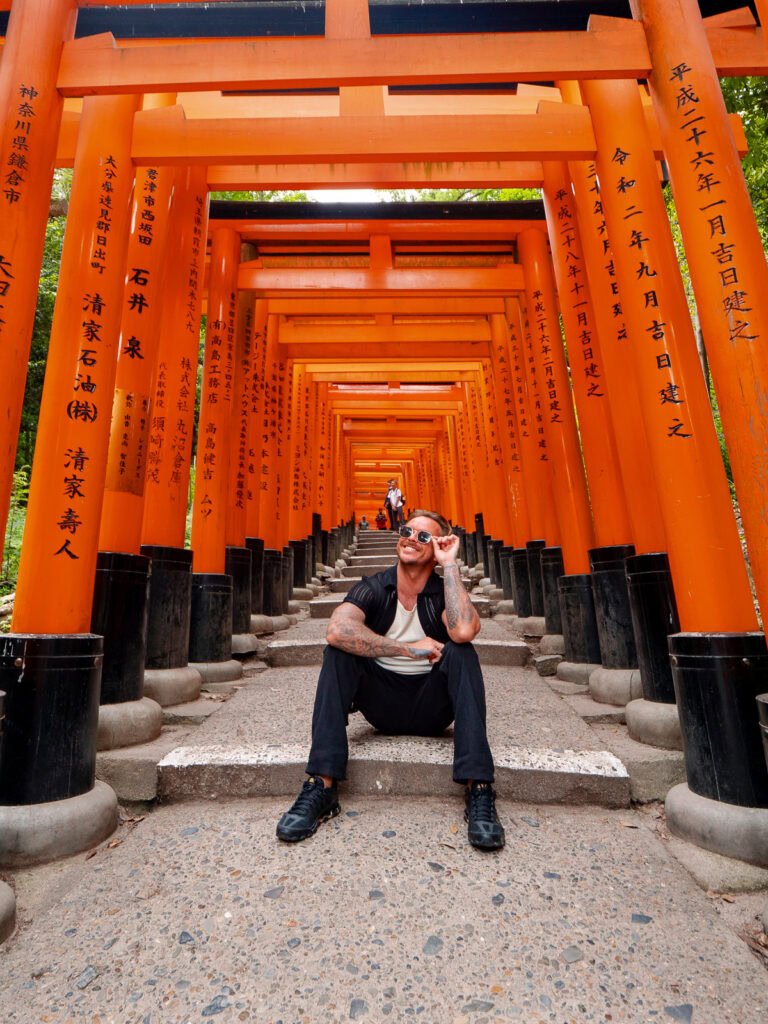
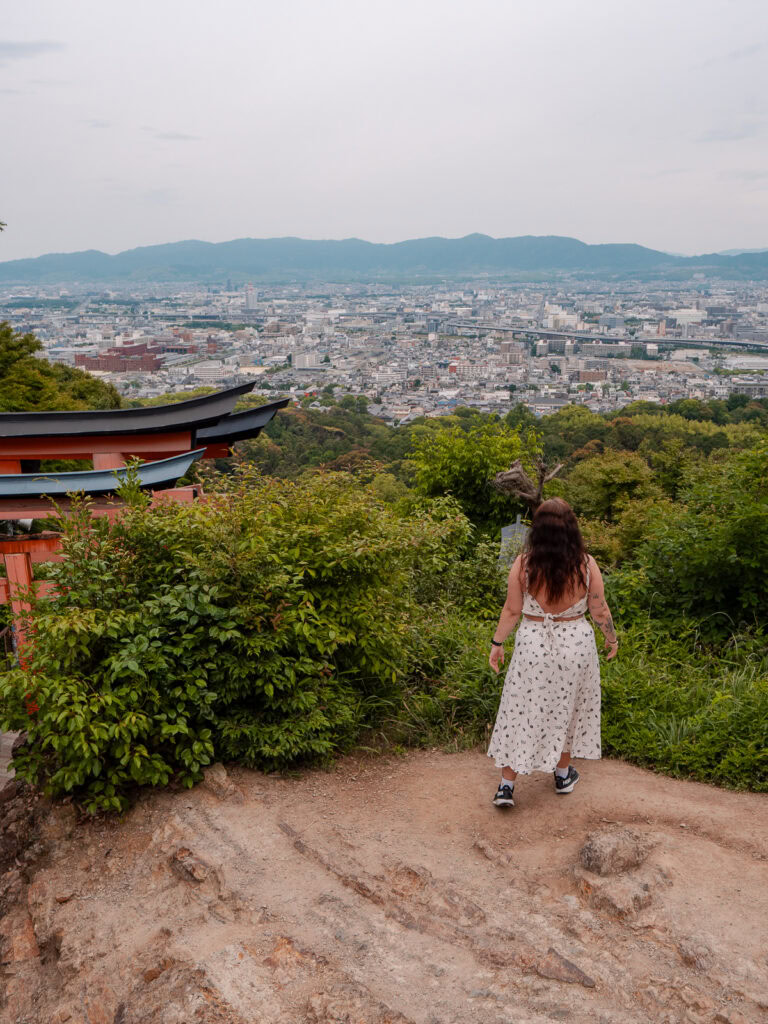

Our sightseeing continued with Kiyomizu-dera, a 1250-year-old Buddhist temple set amongst the trees with spectacular views over Kyoto.
I’d actually been here before with the LUMIX conference I went to in Japan last year so I tapped out of the temple tour and spent some time perusing the souvenir shops along the incredibly busy Matsubara-dori instead.
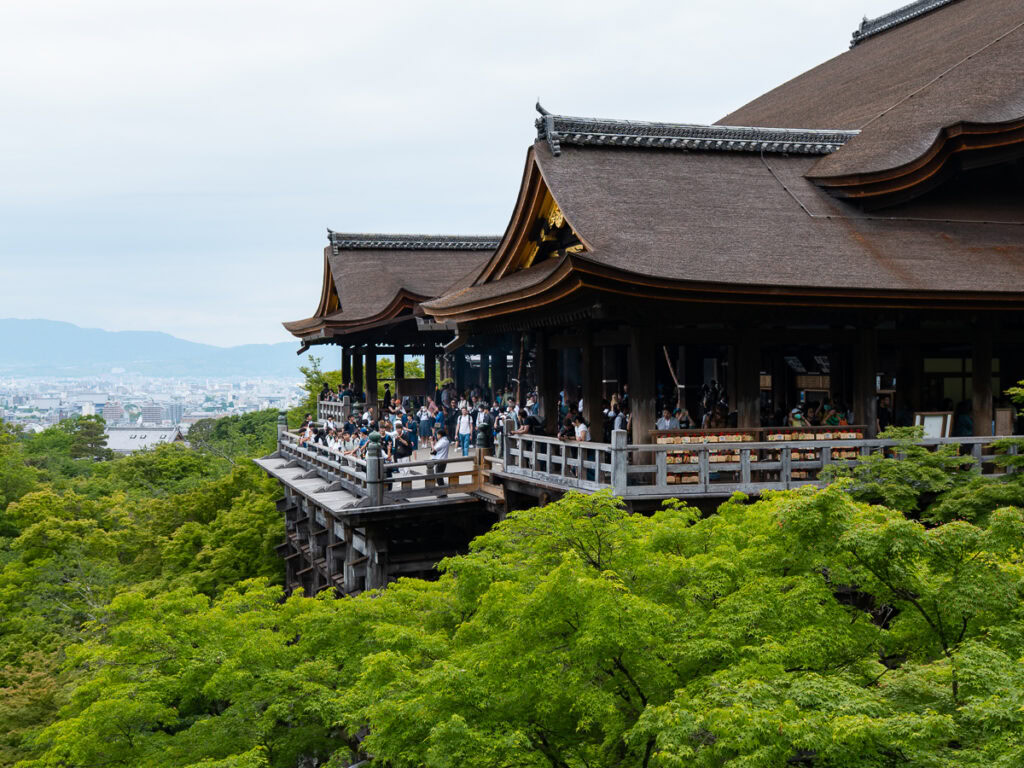
By this stage it was 9.45am and it was paaaaacked with people, this would be another beautiful spot for photos but you’d need to get here pre-7am to capture it without crowds.

Another included activity for this day was a traditional matcha tea ceremony, and we had the option to get dressed up in authentic kimono/yukata, which all of us decided to do.
I had also done this last year and at that time I looked into the ethics around wearing a kimono as a tourist, because wearing traditional outfits can be perceived as cultural appropriation in some circumstances, but this is not the case at all in Japan. Foreigners are welcomed to wear a kimono in Japan and the Japanese people love sharing their culture with us, provided we wear it correctly and act respectfully. So if this was a concern of yours too, you’re all good!

It’s amazing how quickly the kimono ladies can get you ready, lifting your arms and spinning you around and pinning your hair in a seriously impressive up-do in a matter of minutes.
We had a bit of time to take photos in our kimono before heading inside for a traditional tea ceremony, where we learnt about the historical and cultural significance of matcha and got to make our own.
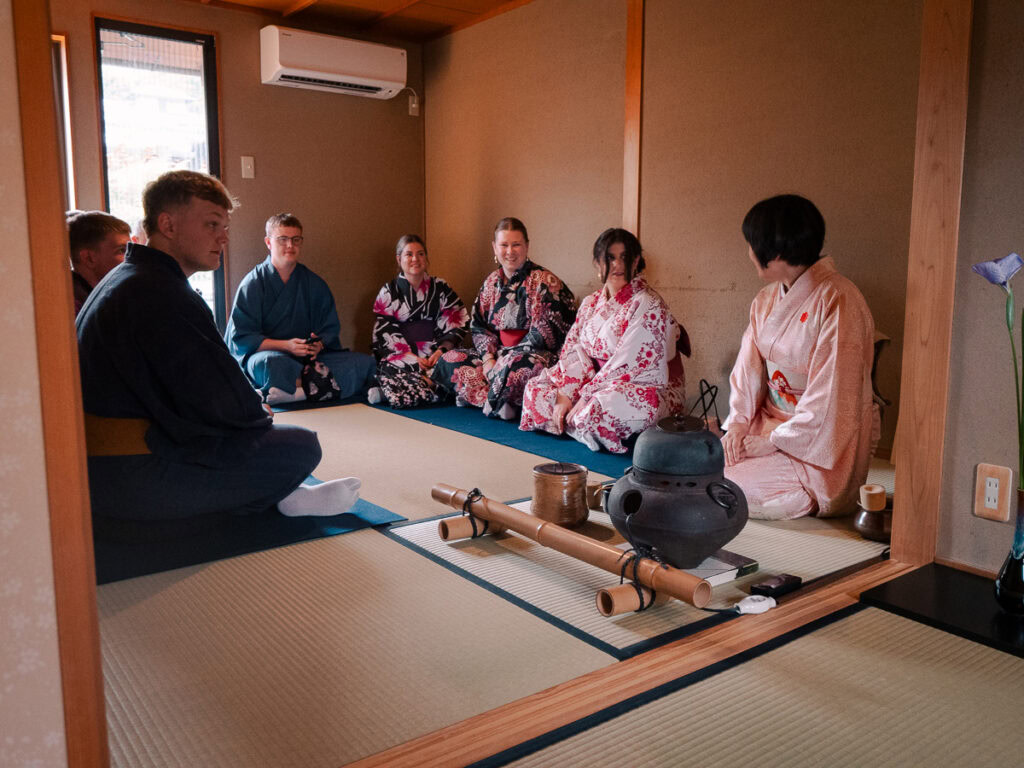
The kimono hire was actually for the full day but those shoes are no joke, so we all decided to return them and get back into comfy clothing. Worthwhile for the experience and the photos, but not the most comfortable if you’re not used to it.
After cramming a lot of Kyoto’s highlights into the first half of the day, the rest was free time to do whatever we wanted.
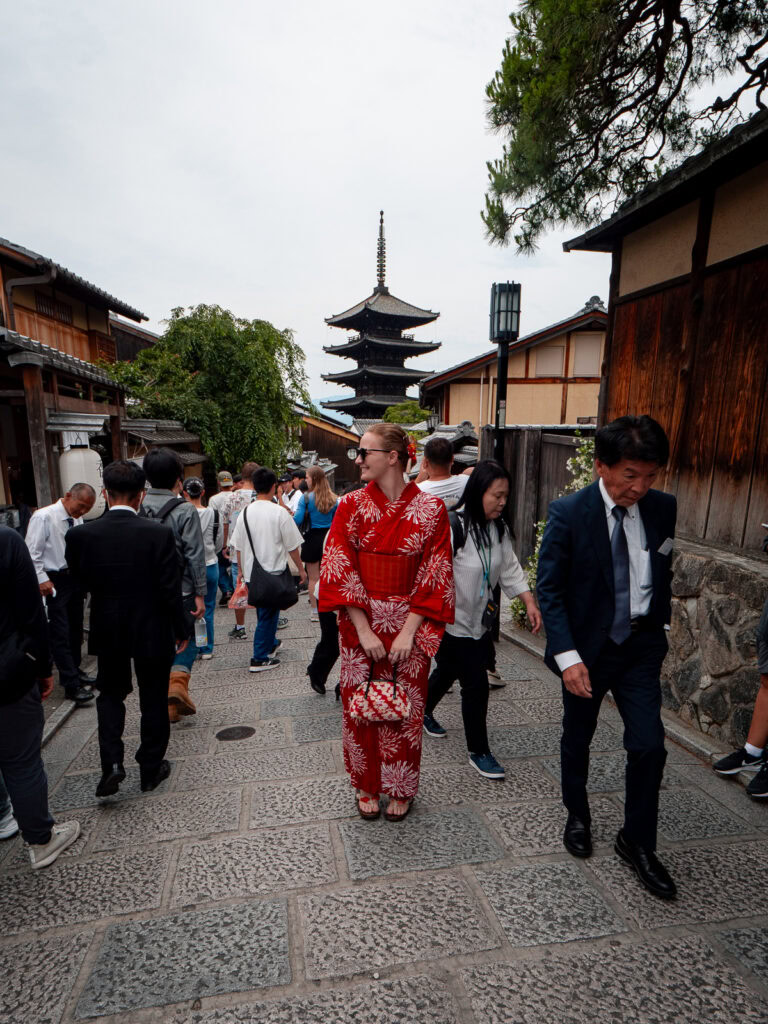
A few of us decided to partake in a DIY food crawl, hitting three top-rated spots Billy had recommended to us.
We started with sushi at OBENKEI in Gion which was brilliant, I had delicious tempura and tuna maki but the omakase set one of the guys got looked incredible!

Next we headed to Chao Chao Gyoza at 4pm when they opened, we only had to wait 20 minutes for a seat. This place is super super popular though, there’s always a line.
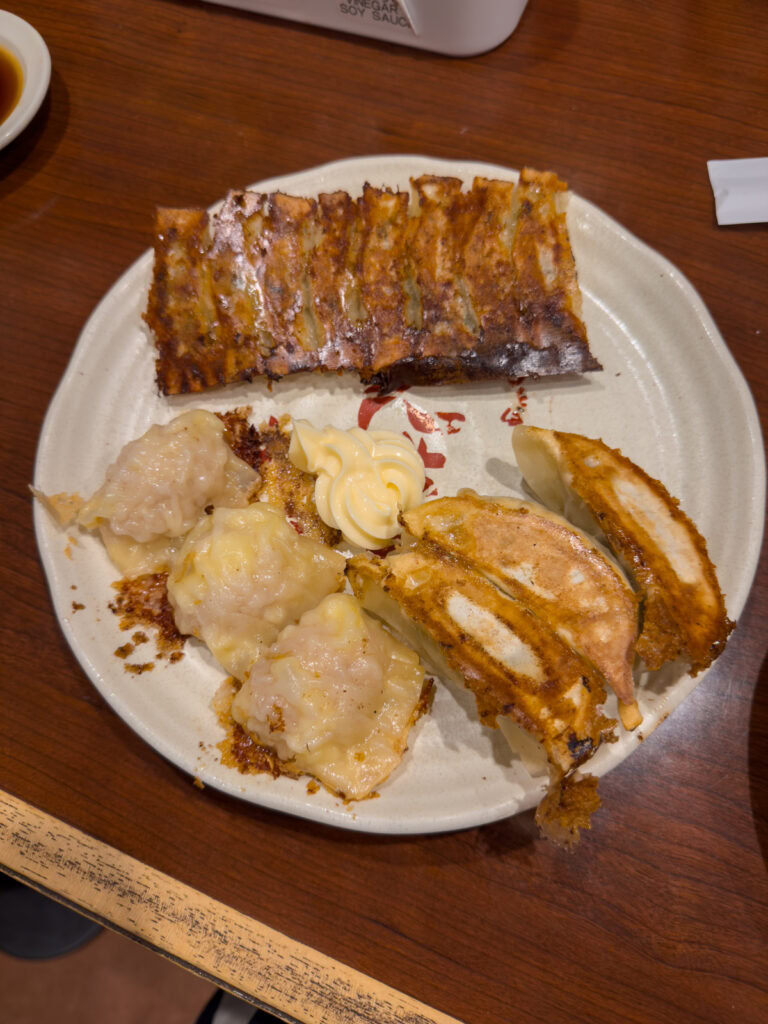
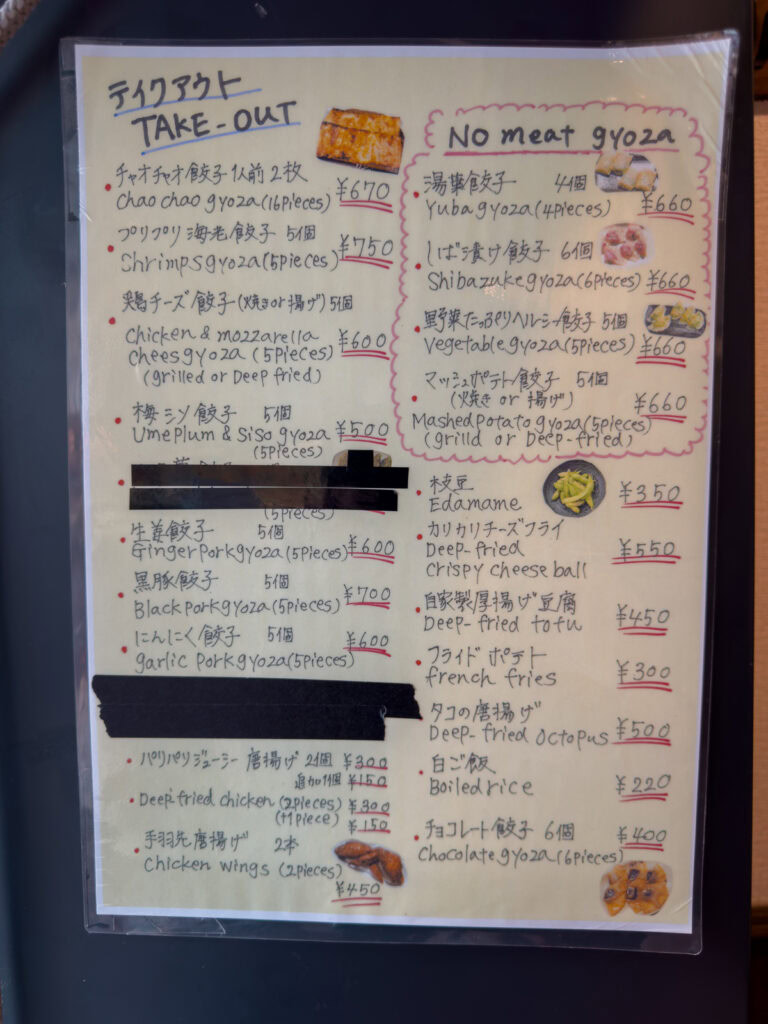
Finally we met the rest of the group at Torikizoku, a yakitori chain where everything on the menu is 390JPY ($2.68USD), including alcoholic drinks! They have big tables and you order off an iPad with an English menu so it’s a super easy group dinner option.
It was our last night in Kyoto so some of us went back to our favourite cocktail bar, Base, for a few drinks. We were tempted by the bangers coming out of Barcode Karaoke upstairs buuuut the next morning was another early start, so we decided to be responsible (for once) and headed home instead.
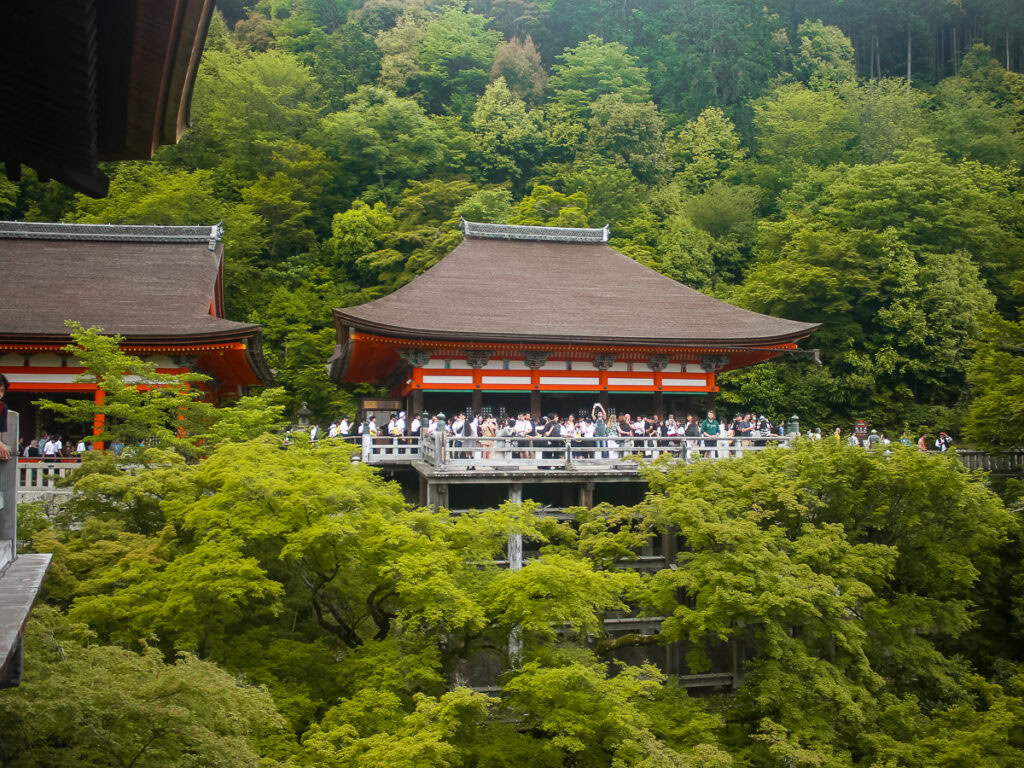
Day 9: Bamboo Forest, Monkey Mountain, Osaka food tour
It was a 7am departure from the hostel to make our way to Arashiyama Bamboo Forest before the hordes of tourists arrived, it’s a bit out of Kyoto so we got to the iconic bamboo-lined walkways just after 8am.
There were quite a few people there already but we managed to get some decent photos.
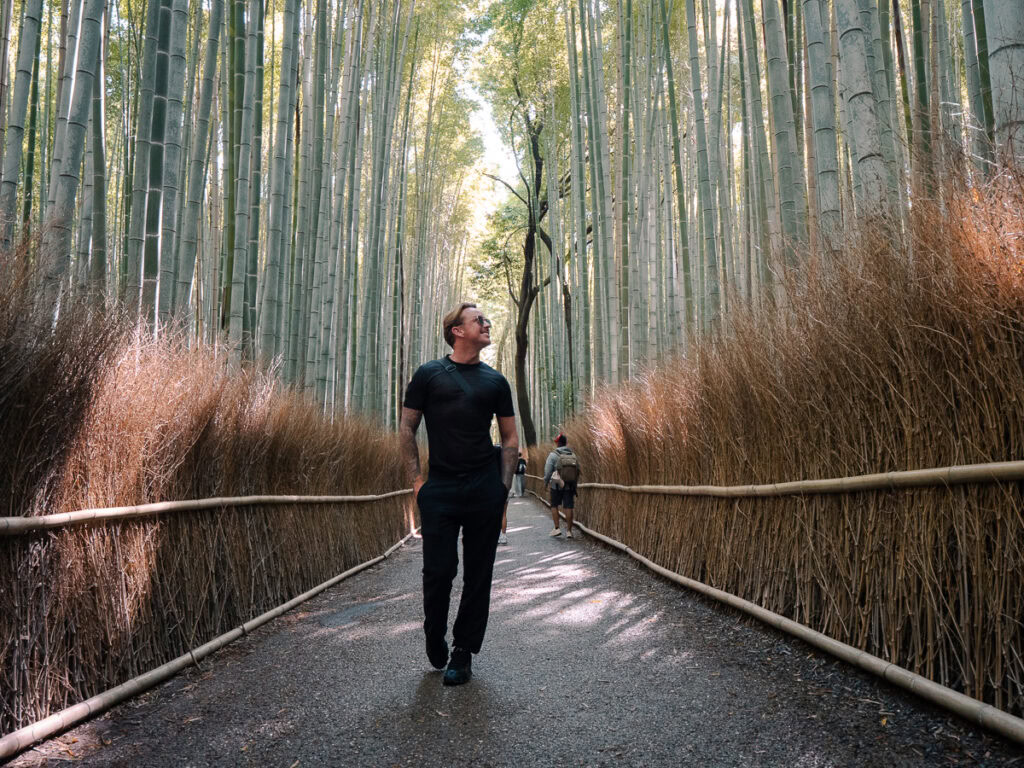
Arashiyama Monkey Park Iwatayama was a short walk away, it’s a 15-20 minute walk up to the top where you can see some of the 120 wild Japanese macaques that live here.
These cheeky monkeys are completely free to roam, they come and go as they please across the mountainside overlooking Kyoto. The view is insane!
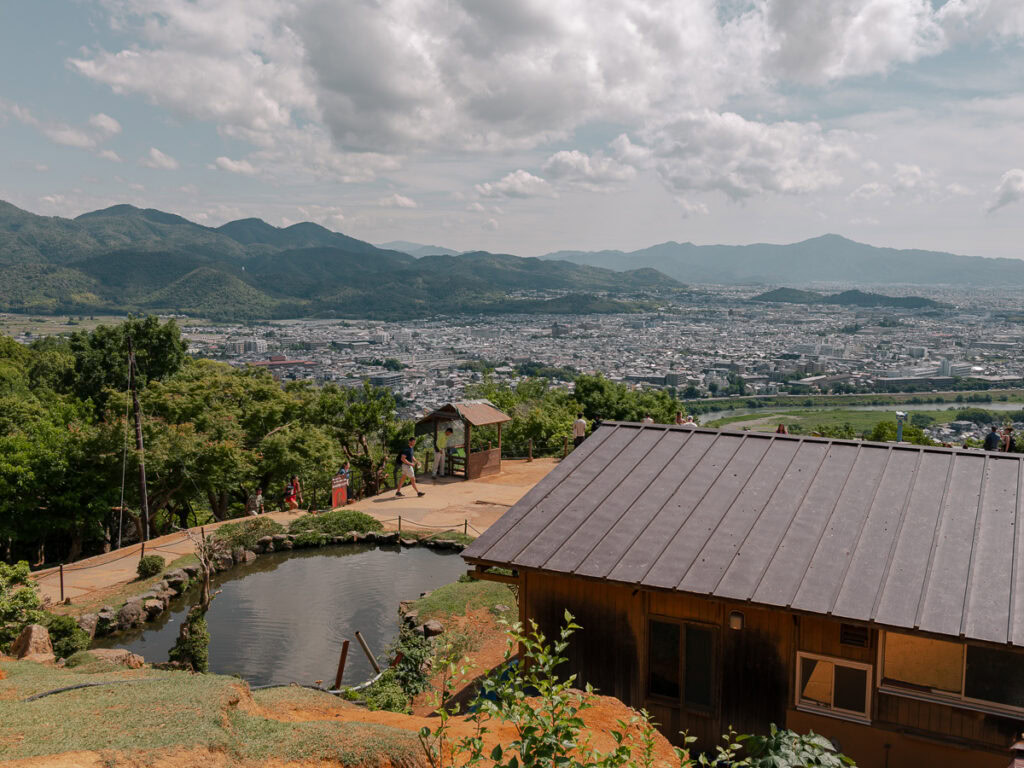
I do have to say that it’s not perfect from an animal welfare perspective.
Park staff do provide supplemental food to the monkeys to encourage them to come to the viewing area (same as the Jigokudani Snow Monkey Park) and visitors can feed them with special food inside a designated area where the humans are caged and the monkeys are outside, and any animal-human interaction like this does impact wild animal behaviour.
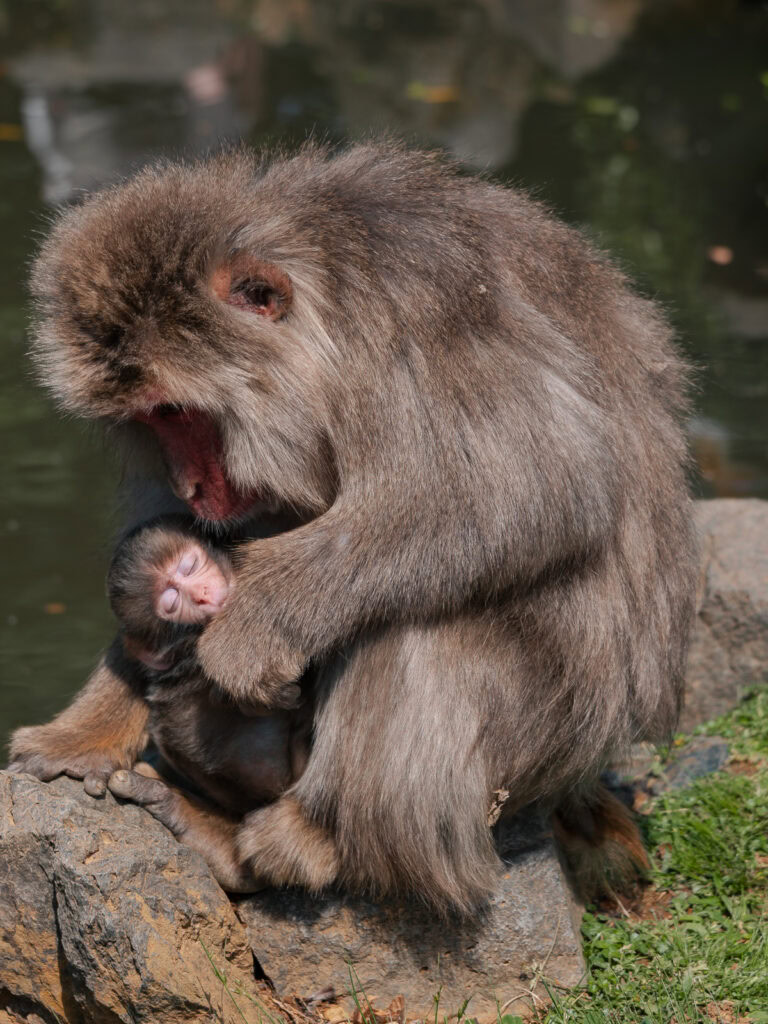
But as far as Japanese wildlife experiences go, this is about as ethical as it gets.
Park staff are stationed around the viewing area to ensure people aren’t touching the monkeys or feeding them outside of the feeding zone, and the monkeys are sooo much more relaxed and unphased by humans compared to the ‘wild’ monkeys in Ubud, Bali or at Batu Caves in Kuala Lumpur, where they’ve been habituated to grab food out of your bag or act aggressively.

It’s infinitely better than most animal cafes where cute creatures are forced to interact with touchy guests, or cruel zoos and aquariums with tiny enclosures for captive animals. The monkey park is also included in a tour from industry leaders Responsible Travel and is an optional extra on an Intrepid Travel tour, which are two of my go-tos for responsible tourism guidance.
ANYWAY I chose not to feed the monkeys and just enjoyed watching them play instead, and I spotted the teeniest tiniest baby monkey I’ve ever seen.
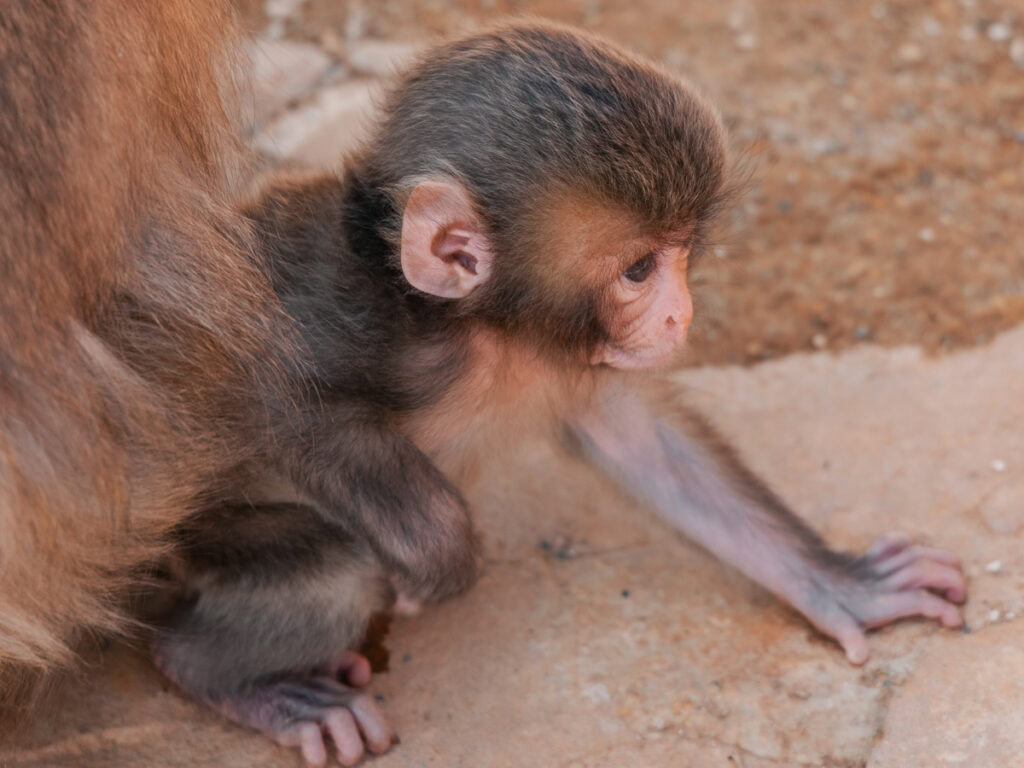
Back down the mountain we had an included boat ride which was so dreamy, a nice rest after a lot of walking, and a floating food vendor came over to sell us treats like grilled squid, mitarashi dango and even ice cold beer.

From Arashiyama we caught the train back to Kyoto for lunch. A few of us went to Sushiro, a huge conveyor belt sushi chain, another group-friendly option with iPads to order your food which will be zoomed right to your table.
They had some weird and wonderful specials available, including a prosciutto, basil and mozzarella sushi which was unexpectedly delicious!

The next stop on our itinerary was Osaka, 1h 20m by train from our hostel in Kyoto.
Our Osaka hotel, Hotel WBF Namba Motomachi, was less than 10 mins from Namba Station and 15 mins from Dotonbori, such an ideal location for a base. It was a proper business hotel with private bathrooms, but the rooms were very cramped so don’t expect to be able to open your suitcase comfortably.
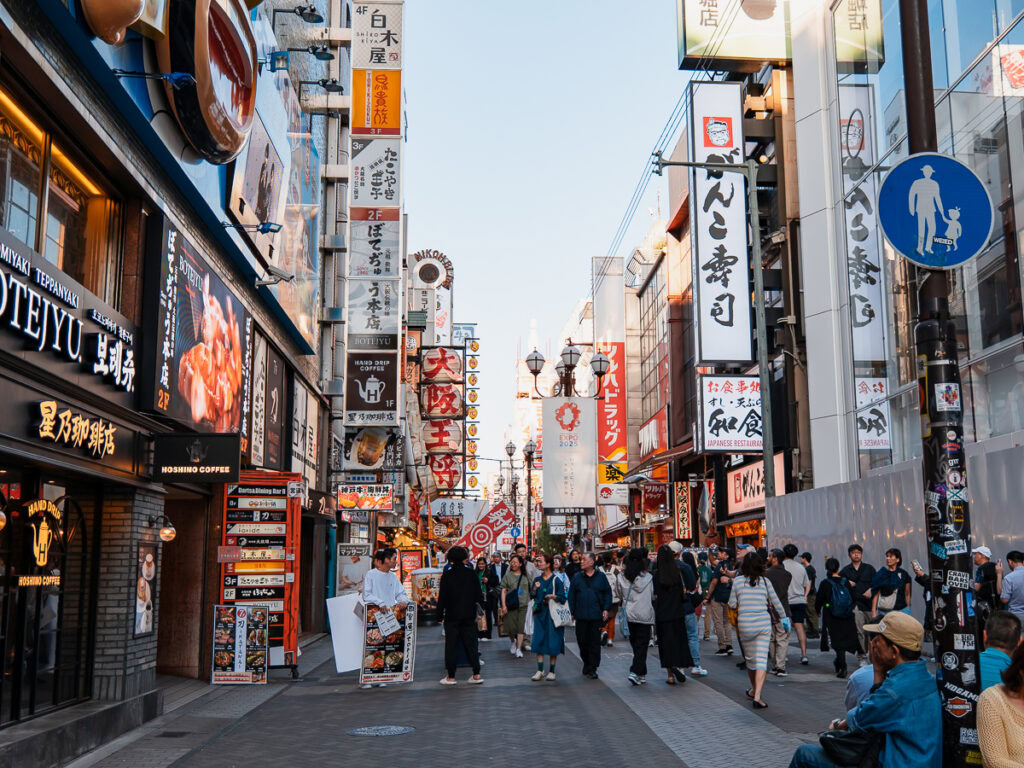
We had free time for the rest of the afternoon, my fellow creator friend Dana (@wanderingdonut) happened to be in Osaka at the same time so I caught up with her and her boyfriend for a couple of cocktails before I joined the crew in the evening for our included Dotonbori food crawl.
Billy took us around a bunch of casual eateries to try local culinary specialties, including takoyaki (octopus balls), kushikatsu (deep-friend skewers of meat and vegetables), okonomiyaki (Japanese pancake) and taiyaki (custard-filled fish-shaped dessert).

The night didn’t end there though, our final included activity was an all-you-can-drink one hour karaoke session (and we all paid to extend it for an extra hour) and then we headed out for a night on the town.
Day 9 is the final day for anyone doing the 10 day Japan Classic tour, so it’s the designated party night of the tour! If you want to limit your late nights then this is the one to save yourself for.
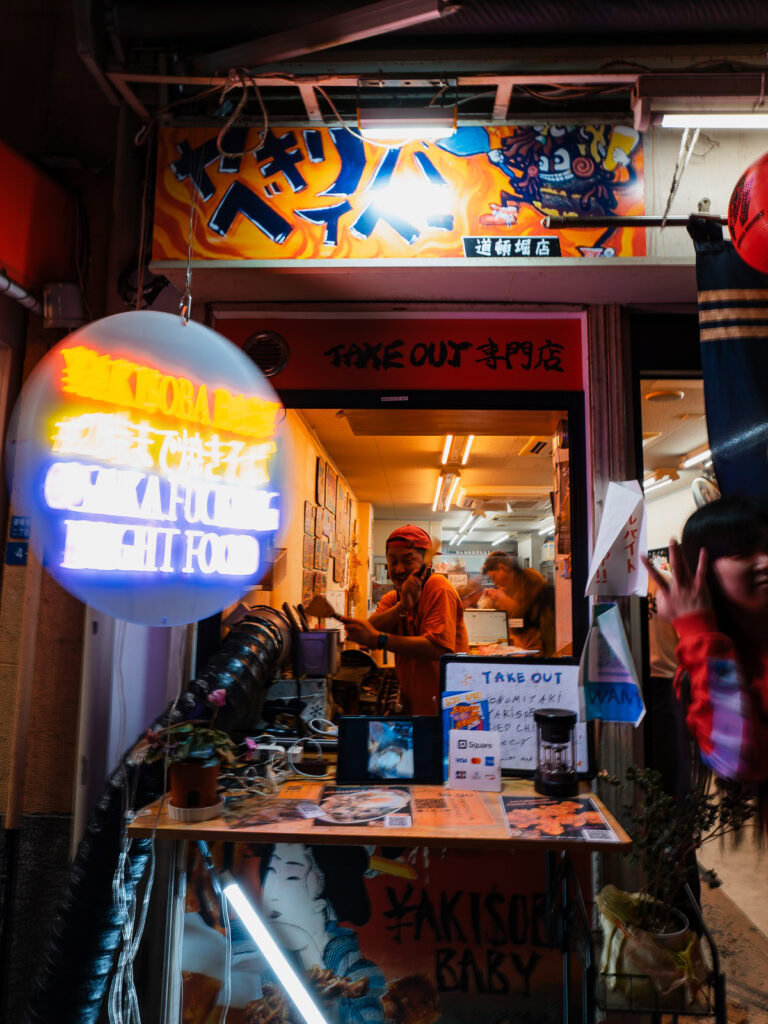
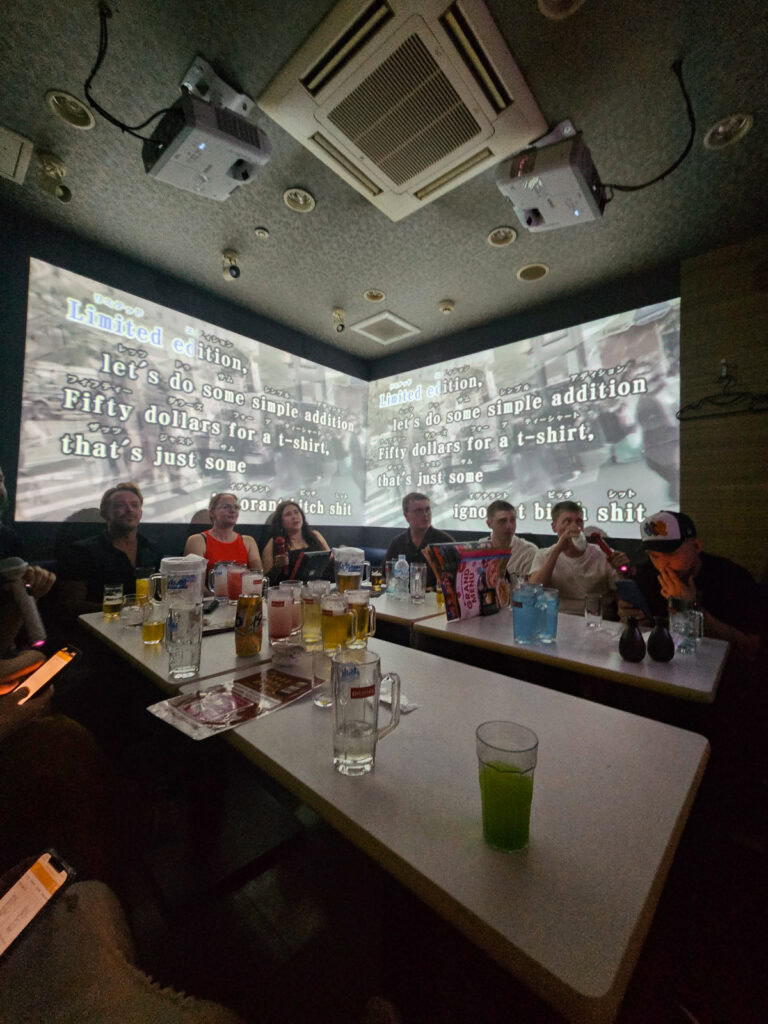
Day 10: Osaka Castle Gardens & free time
After another post-sunrise bedtime for a few of us (💃🏼) we were all grateful to have free time in Osaka for a chunk of the day, with nothing organised until 2.30pm. Breakfast was included at the Osaka hotel but I slept in so I can’t tell you what it was like!
Our third karaoke night well and truly ruined my voice and I woke up sounding like Darth Vader.
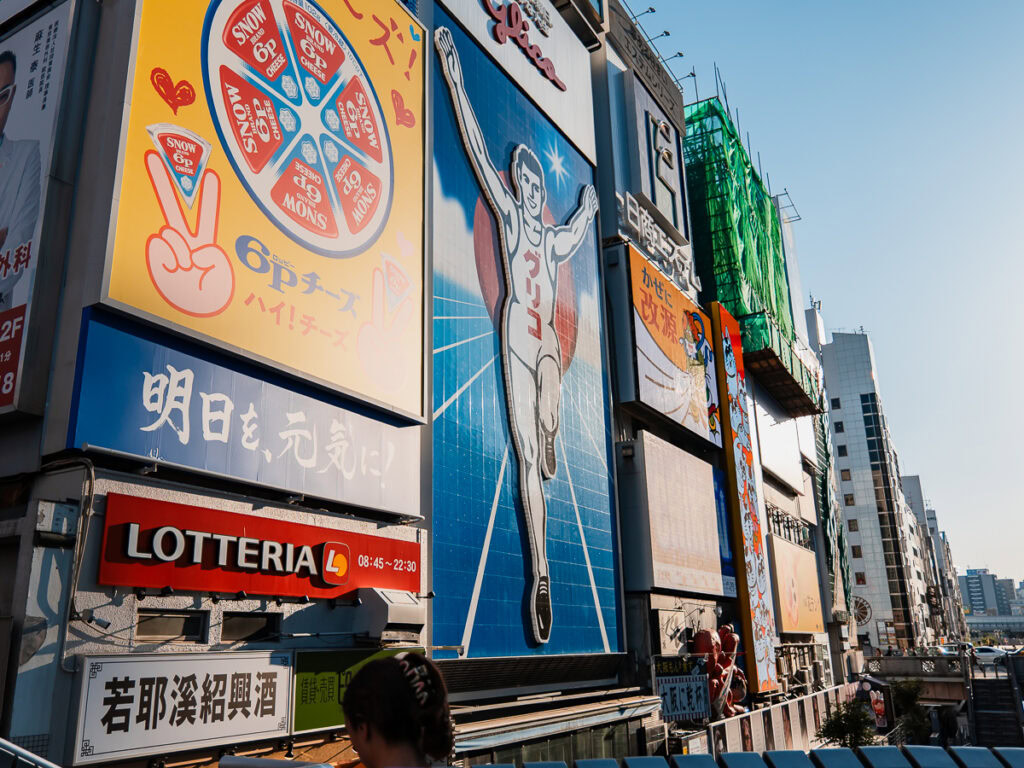
My ability to speak was replaced with an insatiable craving for Italian, which is not ideal when you’re in Japan. Japanese-style Italian can be very hit or miss, they have their own fusion of the two cuisines called itameshi but I was on the hunt for genuine Italian with European cheese.
Stoked to tell you that Osaka came through 👏🏼 I found a little corner restaurant only a few minutes from the hotel called ‘Italian Bar Shokudo Chako‘ and it was everything I needed and more. I had prosciutto torta fritta (fried dough), an impeccable strawberry, burrata and almond dish, and a gorgonzola cheesecake that’s made it onto my list of ‘meals I’ll never forget’. They had a Wagyu bolognese on the menu which was brilliantly-reviewed but I couldn’t fit it in, so I’ll have to come back!
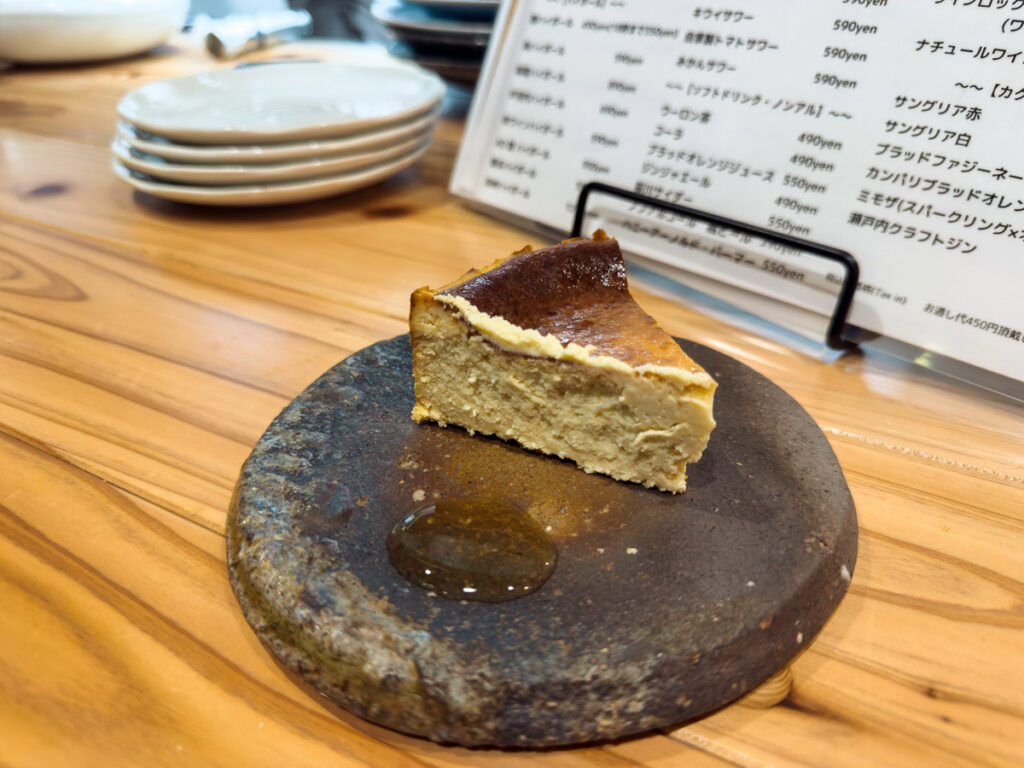
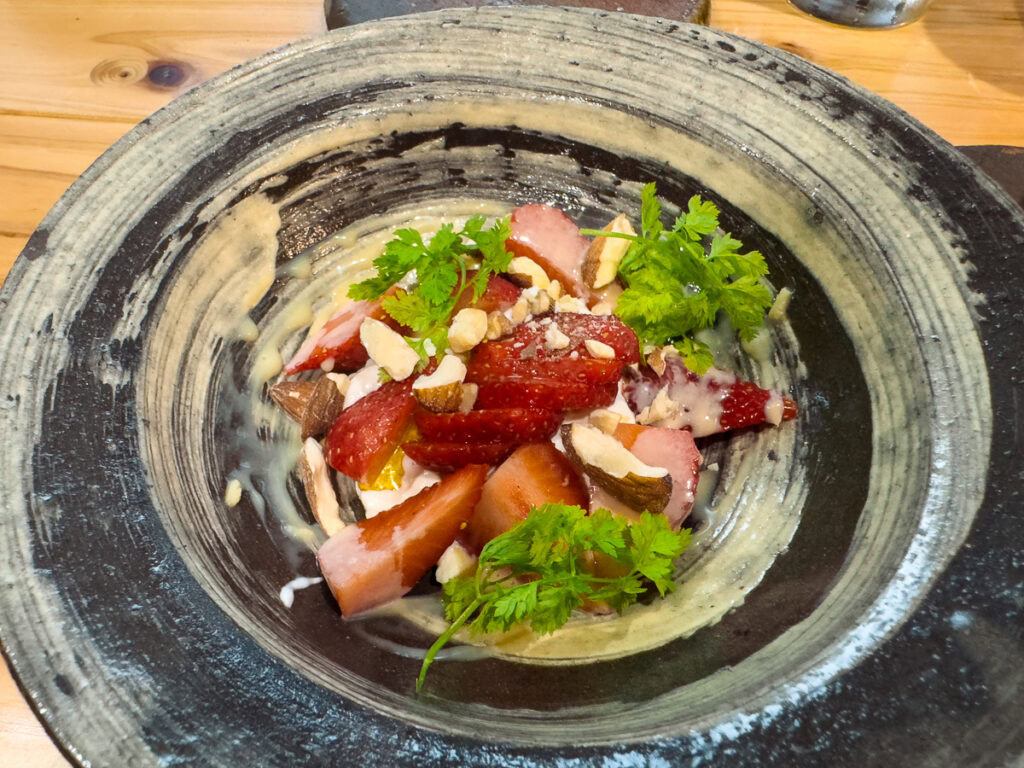
The group met up in the afternoon to head to Osaka Castle for a few hours of sightseeing, but I decided to rest my voice for a little longer and met them all for the evening walk around the neon streets of Shinsekai instead.
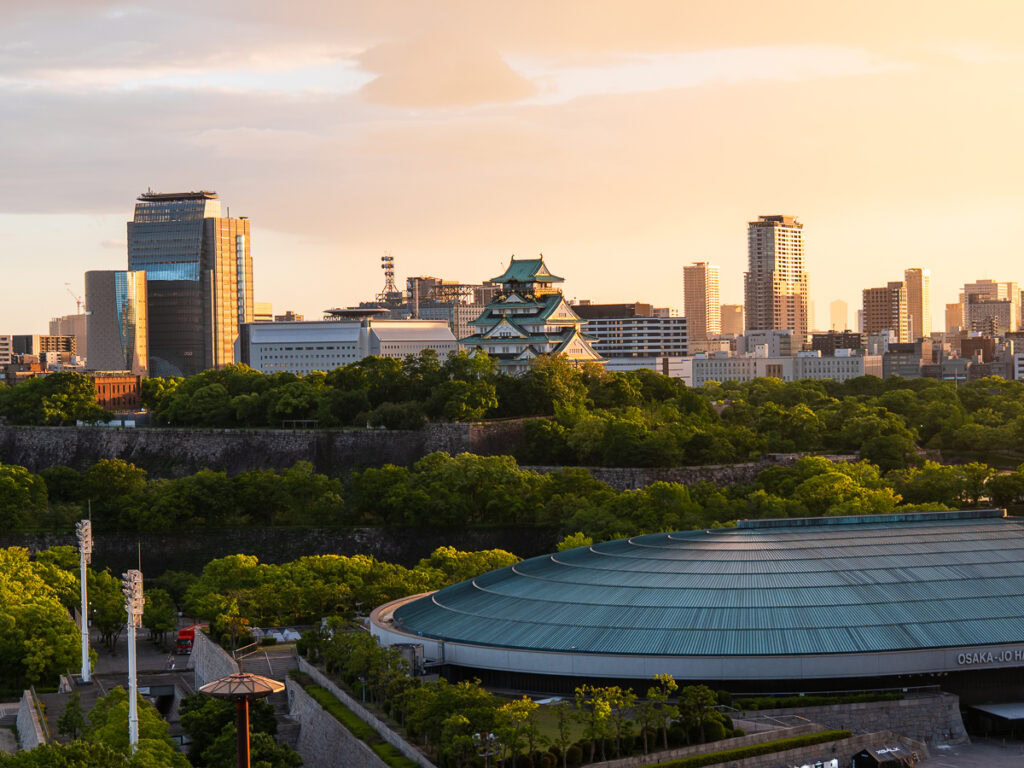
Billy organised a group booking for dinner at a kushikatsu place, another order-on-the-tablet situation, lots of skewer options including different meats, seafood, cheese, tofu and vegetables, all around 100-250JPY each ($0.70-$1.72USD).
Some of the crew found a games centre for claw machines and racing games but most of us were wrecked by 10pm.
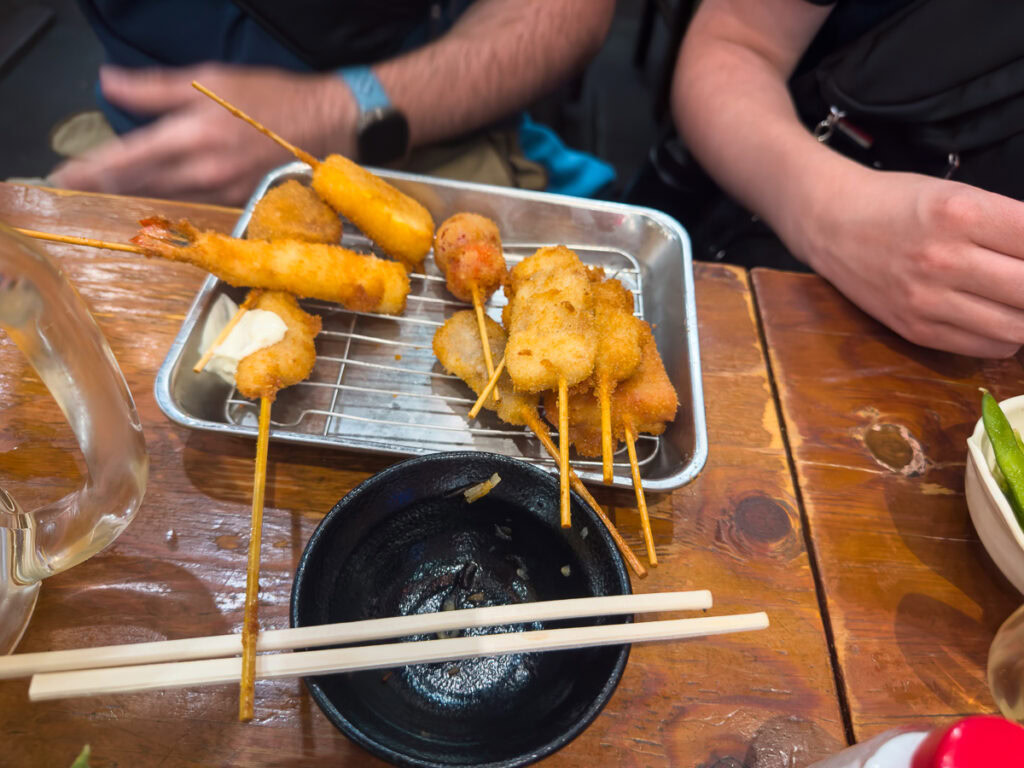
Day 11: Nara Park & Koyasan temple stay
Another early start with a 7.30am train to reach Nara Park by 8.15am, before it got too crazy.
An ancient capital of Japan from the 8th century, Nara is famous for its wild sika deer that have roamed the park for more than a thousand years. They’re considered “messengers of the gods” in Shintoism and are protected by law.
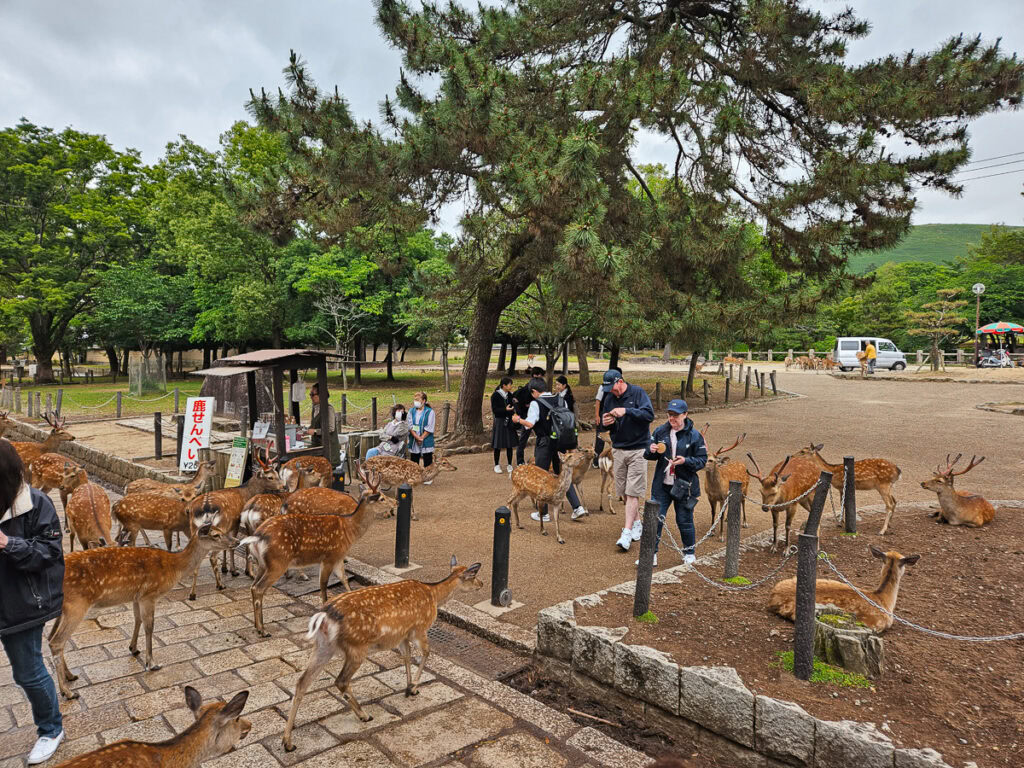
You can buy special deer crackers to feed them, they’ll even bow at you to ask politely, but beware that they can get a bit headbutt-y if they finish the crackers and you don’t have any more.
I’d recommend walking to one of the quieter areas of the park if you want to feed them, the main stretch is where the more assertive deer hang out and before you know it you’ll be surrounded by hangry animals.
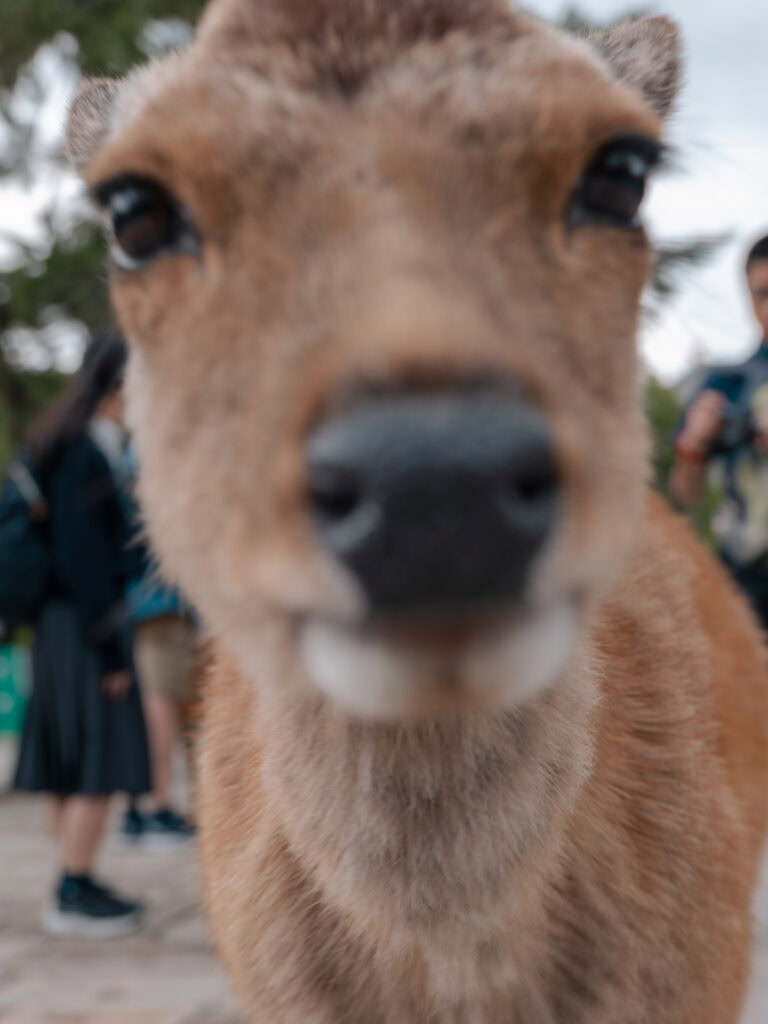
I decided against feeding them because I didn’t want to risk my camera getting scratched, but I have to admit I found it quite entertaining watching tourists get nipped by frustrated deer after they’d been teasing them or holding food up just to get photos.
We also had time to visit the magnificent Todaiji Temple and its huge Buddha statue before saying sayonara to the cute lil Bambis and making our way back to Osaka.
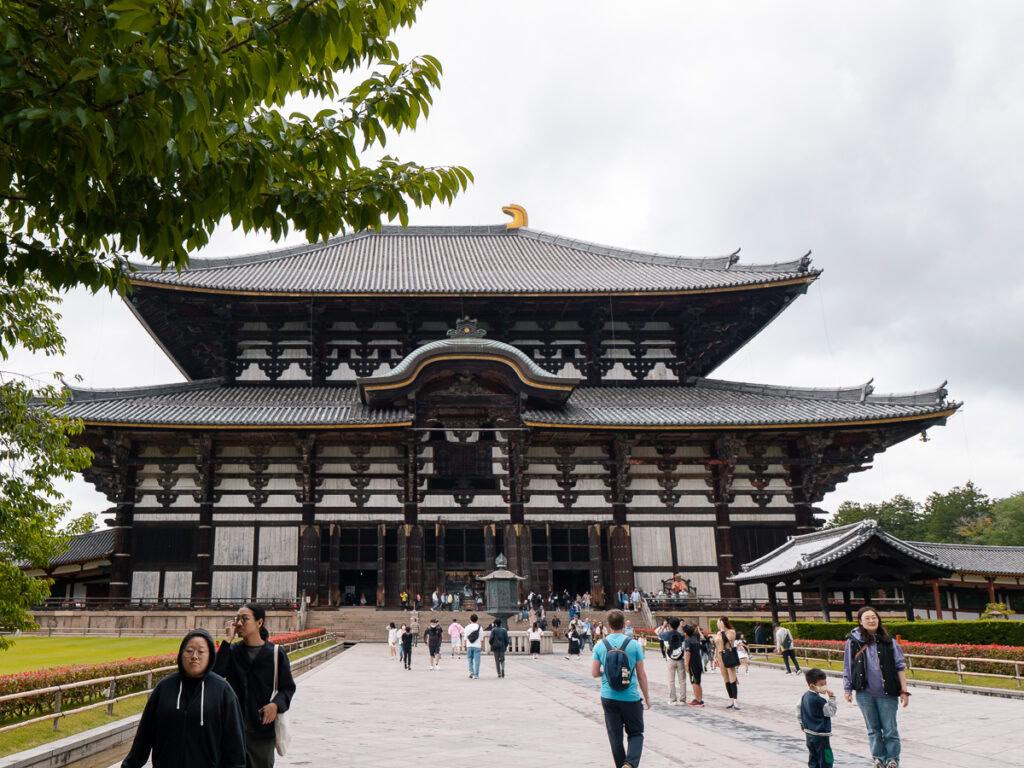
From here we had one night in Koyasan before the final stop of the trip in Hiroshima, so we had the chance to use the luggage transfer service again and avoid lugging our big bags to our temple stay. The transfer cost me 2400JPY ($16.50USD) for my 20kg suitcase.
Osaka to our temple stay on Mount Koya took two hours via a scenic train ride, cable car and bus, and we arrived at another beautiful Buddhist temple in the mid-afternoon. This place was so peaceful, I swear my heart rate dropped as soon as I walked through the doors.
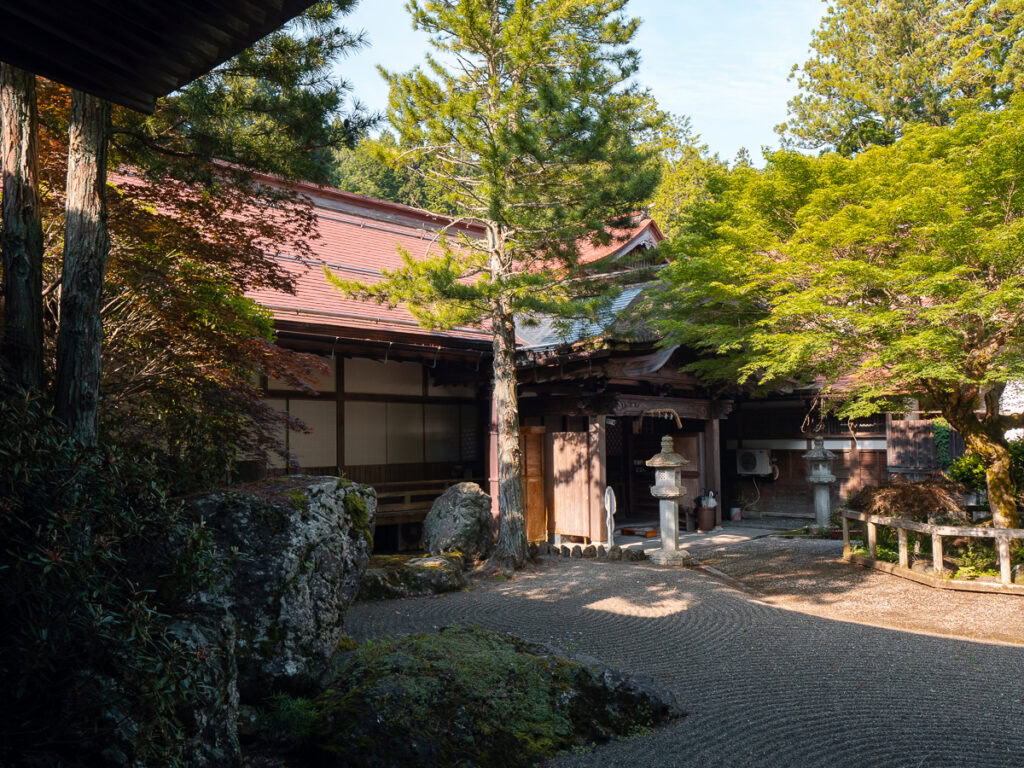
We had Japanese-style tatami mat twin rooms and shared bathrooms, and we had the temple to ourselves.

Billy took us for a walk through Okunoin Cemetery, the largest in Japan with more than 200,000 graves, where Kōbō-Daishi (the founder of Shingon Buddhism) is said to be eternally meditating in his mausoleum. I’m not typically one for ‘dark tourism’ but this cemetery was honestly mind-blowing, with mossy tombstones for as far as the eye could see.
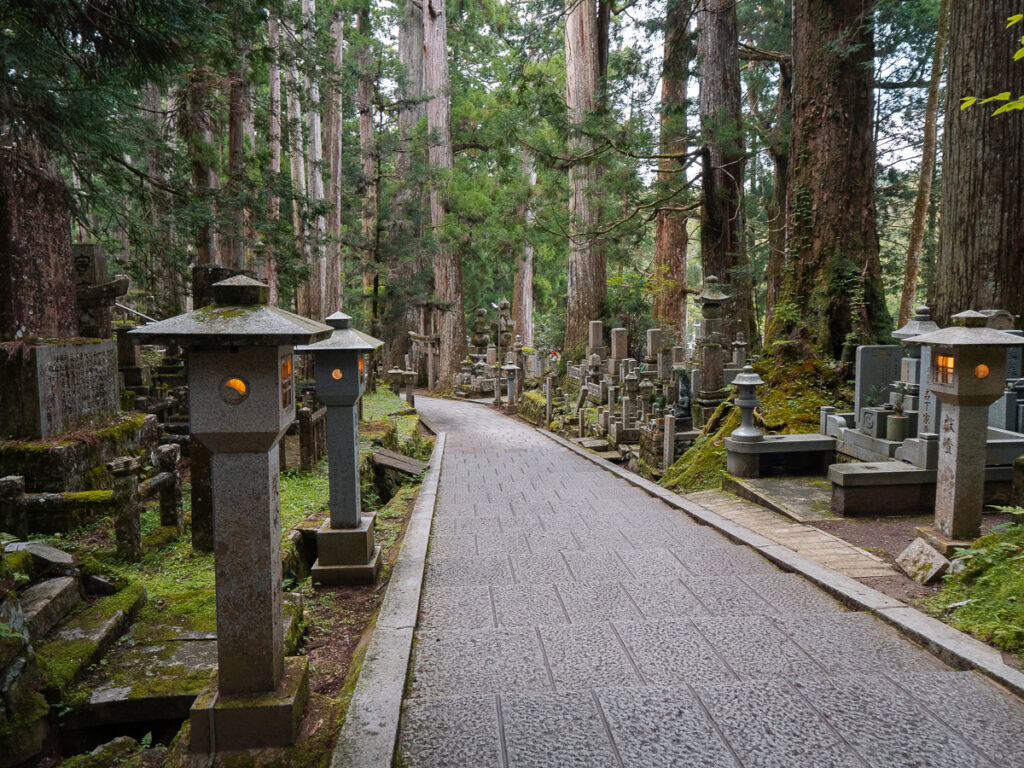
Back at the temple stay we experienced what must’ve been a spiritual lesson, when we saw one of the koi fish lopsidedly swaying at the top of the pond, with his fishy friends swimming over to check on him with a loving headbutt. He didn’t survive the night.
RIP Jerry 🐟 hope you get reincarnated as something cool!

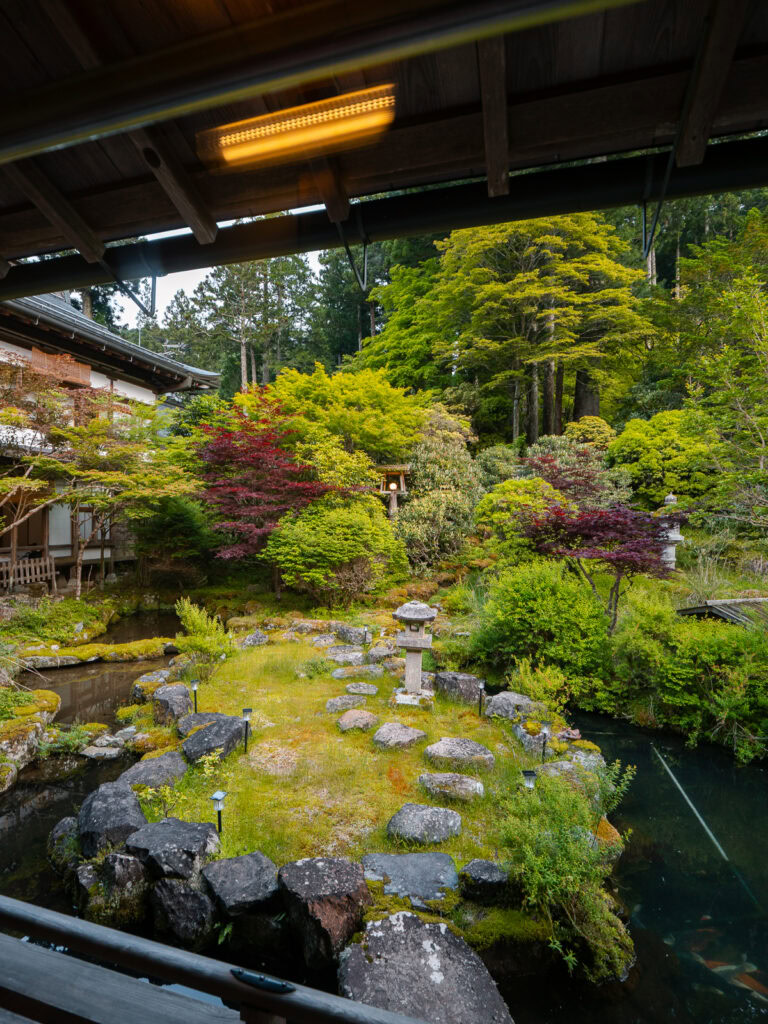
Dinner at the temple was included, two trays of colourful plant-based dishes prepared by the resident monks using local ingredients.
There were two private onsens on site, one for men and one for women, so we all took turns resting our muscles in natural mineral-rich water.
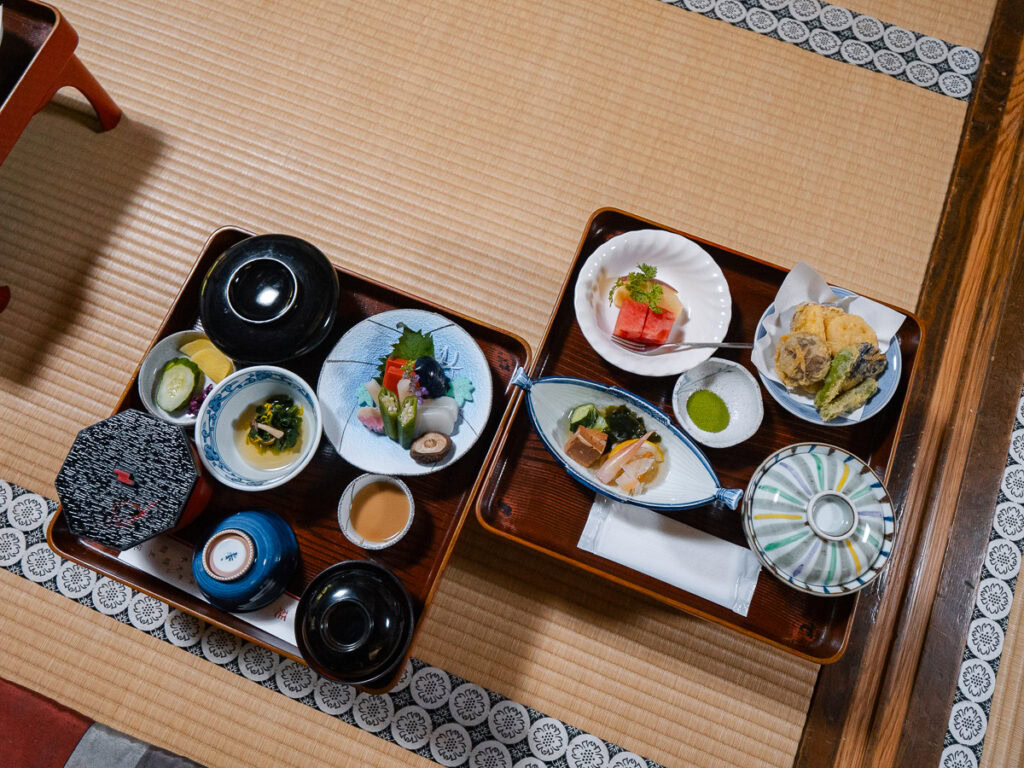
Day 12: Koyasan to Hiroshima, Hiroshima walking tour
We had another plant-based meal prepared by the monks for breakfast, then spent some time exploring the Danjo Garan Sacred Temple Complex before making our way back to Osaka by bus, cable car and train, and finally switching to the bullet train to get us to Hiroshima.
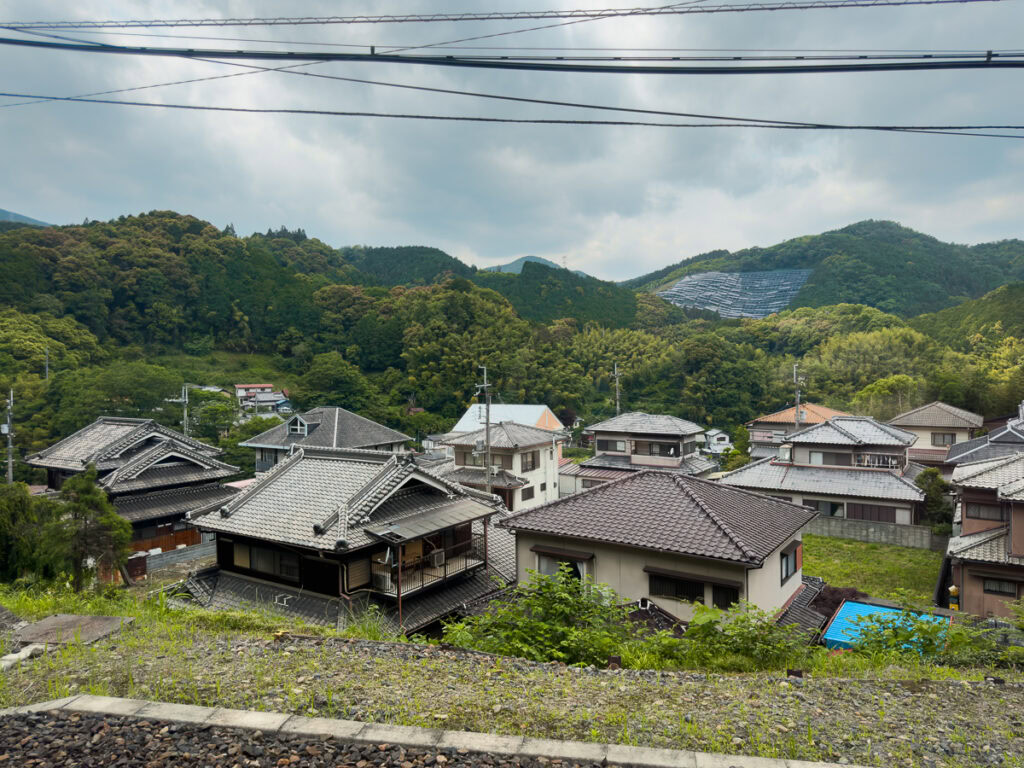
This is one of those places that will truly leave a mark on you as a traveller. I was expecting the city to be very sombre and depressing, but it actually surprised me in the best way possible.
We arrived at 3pm and our hotel was an easy streetcar ride from the main station, another business hotel with twin rooms but a bit more spacious than Osaka.
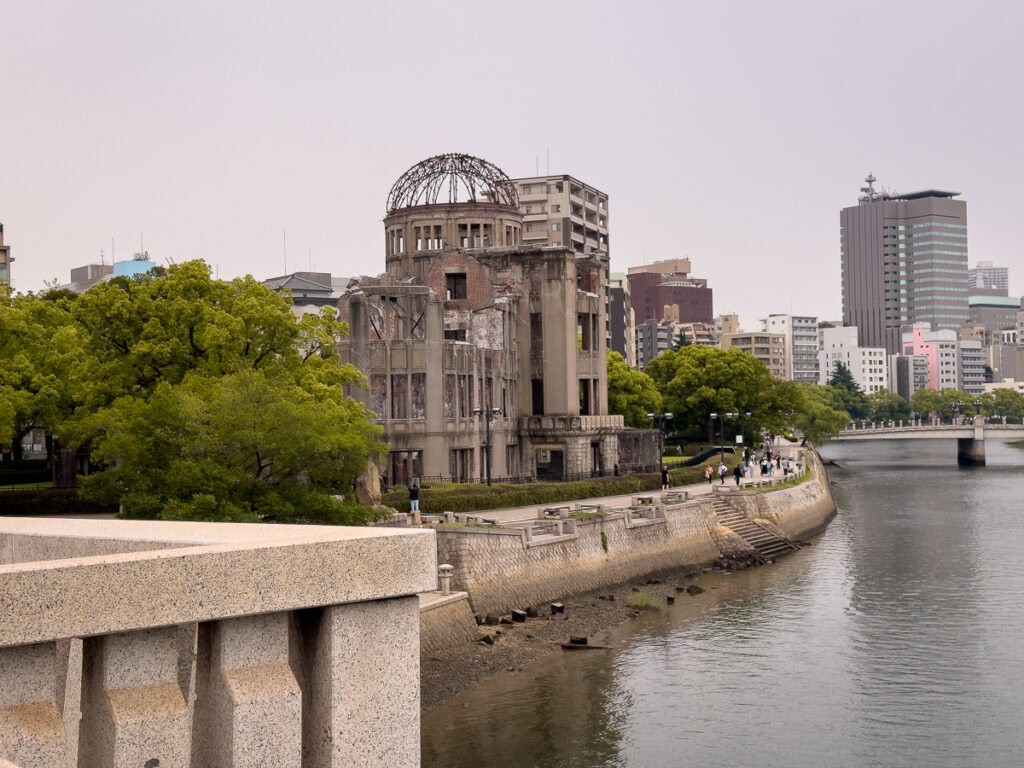
Hiroshima is best explored with a local to explain the devastating history and impressive resilience of the city, and we spent a couple of hours with our friendly local guide who took us on a walking tour past the Atomic Bomb Dome, the Children’s Peace Monument, the Peace Bell (which has a world map minus New Zealand by the way 😭) and the Peace Memorial Park, finishing at the world-renowned Peace Memorial Museum.
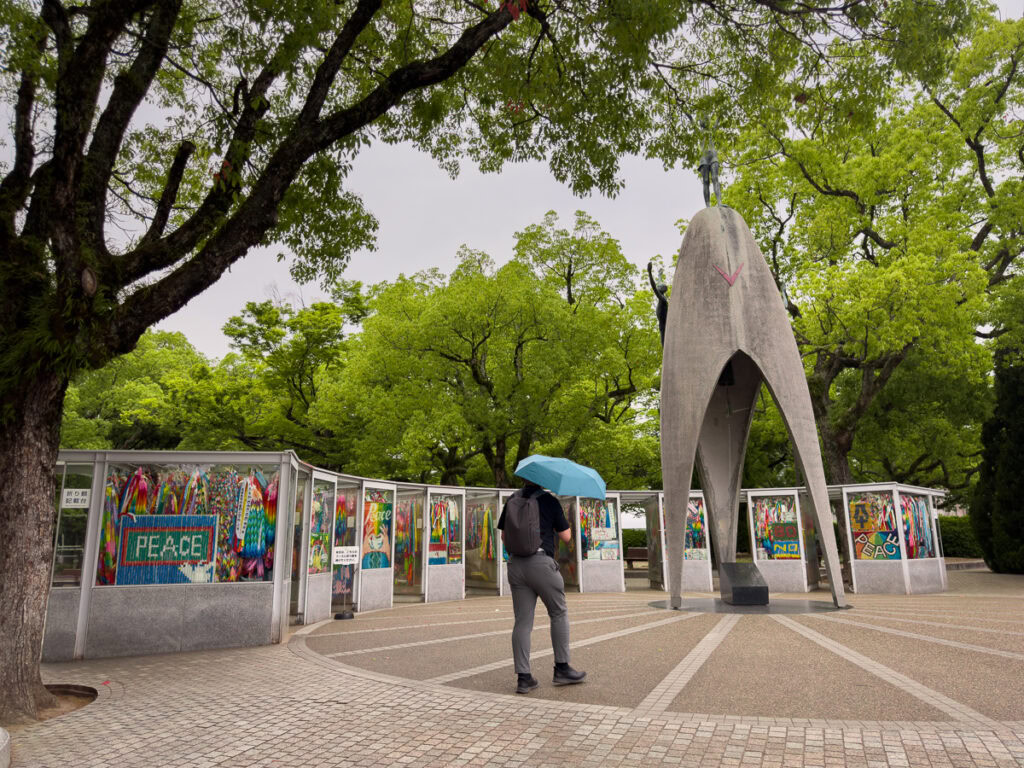
The WWII history is distressing to hear about, there’s no way to sugar-coat the immediate deaths of 70,000+ innocent people and the tens of thousands of resulting casualties from radiation sickness, but walking through these memorials serves as a powerful reminder of the cost of war as well as the resilience of those who survived and rebuilt the city.
I chose not to visit the museum, by this stage my karaoke-induced loss of voice had progressed into a nasty cough and I didn’t want to disrupt other visitors at such a poignant place. I know I’ll return to Hiroshima in the future and I’ll put it at the top of my list for next time.
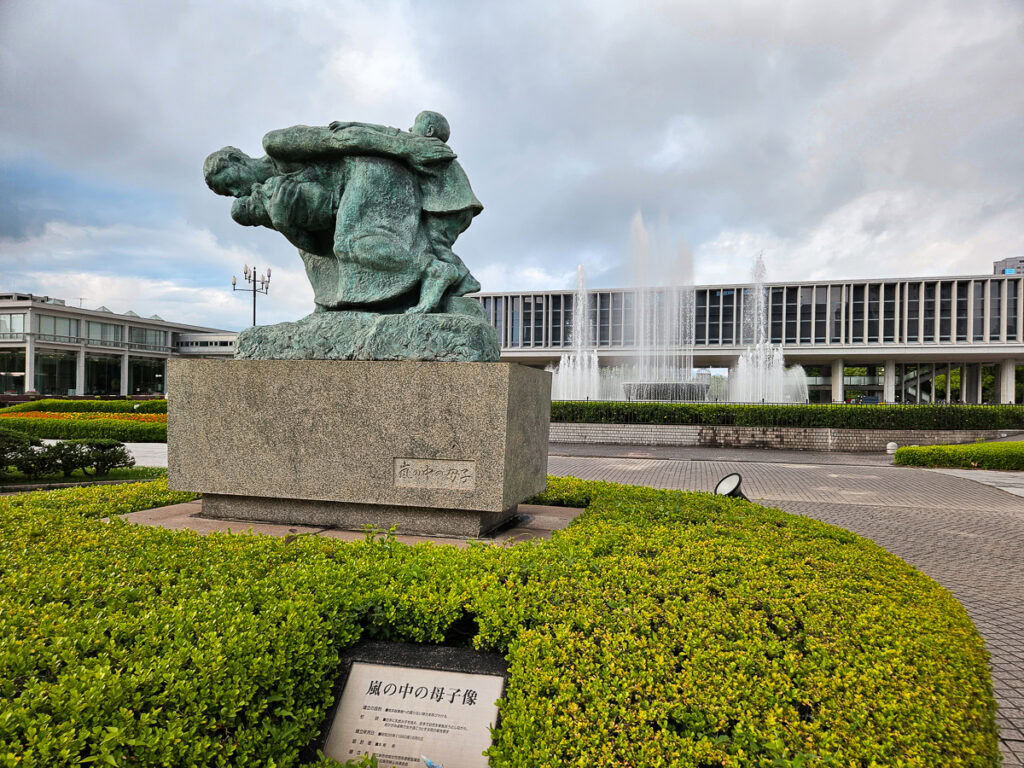
Others in the group went and said it was very harrowing and confronting, with graphic photos and displays that show the horrific consequences of nuclear weapons. I always recommend visiting places like these if you can handle the emotional toll, learning about these atrocities is vital to our collective understanding of why war is never the answer.
In spite of the tragedy it suffered in 1945, the modern city of Hiroshima is absolutely thriving with so much to offer beyond the war history. It felt more laidback than Tokyo and Osaka and less touristy than Kyoto, the food scene was buzzing, lots of peaceful areas for reflection, I really rated it.
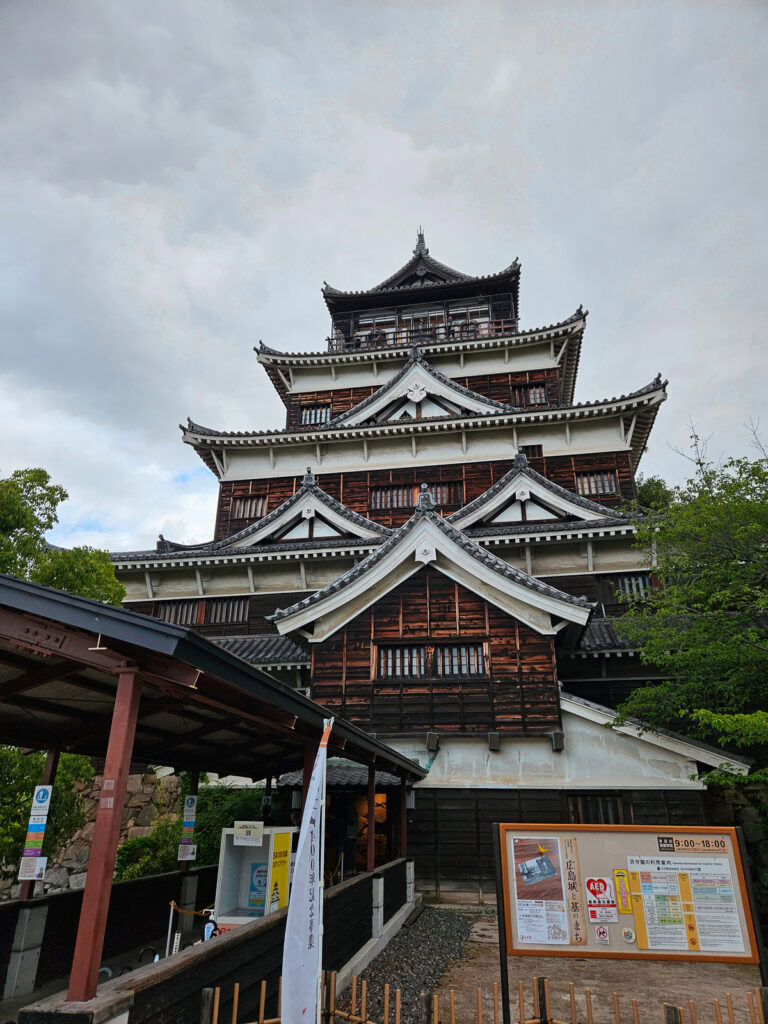
In the evening most of us were keen for another family dinner, so Billy booked us a table at a cosy okonomiyaki restaurant in the Okonomimura food hall, where the chef cooks your pancake right under your nose. The food was great but honestly I was distracted by the fact that the chef’s wife had their baby in a backpack while she was cooking, which is maybe the cutest thing I’ve ever seen.
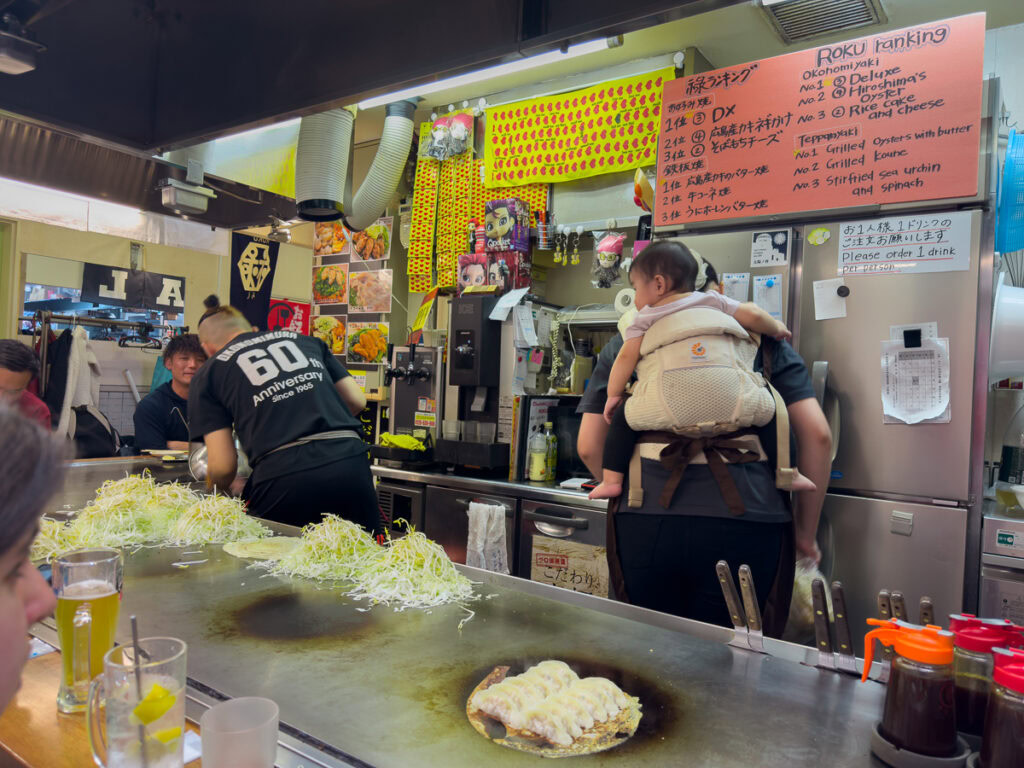
After dinner we moved on to Ken’s Bar, a cosy 2nd floor spot with 500JPY drinks ($3.45USD), card games, request-able music and friendly staff who speak perfect English. Such a vibe! But we got home by midnight before our last full day on tour.
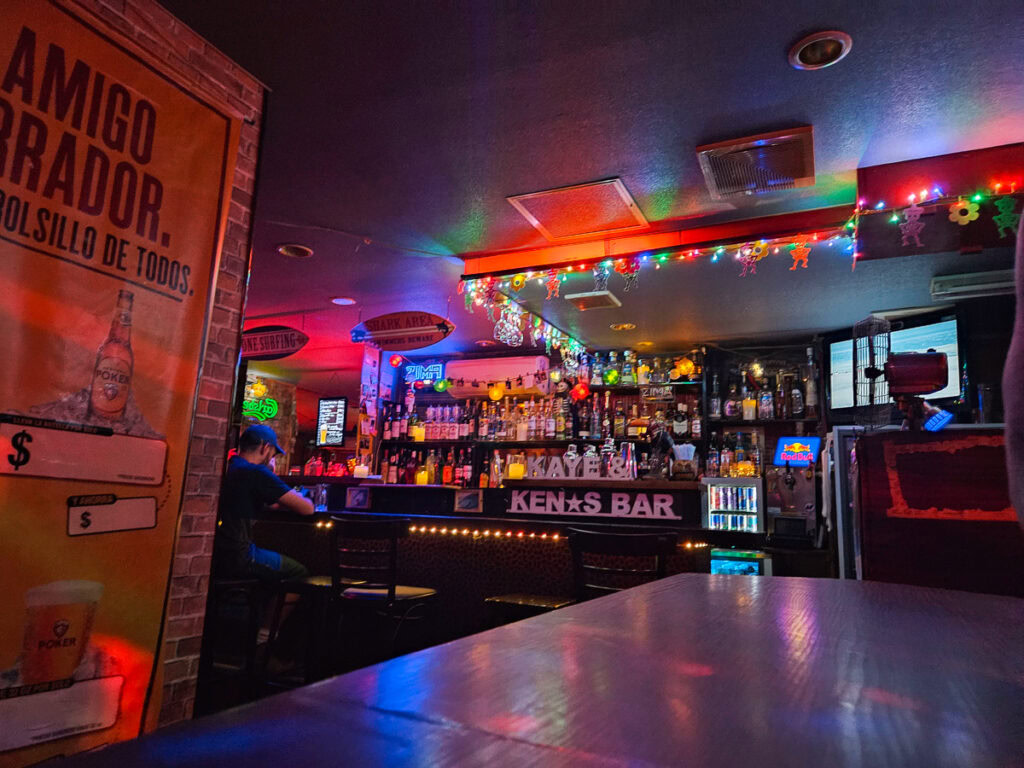
Day 13: Miyajima Island, Itsukushima Shrine, final night fun!
We were off by 7.15am to head over to Miyajima Island via train and then a short ferry ride.
Thick cloud was smothering the mountains but this made the landscape look super moody, I quite liked it for photos.

Luckily it wasn’t too windy so we got a rippled reflection of the floating torii gate of Itsukushima Shrine, before exploring the rest of the shrine complex, walking up to Daisho-in Temple, and finishing at the Hall of 1000 Mats.
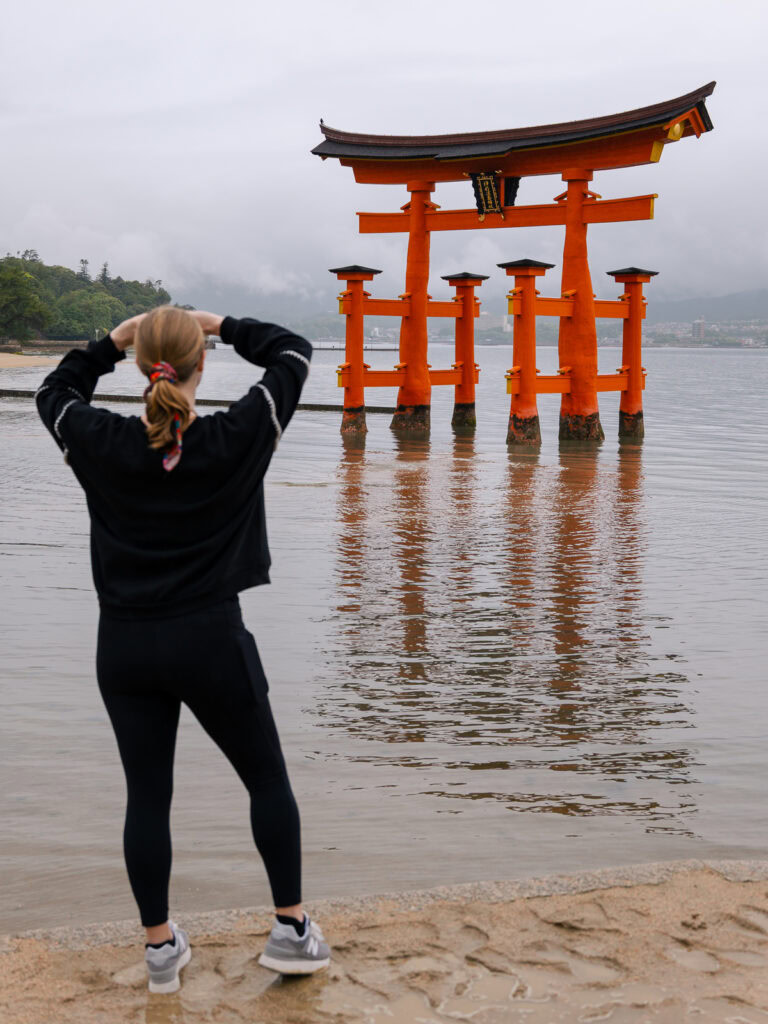
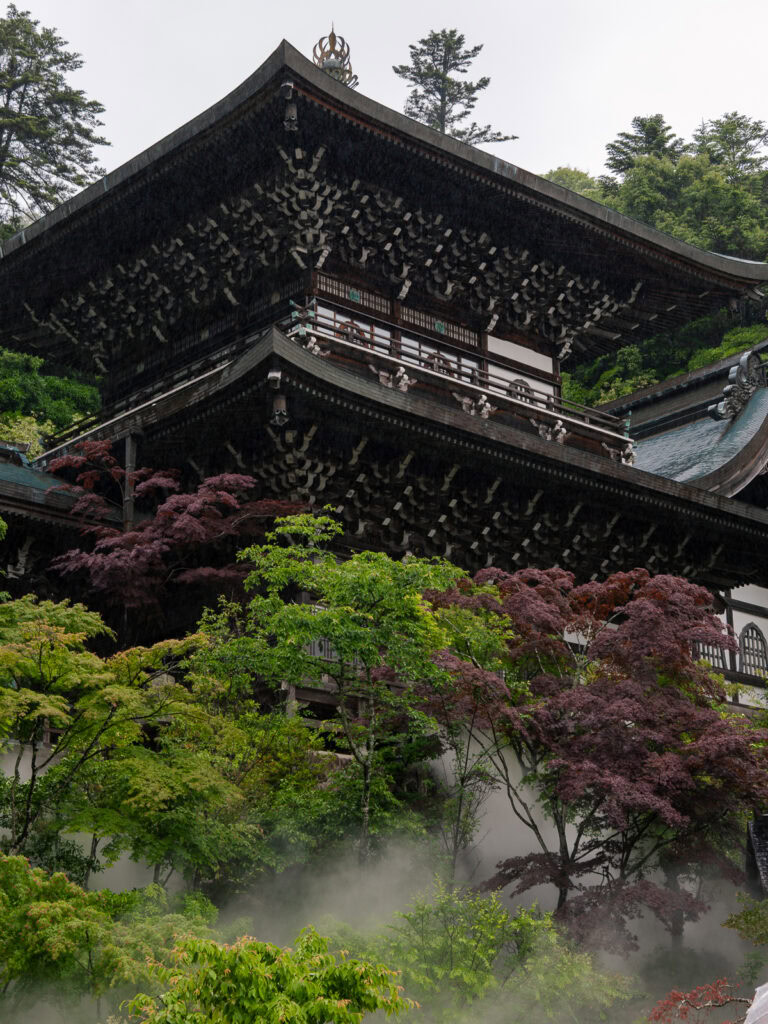
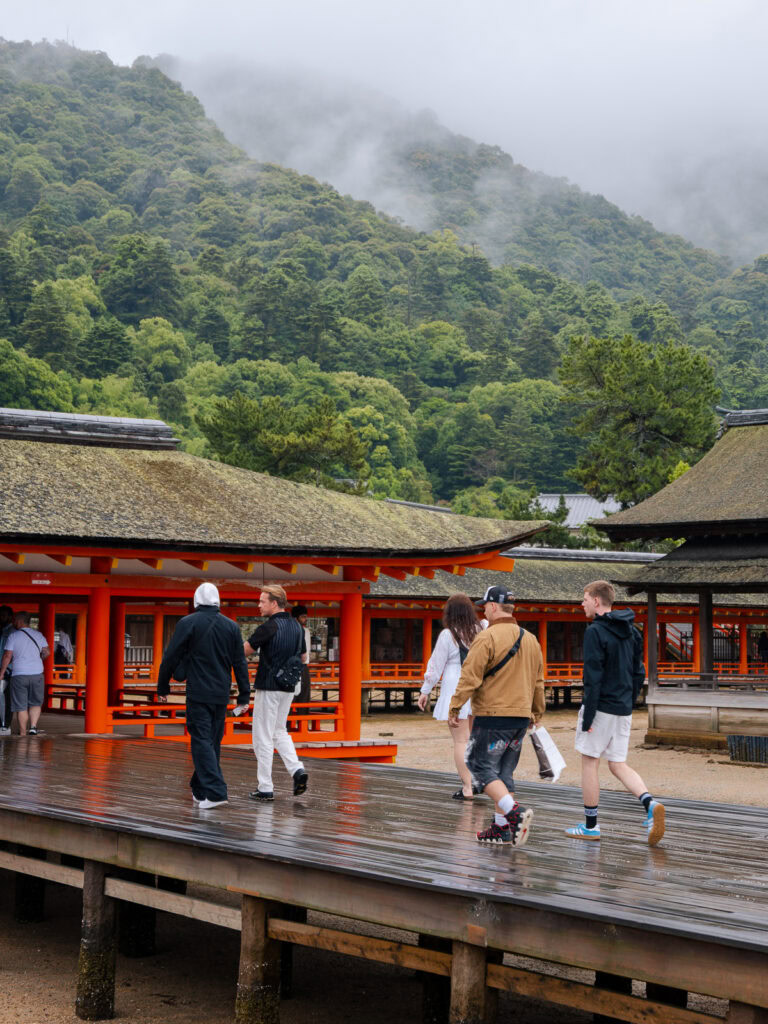
Aaaaand this marked the official end of the organised activities on tour! The rest of the day was free time to explore Miyajima Island or Hiroshima.
I was not yet ready to go back to my usual solo travel reality of making every single decision myself, so I stuck with some of my tourmates and followed Billy’s expert suggestion which took us down the main tourist street on the island to try local treats like Momiji Manju (maple leaf-shaped cake) and lemon sours.
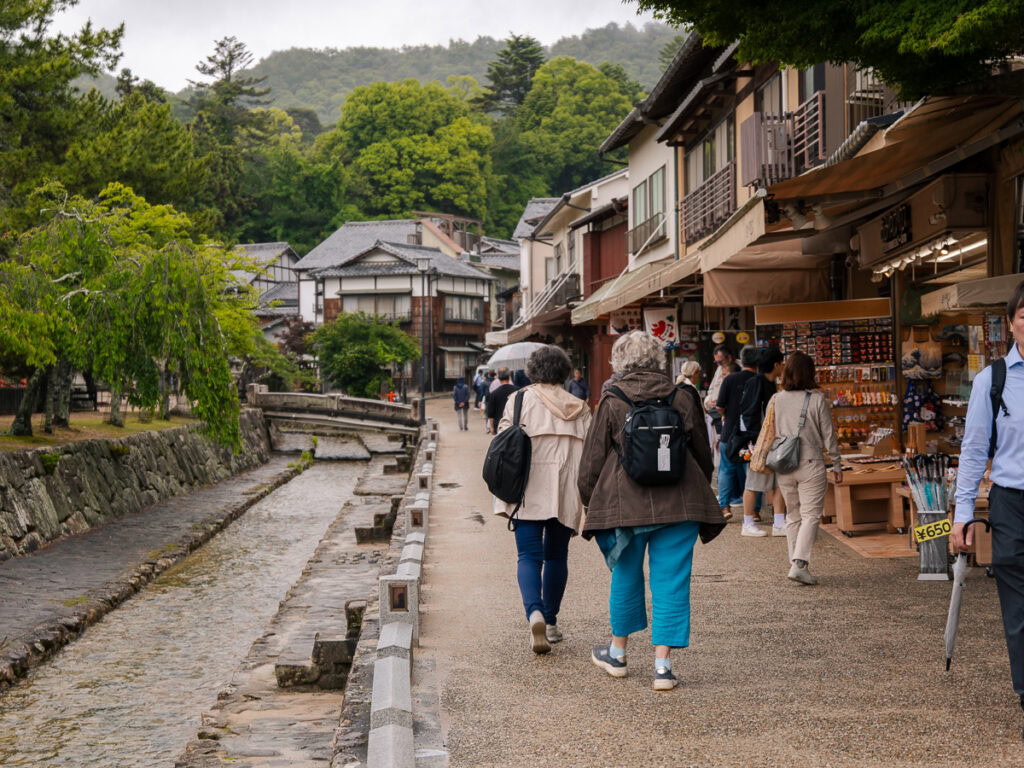
We stopped at Gebura Bar to try their gummy bear cocktails, 700JPY ($4.82USD) for the first one and then they have 200JPY refills ($1.38USD). It would’ve been rude not to!
In the evening we had our final family dinner, not included but we were all keen to eat together, then we continued the festivities throughout the night with a second visit to Ken’s Bar, one last karaoke session and then yet another stop at Ken’s Bar to round it off nicely.
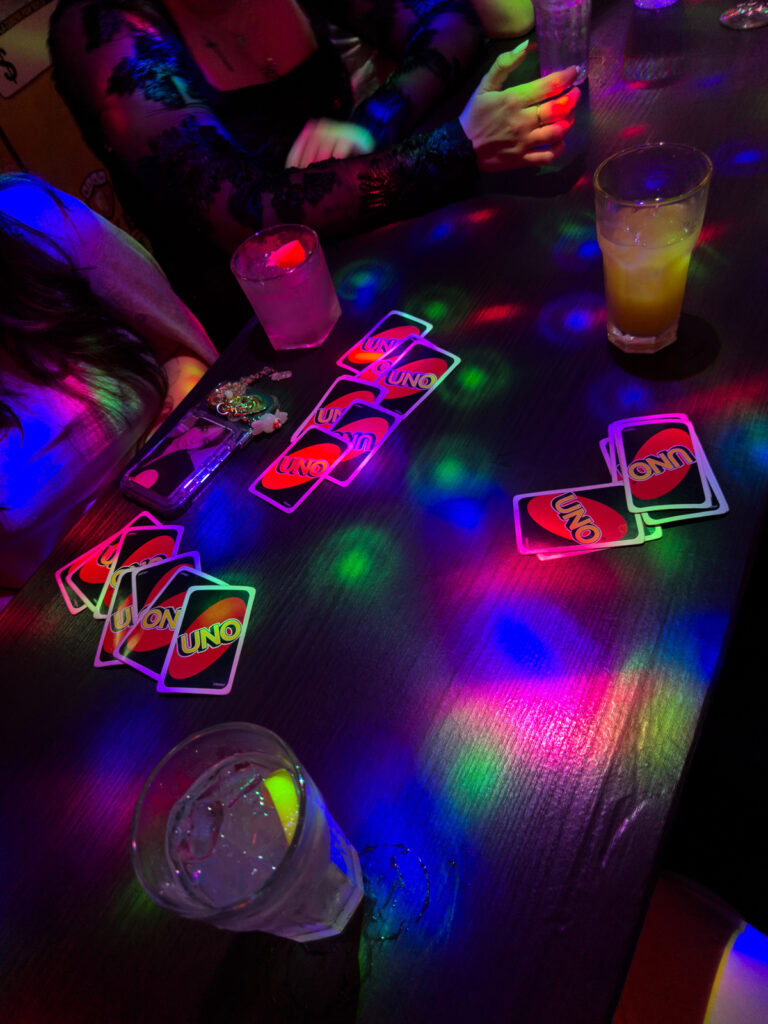
Day 14: Depart 😭
Check out of the hotel was at 11am but a one hour extension was 1000JPY ($6.70USD), I wasn’t leaving Hiroshima until mid-afternoon so I locked that in to give myself some extra time.
Some tourmates were flying out of Hiroshima to connect to flights home in Osaka or Tokyo, some were catching the Shinkansen to get to their departure airport, and a few of us had some extra time after the trip to travel solo in Japan.
Three of us plus Billy were sticking around in Hiroshima for another night so we found a European-vibe restaurant just down the road from the hotel, it was called MoreThan and the food was fantastic. Proper wood-fired pizza, delicious truffle pasta, 10/10.
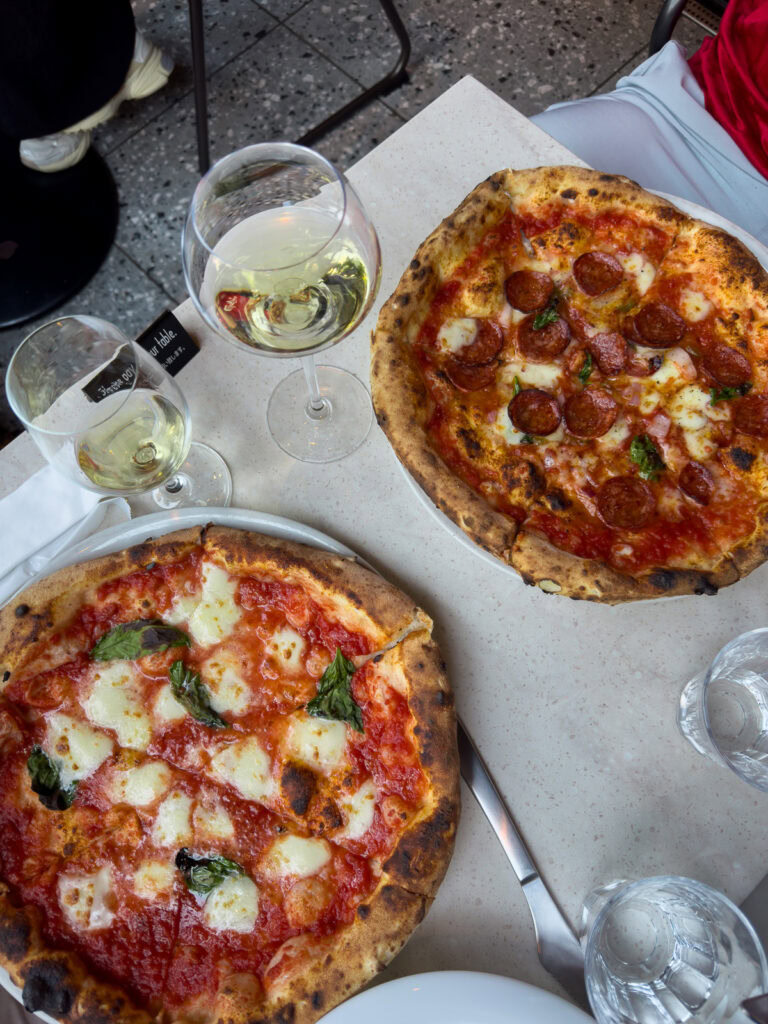
I was heading back to Osaka for a few days before Kyoto and Tokyo, so I said my sad goodbyes to Billy and the crew that were left and reverted back to my natural state as a solo traveller!
One Life Adventures Japan FAQs
Is Japan safe for solo female travellers?
Absolutely, Japan is one of the safest countries in the world for solo female travellers. Crime rates are very low, locals are generally respectful and helpful if you need (via Google Translate if necessary), overall I felt safer and more comfortable here than any other country I’ve visited.
I only had two uncomfortable interactions with sleazy men during my four weeks in Japan (two weeks on tour, two weeks solo) and both men were American 🙃
In saying that, Japan’s not perfect because nowhere is. Harassment or assault does occur, particularly on public transport, so some cities have women-only carriages at peak commuting hours.
Could you travel Japan without needing a tour?
You definitely could, Japan is very accessible for independent travellers, though the language barrier and learning curve for the public transport network can be confusing and time-consuming. The best option for you really depends on your priorities, I’ve spent time in Japan as a solo traveller as well as on a tour and they offer very different experiences.
With a tour you get to enjoy the country without worrying about any logistics, take part in activities like Kendo class or sushi-making with a bunch of friends, and get intel from an expert guide who has personal suggestions for each place you see.
If you’re travelling independently then you are totally flexible with your time, you can change your plans if you want to stay somewhere longer or leave early, and you can stick to a budget without getting sucked in by FOMO.
What if I’m over 45 and want to take this tour?
Get in touch with the One Life Adventures team! Their 18-45 age limit is reflective of the pace, activity level and experiences included in their tours, but if you’ve done your research and think One Life is right for you then chat to the team and they might be able to bend the rules for you.
How much should I budget for this tour?
The tour covers all the major costs (accommodation, transport, must-do activities in each destination) so you just need to set aside money for your food each day, any additional activities and personal spending like shopping.
If you took advantage of the included hotel breakfasts and then exclusively stick to konbini food (which you could absolutely do) then you could keep your food costs to as low as 2000JPY ($13.75USD) per day, but with some casual eateries thrown in as well as the odd nicer meal I spent around 3000-4000JPY on food per day ($20.65-$27.50USD).
The only additional activities I paid for were karaoke sessions, the kimono rental and arcade games, plus luggage transfer twice (around 2000-2500JPY for my 20kg suitcase).
One Life’s recommendation is to budget for 80,000JPY for spending money for the whole tour, which comes to around 5700JPY per day (just under $40USD).
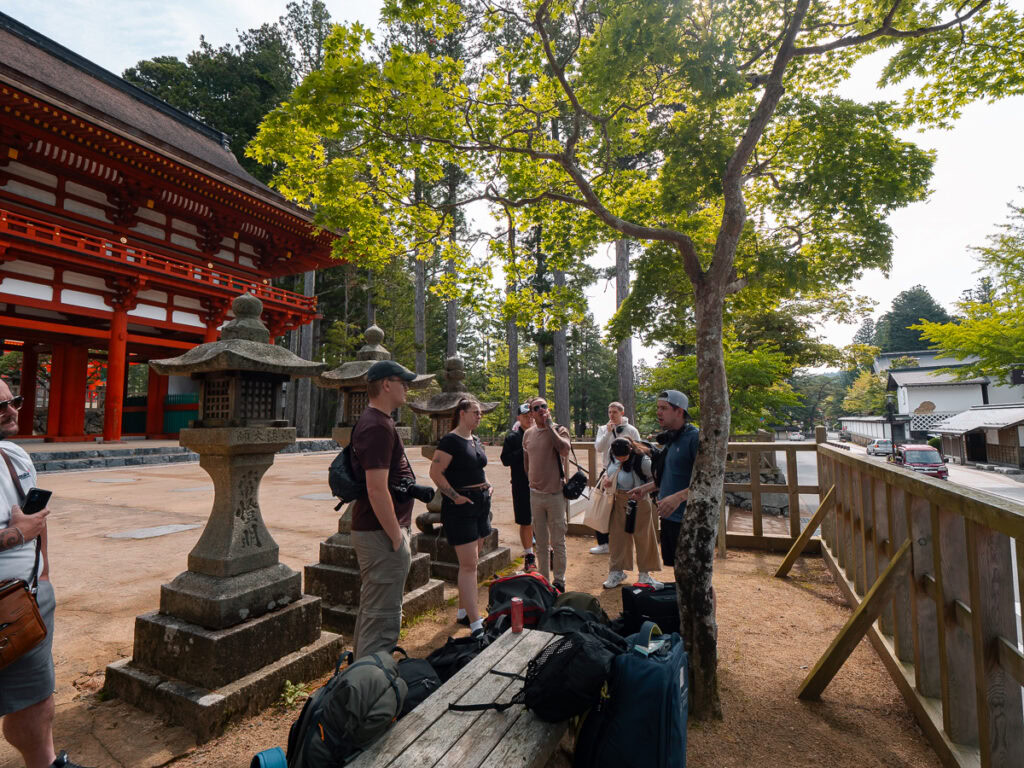
Was there much free time on the tour?
There was free time in every stop, with a decent chunk in Osaka, Kyoto and Hiroshima. There was some in Tokyo but the city is so huge that I’d recommend arriving early to spend some time seeing parts that the tour doesn’t cover.
What activities were included on the tour?
Loads! Sushi making class in Tokyo, local guided tours in Kyoto and Hiroshima, a food tour in Osaka, matcha tea ceremony, karaoke session, Kendo class and lots more. I’ve put a full list of the included activities in the first section of the blog.
How much luggage can you bring?
Your bag needs to fit the Shinkansen luggage rules, which allow bags with maximum dimensions of 160cm (h + w + l) without a reservation. You’ll also be carrying your bag yourself, sometimes through train stations with stairs and no escalator and sometimes to hotels 10 minutes away from stations, so pack what you can carry.
One Life recommends a maximum of 15kg in a backpack rather than a suitcase, but I took a 20kg suitcase and it was fine.
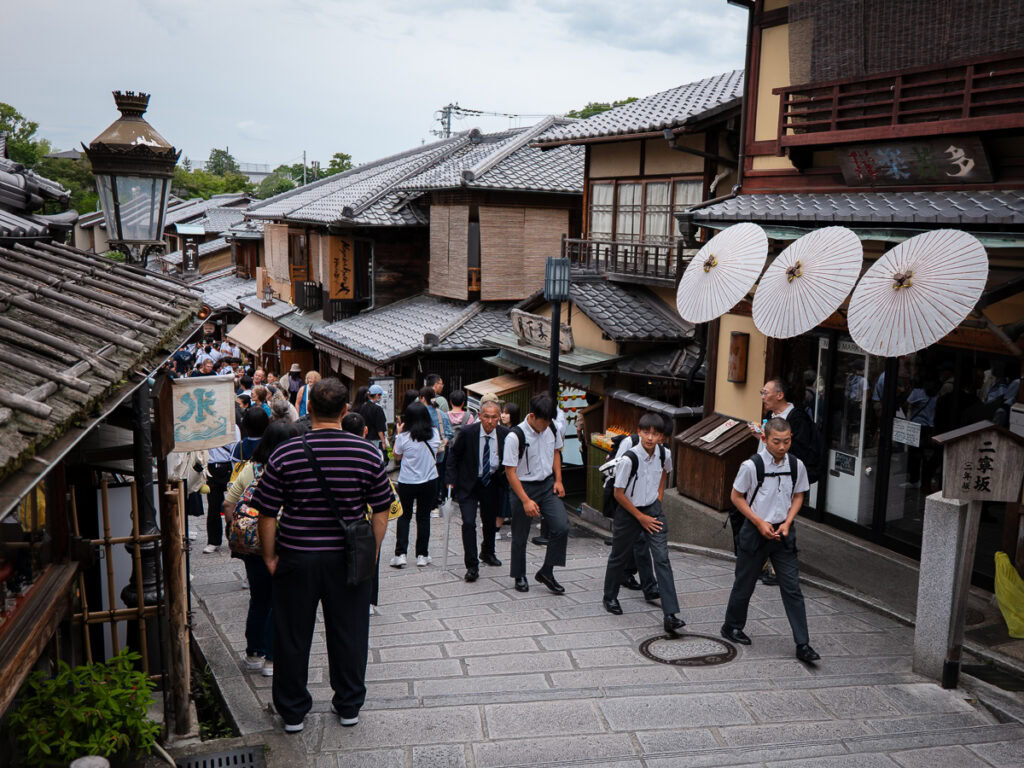
How do you get between cities?
The tour gets you all around Japan using public transport, from the Shinkansen bullet trains to local trains, metro, cable cars and buses.
Do I need cash for this Japan tour?
Japan still uses a lot of cash and you’ll need cash for some casual eateries and bars, games arcades, market stalls and small souvenir shops, but you can withdraw cash at any konbini (7-Eleven is the cheapest) so you’ll never be stuck with no money.
Where else does One Life Adventures go?
They have tours in Indonesia, Thailand, Vietnam, the Philippines, South Korea, India, Nepal, Sri Lanka, Morocco and Costa Rica. You can save 10% off any One Life Adventures tour with the promocode FINDINGALEXX 💃🏼
What eSIM should I get in Japan?
I have a full Japan eSIMs guide comparing and listing the best options for different trip lengths and data requirements, but my top recommendations for trips under a month are MobiMatter (20GB for $13.99, 50GB for $29.99), Voye Unlimited (2GB high speed per day, 15 days for $23 and 30 days for $39) and Supera Link (5GB high speed per day, 15 days for $28.04 and 30 days for $49.88).
For longer trips, GlobalYO’s 200GB/60 day option is $109.99 or Maya’s 90 day unlimited with 5GB high speed data per day is the best value unlimited option for three months at $141.27.
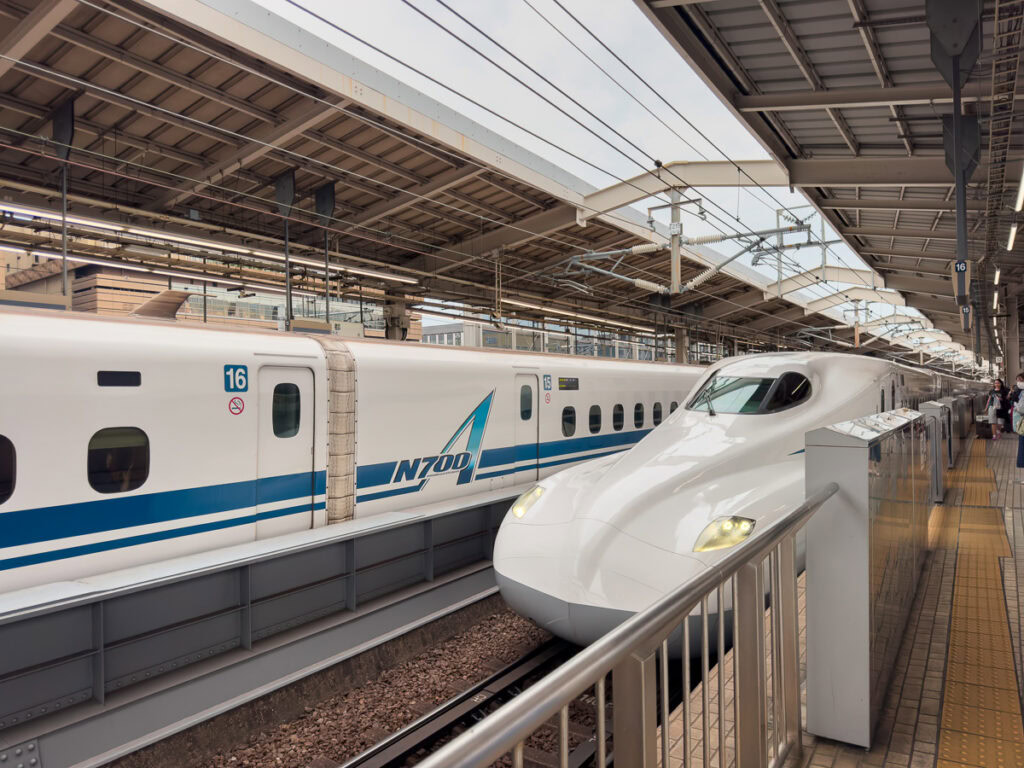
Final thoughts on touring Japan with One Life Adventures
So would I do this all again? Absolutely.
There’s something special about One Life Adventures, their epic itineraries attract equally epic travellers and the activity inclusions double as intensive group bonding sessions, which is what reeeeally makes or breaks a tour. Throw in top-tier guides, a good mix of sightseeing, bucket list experiences and free time to roam on your own, and you’ve got the makings of a perfect group tour experience.
I’m writing this two weeks after our Japan tour finished and we’ve already locked in our next reunion for 8 months from now, with a few new faces joining us! India & Nepal, here we come 💃🏼
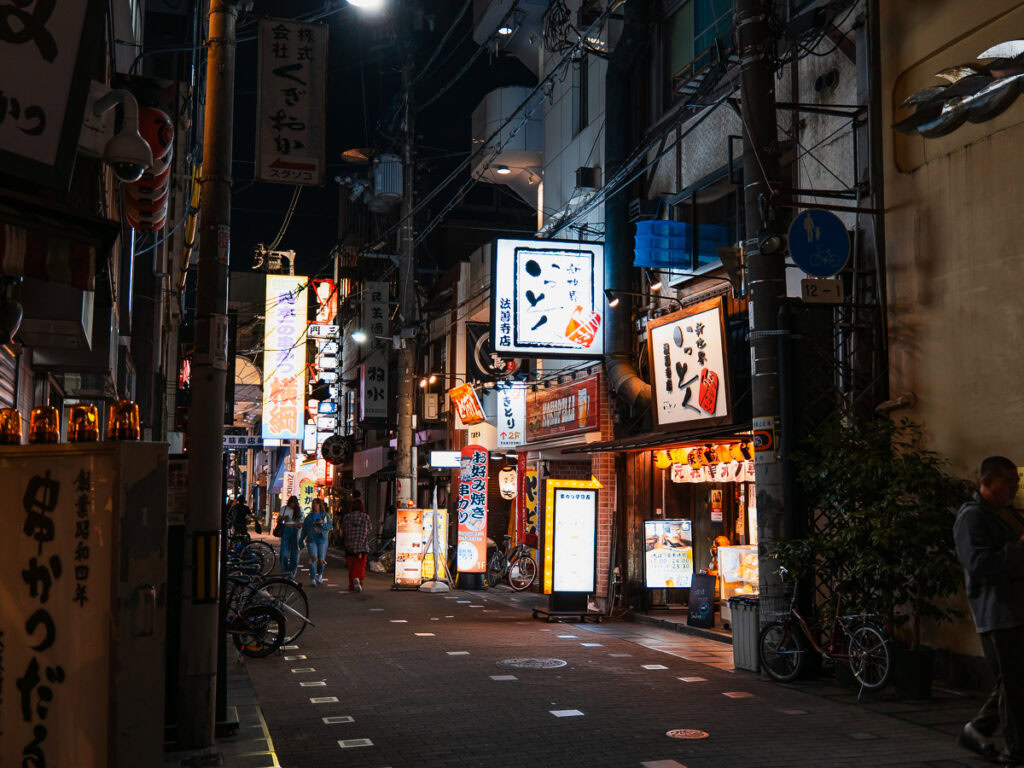
Japan blew me away too, but it also confirmed my suspicions about why a tour made sense for my first big trip here. The country is super safe and solo-traveller-friendly, but it’s definitely not easy.
Getting from A to B requires strategy and pre-planning, every cultural experience comes with unspoken etiquette, and during my solo days before and after the tour I was charging my phone at least twice a day thanks to my constant use of Google Maps, Google Translate and just normal Google to answer every question that popped into my head. Having Billy as our guide saved so much time, stress and phone battery! And his banter was alright too I guess.
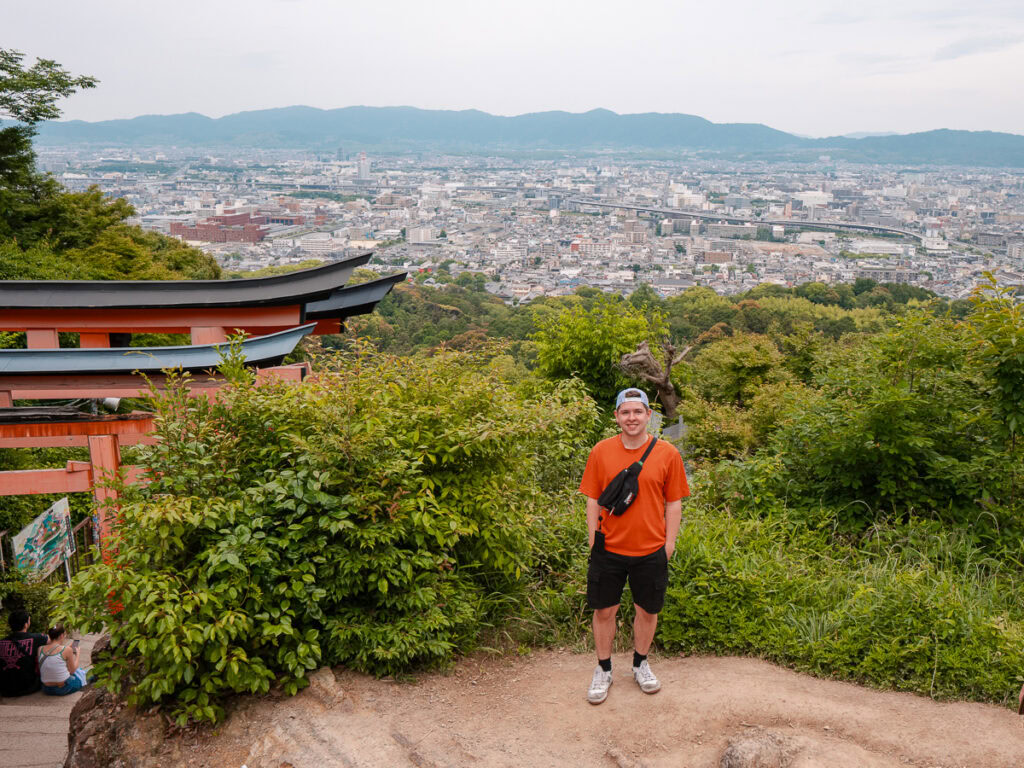
Now obviously I adore travelling solo, but some destinations lend themselves better to group travel rather than adventuring alone, and I really think Japan is one of them.
Kendo class is more fun when you’re smacking the shit out of your friend instead of a random person, a karaoke bar with your travel buddies is a lot less daunting than taking the stage solo, and having people who can watch your bags at the train station while you do a last minute pre-Shinkansen konbini run is something you don’t even appreciate until it’s gone.
If you have any questions about visiting Japan with One Life Adventures then let me know in the comments and I’ll get back to you as soon as I can, and don’t forget to use the promocode FINDINGALEXX to get 10% off when you book 🥰
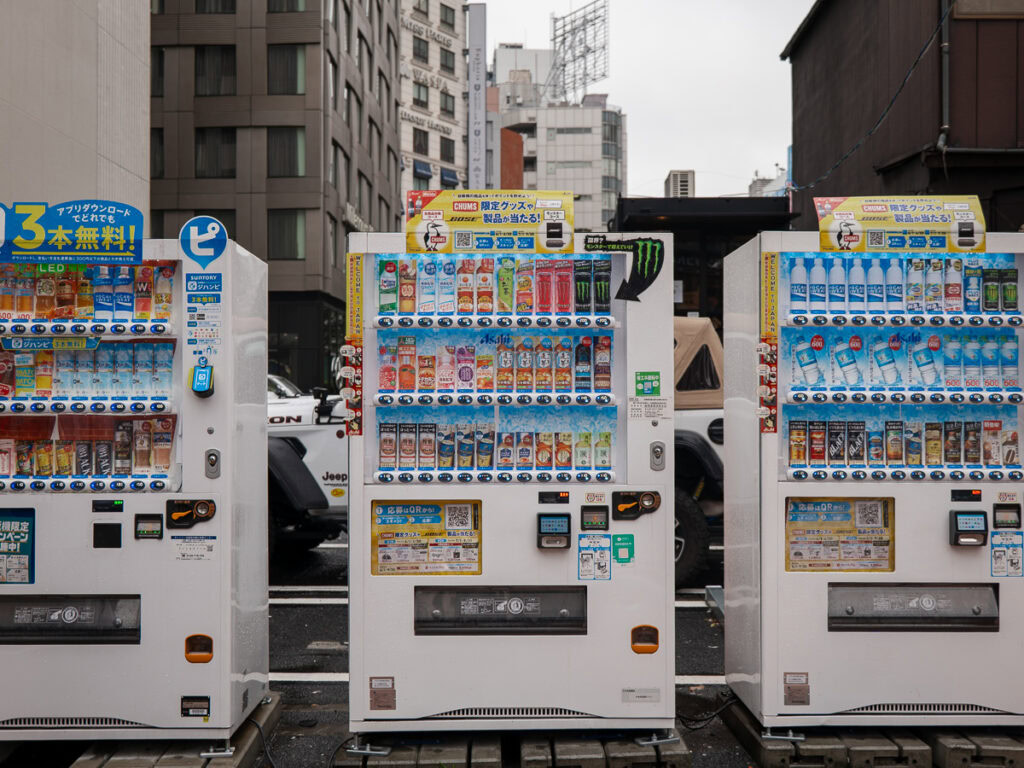
JAPAN TRAVEL GUIDES YOU MIGHT LIKE:
OTHER TOURS TO ADD TO YOUR BUCKET LIST:
- Travelling Sri Lanka with One Life Adventures
- Travelling Borneo with G Adventures
- Travelling Morocco with G Adventures
TRAVELLING SOLO? YOU MIGHT ALSO LIKE:
- Solo travel guide to Sri Lanka
- Solo travel guide to Kuala Lumpur, Malaysia
- Solo travel guide to Bangkok, Thailand
- Solo travel guide to the Maldives
- 30+ essential solo female travel safety tips
- The ultimate solo travel packing list
MY GO-TO TRAVEL PLANNING RESOURCES
Flights ✈️ I use Skyscanner to find the best flights for my trip and then I’ll always book direct with the airline to protect myself from having to deal with dodgy third parties if anything goes wrong.
Trains 🚂 If I’m travelling through Europe, I try to travel by train wherever possible! For an extended trip (2+ weeks) I’ll calculate if a Eurail Pass is worth it, or I’ll book point-to-point tickets through RailEurope or the local train operator.
Accommodation 🛎️ I book almost all of my accommodation through booking.com, they have a user-friendly website + app and many of their options are free cancellation, easily cancelled with a simple click of a button.
Activities 🗽I use GetYourGuide, Klook and Viator to look for activities in the places I visit, or I just Google ‘things to do in [city]’! P.S. If you book anything on Klook you can use the promocode FINDINGALEXXKLOOK to get 10% off
Travel cards 💳 I’m a Wise gal through and through, they’ve been my chosen travel card for more than five years now. You can easily top up your card from your bank account or through Apple Pay, convert your money to local currency, and spend money with minimal fees and the best exchange rates around.
Travel insurance 🩺 I use Cover-More NZ travel insurance for my own trips, I have a comprehensive policy and I’ve only had good experiences with them. Cover-More also has an Australian company, but if you’re from elsewhere then two popular insurance options for global travellers are SafetyWing (cheaper policy, lower coverage) and World Nomads (more expensive but significantly better coverage).
Luggage 💼 I travel with Samsonite Cosmolite suitcases, one 75cm check in bag and a 55cm carry on bag, and I absolutely adore them and will never travel with anything else! They are SUPER lightweight (2.8kg and 1.9kg respectively) so I have much more space for my actual stuff.
Camera gear 📸 I use a iPhone 15 Pro Max for phone photos/videos, and my camera kit includes a Lumix S9 (incredible lightweight full-frame camera, a game changer for travel creators!) with a 20-60mm lens, a Lumix G9 with an 8-18mm and 12-60mm lens, a DJI Mini 3 Pro drone and a GoPro Hero 10. I do all my writing and editing on my ASUS Zenbook 14, it’s lightweight but powerful enough for photo editing and intense blogging sessions.
